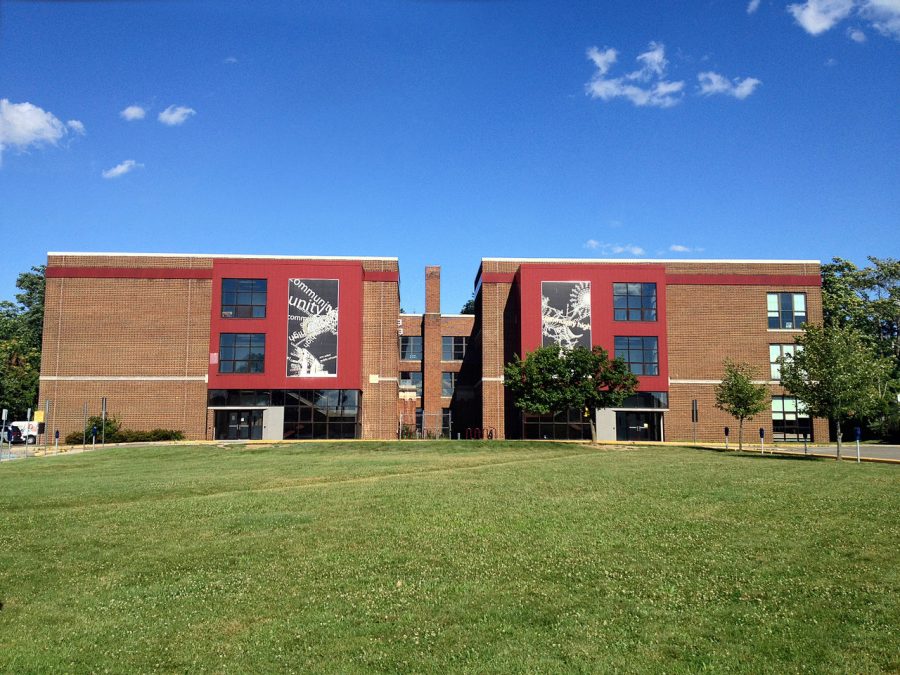Minneapolis charter schools: MN Association of Charter Schools
MN Association of Charter Schools
185 Locations in this Category
map pin icon
View Map
City: St. Paul
Grades: PreK – 8
Programmatic Focus: Dual Language Program (Spanish and English)
Authorizer: University of St. Thomas
City: West St. Paul
Grades: 9-12
Programmatic Focus: Project-based Learning. Environmental Education. Personalized Growth (Learning) Plans
Authorizer: Osprey Wilds
City: Vadnais Heights
Grades: K-12
Programmatic Focus: Science focused curriculum with courses in Animal Science, Plant Science, Food Science, Environmental Science and Mechanical Science/Engineering. The curriculum focuses on hands-on and experiential learning opportunities.
Authorizer: Osprey Wilds
City: St. Paul
Grades: PreK-8
Programmatic Focus: Language Literacy (Hmong, Spanish & English)
Authorizer: Novation Education Opportunities (NEO)
City: Edina
Grades: K-8
Programmatic Focus: Classical, liberal arts, challenging, and inspiring education
Authorizer: Novation Education Opportunities (NEO)
City: Minneapolis
Grades: 6-12
Programmatic Focus: Integrated STEM and culturally-responsive mentorship
Authorizer: Innovative Quality Schools
City: Northfield
Grades: 6-12
Programmatic Focus: Arcadia Charter School envisions a supportive learning community that, through collaboration and student-driven, project-based learning, encourages and assists students to:
• Express themselves creatively through the visual, literary, and performing arts.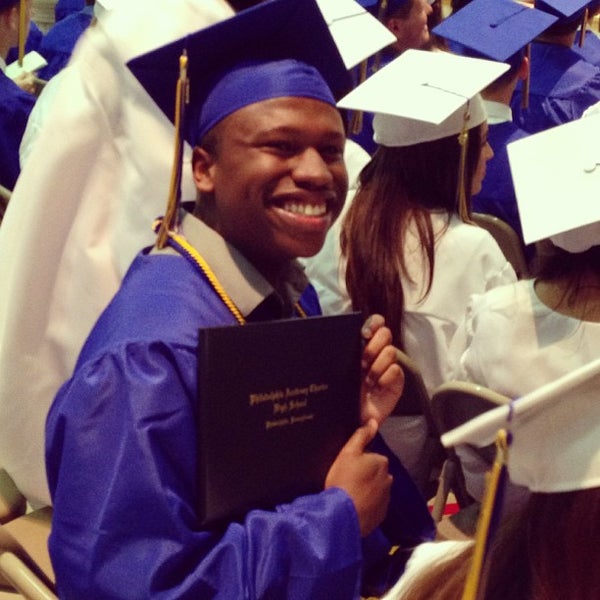
• Use technology with innovation, imagination, and responsibility.
• Develop critical thinking and creative problem solving skills.
• Construct knowledge and meaning for themselves.
• Value, advocate, and strive for the wellness of the whole person.
• Be empowered to act as local citizens within a rapidly changing global community.
Authorizer: Northfield Public School District
City: Isanti
Grades: K-8
Authorizer: Minnesota Guild of Public Charter Schools
City: Savage
Grades: K-8
Programmatic Focus: Core Knowledge
Authorizer: Friends of Education
City: Shakopee
Grades: K-7
Programmatic Focus: STEM
Authorizer: Novation Education Opportunities (NEO)
City: St.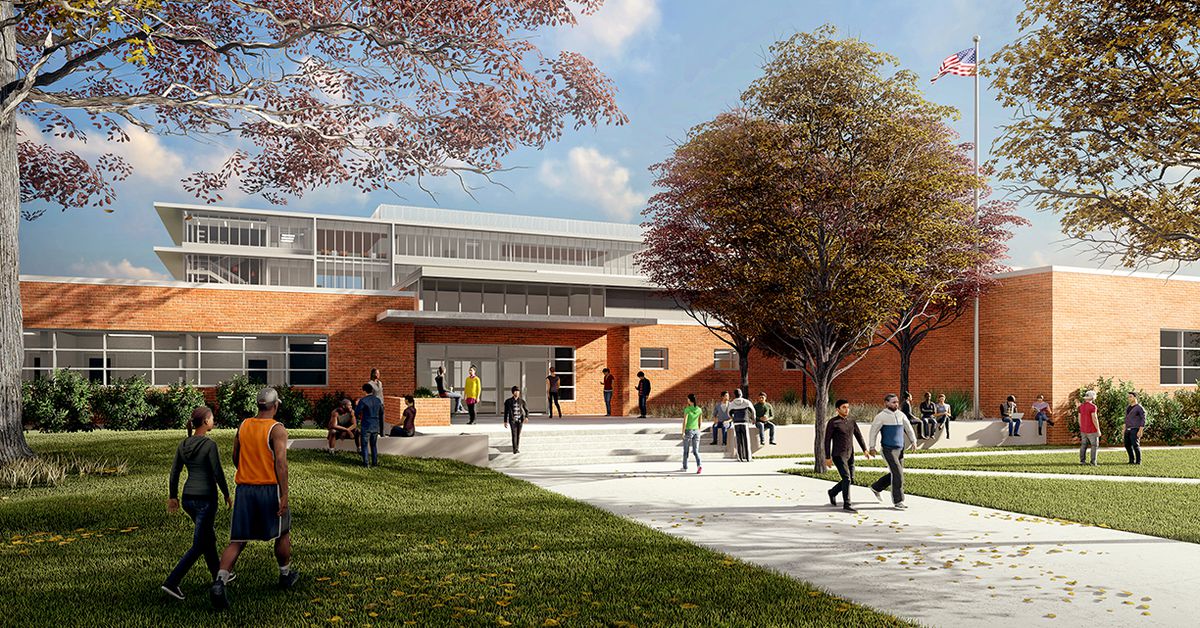
Grades: K-8th
Programmatic Focus: To provide high quality educational opportunities for the whole child built on the three foundational pillars of Prepared Mind, Healthy Body, and Performance Character
Authorizer: Volunteers of America – Minnesota (VOA)
City: Brooklyn Park
Grades: PreK-8
Programmatic Focus: Academics + Athletics + Character
Authorizer: Volunteers of America – Minnesota (VOA)
City: Minneapolis
Grades: 9-12
Programmatic Focus: • Small class sizes in a teen and family friendly atmosphere
• Supportive, trauma-informed staff use positive, strength-based approaches; students are respected and held to a high standard of personal honor
• Post-secondary enrollment, individualized learning options and work-based learning programs available
• Engaging elective courses including robotics, music production and recording, video game design, song writing and poetry, drumming, graphic design
• Culturally relevant curriculum, including African American history, American Indian history and culture, Dakhóta studies, Indigenous Literature and arts
Authorizer: Minnesota Guild of Public Charter Schools
City: Minneapolis
Grades: PreK-8
Programmatic Focus: Language (Spanish & English)
Authorizer: Osprey Wilds
City: Bemidji
Grades: K-8
Programmatic Focus: Place-based learning.
Authorizer: Osprey Wilds
City: St. Paul
Grades: 6-12
Programmatic Focus: Community Engagement, interdisciplinary seminars, and project-based learning
Authorizer: Novation Education Opportunities (NEO)
City: Minneapolis
Grades: K-8th
Programmatic Focus: Dakota & Ojibwe Language Immersion
Authorizer: Innovative Quality Schools
City: Crystal
Grades: K-8
Programmatic Focus: Character Education and Daily Spanish focus. Other curriculums include Core Knowledge Social Studies, FOSS (K-5) and SEPEP (6-8) for Science, and Math Expressions K-5 and Big Ideas 6-8 for math curriculum.
Authorizer: Innovative Quality Schools
City: Tofte
Grades: K-5th
Programmatic Focus: Multi-grade, environment
Authorizer: Volunteers of America – Minnesota (VOA)
City: Bloomington
Grades: 6-12
Programmatic Focus: Full and part time online learning personalized and available to any student who is a MN resident
Authorizer: Innovative Quality Schools
2022 Best Charter Elementary Schools in the Minneapolis-St.

Skip to Main Content
Niche requires Javascript to work correctly. Please turn it on if you’re experiencing issues.
1-25 of 83 results
-
#1 Best Charter Elementary Schools in Minneapolis-St. Paul Area
#1 Best Charter Elementary Schools in Minneapolis-St.
Paul Area.
Nova Classical Academy Elementary School
Blue checkmark.
Nova Classical Academy, MN,
K-5,
17 Niche users give it an average review of 3.2 stars.
Featured Review: Parent says
My daughter was a transfer student from another charter school. The previous school she went to wanted to put her in special education. I disagreed with this and turned that down. So when my daughter….
Read 17 reviews.
Overall Niche Grade: A+,
Students: 484,
Student-Teacher Ratio: 21 to 1,
-
#2 Best Charter Elementary Schools in Minneapolis-St. Paul Area
#2 Best Charter Elementary Schools in Minneapolis-St. Paul Area.
St. Croix Preparatory Academy Lower School
St. Croix Preparatory Academy, MN,
K-4,
8 Niche users give it an average review of 3.3 stars.
Featured Review: Parent says
We have absolutely loved SCPA since day 1. Our children are now in the 7th and 4th grades. Teachers are awesome. K-12 together in one building makes for wonderful interactions between upper and lower….
Read 8 reviews.
Overall Niche Grade: A+,
Students: 450,
Student-Teacher Ratio: 17 to 1,
-
#3 Best Charter Elementary Schools in Minneapolis-St. Paul Area
#3 Best Charter Elementary Schools in Minneapolis-St. Paul Area.
Yinghua Academy
Blue checkmark.
Public School,
MINNEAPOLIS, MN,
K-8,
15 Niche users give it an average review of 3.6 stars.
Featured Review: Parent says
This school is amazing – the teachers, administrators, and students. My son has been attending for 6 years. It is very structured – and can seem overwhelming (imagine being spoken to all day in a….
Read 15 reviews.
Overall Niche Grade: A+,
Students: 831,
Student-Teacher Ratio: 15 to 1,
View nearby homes Virtual tour
-
#4 Best Charter Elementary Schools in Minneapolis-St. Paul Area
#4 Best Charter Elementary Schools in Minneapolis-St.
Paul Area.
Eagle Ridge Academy Lower School
Blue checkmark.
Eagle Ridge Academy Charter School, MN,
K-5,
Overall Niche Grade: A+,
Students: 825,
Student-Teacher Ratio: 16 to 1,
-
#5 Best Charter Elementary Schools in Minneapolis-St. Paul Area
#5 Best Charter Elementary Schools in Minneapolis-St. Paul Area.
Aspen Academy
Blue checkmark.
Public School,
SAVAGE, MN,
K-8,
18 Niche users give it an average review of 4.3 stars.
Featured Review: Works Here says
Aspen Academy is a great K-8 school! The students, staff, families and community always work together to do what is best for kids and finds ways to get us what we need! Kids are kind to each other.
…
Read 18 reviews.
Overall Niche Grade: A,
Students: 647,
Student-Teacher Ratio: 22 to 1,
View nearby homes Virtual tour
-
#6 Best Charter Elementary Schools in Minneapolis-St. Paul Area
#6 Best Charter Elementary Schools in Minneapolis-St. Paul Area.
International Spanish Language Academy
Blue checkmark.
Public School,
EDINA, MN,
PK, K-6,
6 Niche users give it an average review of 4.3 stars.
Featured Review: Parent says
ISLA has been such an incredible school for our children. Our kids love going to school, the staff is incredibly loving, nurturing and skilled. I’m so impressed with the IB curriculum and the….
Read 6 reviews.
Overall Niche Grade: A,
Students: 380,
Student-Teacher Ratio: 21 to 1,
-
#7 Best Charter Elementary Schools in Minneapolis-St. Paul Area
#7 Best Charter Elementary Schools in Minneapolis-St. Paul Area.
Seven Hills Preparatory Academy
Blue checkmark.
Seven Hills Preparatory Academy, MN,
K-5,
Overall Niche Grade: A,
Students: 560,
Student-Teacher Ratio: 14 to 1,
-
#8 Best Charter Elementary Schools in Minneapolis-St.
Paul Area
#8 Best Charter Elementary Schools in Minneapolis-St.
Paul Area.
Twin Cities German Immersion School
Public School,
SAINT PAUL, MN,
K-8,
2 Niche users give it an average review of 4.5 stars.
Featured Review: Middle School Student says
I am a student in 6th grade as I’m writing this and I recommend this school but I would start early so if your coming here at my age knowing no german than thats may be a bad idea because it a new….
Read 2 reviews.
Overall Niche Grade: A minus,
Students: 587,
Student-Teacher Ratio: 14 to 1,
-
#9 Best Charter Elementary Schools in Minneapolis-St. Paul Area
#9 Best Charter Elementary Schools in Minneapolis-St. Paul Area.
DaVinci Academy of Arts & Science
Blue checkmark.
Public School,
HAM LAKE, MN,
K-8,
16 Niche users give it an average review of 3.
4 stars.
Featured Review: Alum says
My childhood school, was here from K-5th and had the best experience ever! Great teachers, facilities, curriculum and opportunities. Absolutely would recommend..
Read 16 reviews.
Overall Niche Grade: A minus,
Students: 910,
Student-Teacher Ratio: 16 to 1,
-
#10 Best Charter Elementary Schools in Minneapolis-St. Paul Area
#10 Best Charter Elementary Schools in Minneapolis-St. Paul Area.
Parnassus Prep School-Grammar
Parnassus Preparatory Charter School, MN,
K-4,
2 Niche users give it an average review of 3.
5 stars.
Featured Review: Parent says
Excellent Teachers who encourage students to move ahead academically. Teachers respond to emails and are always eager to hear from parents. The student population is very diverse which has its own….
Read 2 reviews.
Overall Niche Grade: B+,
Students: 652,
Student-Teacher Ratio: 19 to 1,
-
#11 Best Charter Elementary Schools in Minneapolis-St. Paul Area
#11 Best Charter Elementary Schools in Minneapolis-St. Paul Area.
Seven Hills Preparatory Academy Richfield Elementary School
Blue checkmark.
Seven Hills Preparatory Academy, MN,
K-5,
Overall Niche Grade: B+,
Students: 273,
Student-Teacher Ratio: 14 to 1,
-
#12 Best Charter Elementary Schools in Minneapolis-St. Paul Area
#12 Best Charter Elementary Schools in Minneapolis-St. Paul Area.
World Learner Charter School
Blue checkmark.
Public School,
CHASKA, MN,
1-8,
Overall Niche Grade: B+,
Students: 200,
Student-Teacher Ratio: 17 to 1,
-
#13 Best Charter Elementary Schools in Minneapolis-St. Paul Area
#13 Best Charter Elementary Schools in Minneapolis-St. Paul Area.
Southside Family Charter School
Public School,
MINNEAPOLIS, MN,
K-8,
Overall Niche Grade: B+,
Students: 120,
Student-Teacher Ratio: 12 to 1,
-
#14 Best Charter Elementary Schools in Minneapolis-St. Paul Area
#14 Best Charter Elementary Schools in Minneapolis-St. Paul Area.
Lakes International Language Academy – Lower School
Blue checkmark.
Lakes International Language Academy, MN,
1-5,
3 Niche users give it an average review of 5 stars.
Featured Review: Parent says
Making the leap to LILA was the best thing that happened to our family. We came from the immersion and stayed for the IB. We couldn’t be happier with the staff, the style, and the community..
Read 3 reviews.
Overall Niche Grade: B+,
Students: 617,
Student-Teacher Ratio: 15 to 1,
-
#15 Best Charter Elementary Schools in Minneapolis-St. Paul Area
#15 Best Charter Elementary Schools in Minneapolis-St. Paul Area.
PACT Charter School | Elementary Campus
Blue checkmark.
PACT Charter School, MN,
K-6,
10 Niche users give it an average review of 3.6 stars.
Featured Review: Parent says
We got into PACT in 2018 and right away we could see a huge improvement from the elementary public school we came from and PACT. The teachers really go above and beyond to ensure my daughters are getting all the help they need. I love the emphasis on character building as well as academics.
The small school feel as well as…We have also made some great friendships with other students and parents. We genuinely love this community. Highly recommend PACT!.
Read 10 reviews.
Overall Niche Grade: B,
Students: 340,
Student-Teacher Ratio: 12 to 1,
-
#16 Best Charter Elementary Schools in Minneapolis-St. Paul Area
#16 Best Charter Elementary Schools in Minneapolis-St. Paul Area.
Level Up Academy
Blue checkmark.
Level Up Academy, MN,
K-5,
Overall Niche Grade: B,
Students: 90,
Student-Teacher Ratio: 10 to 1,
-
#17 Best Charter Elementary Schools in Minneapolis-St. Paul Area
#17 Best Charter Elementary Schools in Minneapolis-St. Paul Area.
Great River Elementary School
Blue checkmark.
Great River School, MN,
1-6,
Overall Niche Grade: B,
Students: 382,
Student-Teacher Ratio: 19 to 1,
-
#18 Best Charter Elementary Schools in Minneapolis-St.
Paul Area
#18 Best Charter Elementary Schools in Minneapolis-St. Paul Area.
Agamim Classical Academy
Public School,
EDINA, MN,
K-8,
7 Niche users give it an average review of 3.3 stars.
Featured Review: Parent says
I love the atmosphere of the new building in Edina.The Teachers/Paras/Administration that I have had contact with have all been exceptional!I love the virtues, values, integrity that they enforce!The teaching/Paras went above and beyond to help my child with distance learning.
It is rigorous, but I see my child Learning so much more than other kids at other schools even the ones that are older.I also believe this builds behaviors/habits that they will have for the rest of their lives!.
Read 7 reviews.
Overall Niche Grade: B,
Students: 314,
Student-Teacher Ratio: 16 to 1,
-
#19 Best Charter Elementary Schools in Minneapolis-St. Paul Area
#19 Best Charter Elementary Schools in Minneapolis-St. Paul Area.
Global Academy
Public School,
NEW BRIGHTON, MN,
K-8,
6 Niche users give it an average review of 3.5 stars.
Featured Review: Middle School Student says
Global is a very interactive school I just wish they would trust the students more.
the food have gotten a lot better throughout the years. Having ipads for learning is cool but the school is very….
Read 6 reviews.
Overall Niche Grade: B,
Students: 454,
Student-Teacher Ratio: 15 to 1,
-
New City School
Public School,
MINNEAPOLIS, MN,
K-8,
Overall Niche Grade: B minus,
Students: 290,
Student-Teacher Ratio: 13 to 1,
-
Nasha Shkola Charter School
Public School,
BROOKLYN PARK, MN,
K-8,
4 Niche users give it an average review of 4 stars.
Featured Review: Parent says
My kids are going to Nasha Shkola for a number of years. They excel in English, and Russian, and math and doing great in other subjects. We (parents) wouldn’t be able to bring them even close such a….
Read 4 reviews.
Overall Niche Grade: B minus,
Students: 115,
Student-Teacher Ratio: 13 to 1,
-
Woodbury Leadership Academy
Blue checkmark.
Public School,
WOODBURY, MN,
K-8,
12 Niche users give it an average review of 4 stars.
Featured Review: Works Here says
I am currently a teacher at Woodbury Leadership Academy (WLA) and I love it! The students try their best and ask for help and the families are amazing. Whenever I need a volunteer to “stuff” book…We are always looking at our curriculum to make sure it meets the standards so kiddos have the tools and knowledge to be successful.
The administration at WLA is amazing. They are accommodating and always keep us in the loop of events and assemblies. Whenever we need anything, we just need to ask and they will find a way to get it!.
Read 12 reviews.
Overall Niche Grade: B minus,
Students: 706,
Student-Teacher Ratio: 18 to 1,
-
Review your school
-
Achieve Language Academy
Public School,
SAINT PAUL, MN,
PK, K-8,
Overall Niche Grade: B minus,
Students: 450,
Student-Teacher Ratio: 13 to 1,
-
Discovery Charter Elementary School
Public School,
INVER GROVE HEIGHTS, MN,
K-8,
Overall Niche Grade: C+,
Students: 223,
Student-Teacher Ratio: 10 to 1,
-
Community of Peace Academy Elementary School
Blue checkmark.
Community of Peace Academy, MN,
PK, K-4,
3 Niche users give it an average review of 4.7 stars.
Featured Review: Parent says
CPA is a great school! The staff works really hard to build relationships in every class, so students and staff work really well together. The school teaches everyone to have an “unconditional….
Read 3 reviews.
Overall Niche Grade: C+,
Students: 285,
Student-Teacher Ratio: 12 to 1,
View nearby homes Virtual tour
-
View nearby homes Virtual tour
Not sure what schools you are zoned for?Find out by exploring our school boundary maps. Look up public schools and districts by address or ZIP code.
loading indicator
2022 Best Charter High Schools in the Minneapolis-St. Paul Area
1-25 of 54 results
-
#1 Best Charter High Schools in Minneapolis-St. Paul Area
#1 Best Charter High Schools in Minneapolis-St. Paul Area.
Math & Science Academy
Blue checkmark.
Public School,
WOODBURY, MN,
6-12,
65 Niche users give it an average review of 4.1 stars.
Featured Review: Junior says
I’ve really enjoyed my time at MSA. The Academics at the school are amazing and have prepared me for my future education. The Math and Science Academy was a great choice for me because I value my….
Read 65 reviews.
Overall Niche Grade: A+,
Students: 543,
Student-Teacher Ratio: 18 to 1,
-
#2 Best Charter High Schools in Minneapolis-St. Paul Area
#2 Best Charter High Schools in Minneapolis-St. Paul Area.
Nova Classical Academy Upper School
Blue checkmark.
Nova Classical Academy, MN,
6-12,
68 Niche users give it an average review of 3.7 stars.
Featured Review: Senior says
This school pushes you hard, and prepares you for higher education and an educated life.
From Logic and Rhetoric to Latin and Ancient Lit., you receive a background steeped in classical knowledge…. The requirements are structured to simulate the difficulty of college, thereby most graduates claim that college was easier than high school! If you are not ready for the rigor, you may… However, if you are an individual, like me, who thrives beneath struggle and high expectations, this would be the place for you..
Read 68 reviews.
Overall Niche Grade: A+,
Students: 526,
Student-Teacher Ratio: 17 to 1,
-
#3 Best Charter High Schools in Minneapolis-St. Paul Area
#3 Best Charter High Schools in Minneapolis-St. Paul Area.
Eagle Ridge Academy
Blue checkmark.
Eagle Ridge Academy Charter School, MN,
6-12,
78 Niche users give it an average review of 3.6 stars.
Featured Review: Senior says
The classes are hard but the teachers will help you through it .Most of the teachers come in early to help students and stay late.
Our school is really small but is growing quickly so recently our….
Read 78 reviews.
Overall Niche Grade: A+,
Students: 606,
Student-Teacher Ratio: 14 to 1,
-
#4 Best Charter High Schools in Minneapolis-St. Paul Area
#4 Best Charter High Schools in Minneapolis-St. Paul Area.
St. Croix Preparatory Academy Upper School
St. Croix Preparatory Academy, MN,
9-12,
150 Niche users give it an average review of 3.9 stars.
Featured Review: Junior says
SCPA is truly a small community, but this doesnt mean there aren’t opportunities. I believe the best part of the school, BY FAR, is the teachers ans staff. They are excellent. Second, I would say the….
Read 150 reviews.
Overall Niche Grade: A+,
Students: 383,
Student-Teacher Ratio: 18 to 1,
-
#5 Best Charter High Schools in Minneapolis-St.
Paul Area
#5 Best Charter High Schools in Minneapolis-St. Paul Area.
Great River School
Blue checkmark.
Great River School, MN,
7-12,
24 Niche users give it an average review of 4.3 stars.
Featured Review: Junior says
Great River School is a Montessori and Is great at encouraging students to take risks, make new friends, and be independent.
The curriculum is hands-on and engaging. The teachers and staff are all….
Read 24 reviews.
Overall Niche Grade: A+,
Students: 401,
Student-Teacher Ratio: 15 to 1,
-
#6 Best Charter High Schools in Minneapolis-St. Paul Area
#6 Best Charter High Schools in Minneapolis-St. Paul Area.
St. Paul Conservatory Performing Art
Blue checkmark.
Public School,
SAINT PAUL, MN,
9-12,
187 Niche users give it an average review of 3.9 stars.
Featured Review: Senior says
It’s such an excellent school with a good supportive environment to learn in. It’s a special place because the arts classes are specialized and catered to your specific track. I’m in the musical….
Read 187 reviews.
Overall Niche Grade: A minus,
Students: 440,
Student-Teacher Ratio: 19 to 1,
-
#7 Best Charter High Schools in Minneapolis-St. Paul Area
#7 Best Charter High Schools in Minneapolis-St. Paul Area.
Parnassus Preparatory School – School of Rhetoric
Parnassus Preparatory Charter School, MN,
9-12,
4 Niche users give it an average review of 4.5 stars.
Featured Review: Junior says
The school is still growing, so it’s slowly gaining more extracurricular opportunities as interest grows. The curriculum is rigorous but manageable, and the community as a whole is very friendly..
Read 4 reviews.
Overall Niche Grade: A minus,
Students: 173,
Student-Teacher Ratio: 12 to 1,
-
#8 Best Charter High Schools in Minneapolis-St. Paul Area
#8 Best Charter High Schools in Minneapolis-St. Paul Area.
Avalon School
Avalon School, MN,
9-12,
8 Niche users give it an average review of 4.3 stars.
Featured Review: Parent says
Wonderful school for those who hope to become motivated, independent, creative learners and citizens. (Not so much for those who hope to sail passively through a traditional education) Excellent,….
Read 8 reviews.
Overall Niche Grade: B+,
Students: 173,
Student-Teacher Ratio: 12 to 1,
-
#9 Best Charter High Schools in Minneapolis-St.
Paul Area
#9 Best Charter High Schools in Minneapolis-St. Paul Area.
Performing Institute of Minnesota (PiM) Arts High School
Blue checkmark.
Public School,
EDEN PRAIRIE, MN,
9-12,
113 Niche users give it an average review of 4.2 stars.
Featured Review: Works Here says
PiM is an amazing school where students can find their voice amongst a community of creatives.
Whether you are a college bound in your art area or looking to grow and expand your creative output,….
Read 113 reviews.
Overall Niche Grade: B+,
Students: 348,
Student-Teacher Ratio: 14 to 1,
View nearby homes Virtual tour
-
#10 Best Charter High Schools in Minneapolis-St. Paul Area
#10 Best Charter High Schools in Minneapolis-St. Paul Area.
North Lakes Academy – Upper School
Blue checkmark.
North Lakes Academy, MN,
9-12,
63 Niche users give it an average review of 3.9 stars.
Featured Review: Parent says
We have greatly appreciated North Lakes Academy. The teachers do a great job of connecting with their students and really care about each of them. There is a sense of community and we love the family….
Read 63 reviews.
Overall Niche Grade: B+,
Students: 264,
Student-Teacher Ratio: 13 to 1,
-
#11 Best Charter High Schools in Minneapolis-St. Paul Area
#11 Best Charter High Schools in Minneapolis-St. Paul Area.
Lakes International Language Academy – Upper School
Blue checkmark.
Lakes International Language Academy, MN,
6-12,
7 Niche users give it an average review of 4 stars.
Featured Review: Sophomore says
What I enjoy about Lakes International Language Academy (LILA) is the connection us students make not only with our peers, but with the staff as well. I have become friends with my teachers who have….
Read 7 reviews.
Overall Niche Grade: B,
Students: 546,
Student-Teacher Ratio: 22 to 1,
-
#12 Best Charter High Schools in Minneapolis-St. Paul Area
#12 Best Charter High Schools in Minneapolis-St. Paul Area.
City Academy
Public School,
SAINT PAUL, MN,
9-12,
1 Niche users give it an average review of 5 stars.
Read 1 reviews.
Overall Niche Grade: B,
Students: 124,
Student-Teacher Ratio: 14 to 1,
-
#13 Best Charter High Schools in Minneapolis-St. Paul Area
#13 Best Charter High Schools in Minneapolis-St. Paul Area.
Higher Ground Academy
Higher Ground Academy, MN,
7-12,
4 Niche users give it an average review of 4.3 stars.
Featured Review: Alum says
I had a blast during my years at Higher Ground Academy! The teachers were very understanding and were always there to help the students. They made learning very enjoyable and I am glad to have had.
…
Read 4 reviews.
Overall Niche Grade: B,
Students: 421,
Student-Teacher Ratio: 22 to 1,
-
#14 Best Charter High Schools in Minneapolis-St. Paul Area
#14 Best Charter High Schools in Minneapolis-St. Paul Area.
Upper Mississippi High Academy
Blue checkmark.
Upper Mississippi Academy, MN,
9-12,
3 Niche users give it an average review of 3.
3 stars.
Featured Review: Junior says
I appreciate that we do not have very many students. This allows space for more community building activities. All high school students are friendly and kind towards each other. Most of the staff….
Read 3 reviews.
Overall Niche Grade: B,
Students: 172,
Student-Teacher Ratio: 11 to 1,
-
#15 Best Charter High Schools in Minneapolis-St. Paul Area
#15 Best Charter High Schools in Minneapolis-St. Paul Area.
Twin Cities Academy
Blue checkmark.
Public School,
SAINT PAUL, MN,
6-12,
80 Niche users give it an average review of 3.9 stars.
Featured Review: Works Here says
I waited until I had worked at Twin Cities Academy for a couple of year before writing this review, as I did not want to write anything before fully understanding the inner workings and community of…Without a doubt, this has been one of the best experiences! Students, like the staff, care about each other in a way that is rarely seen at many schools these days. The academics are a priority, as…I look forward to being a part of this community for a long time, and every day, I find something to be appreciative of within it. Thank you for taking the time to read this review..
Read 80 reviews.
Overall Niche Grade: B,
Students: 544,
Student-Teacher Ratio: 14 to 1,
-
#16 Best Charter High Schools in Minneapolis-St.
Paul Area
#16 Best Charter High Schools in Minneapolis-St. Paul Area.
AFSA High School
Blue checkmark.
Academy for Sciences & Agriculture (AFSA) K-8, MN,
7-12,
22 Niche users give it an average review of 3.6 stars.
Featured Review: Senior says
I have been enrolled at AFSA since 2015 and it has completely changed the way I participate in my learning environment.
I have close bonds with teachers, I work well with peers, and the small class….
Read 22 reviews.
Overall Niche Grade: B,
Students: 249,
Student-Teacher Ratio: 16 to 1,
-
PACT Charter School | Secondary Campus
Blue checkmark.
PACT Charter School, MN,
7-12,
91 Niche users give it an average review of 3.3 stars.
Featured Review: Works Here says
Administration works hard at supporting teachers, encouraging them and equipping then to do their job well. Teachers work tirelessly to equip students to be life long learners and world changers!.
Read 91 reviews.
Overall Niche Grade: B minus,
Students: 330,
Student-Teacher Ratio: 19 to 1,
-
Community of Peace Academy High School
Blue checkmark.
Community of Peace Academy, MN,
9-12,
45 Niche users give it an average review of 3.9 stars.
Featured Review: Works Here says
CPA is a great school! The staff works really hard to build relationships in every class, so students and staff work really well together. The school teaches everyone to have an “unconditional.
…
Read 45 reviews.
Overall Niche Grade: B minus,
Students: 253,
Student-Teacher Ratio: 19 to 1,
View nearby homes Virtual tour
-
Hiawatha Collegiate High School
Hiawatha Academies, MN,
9-12,
13 Niche users give it an average review of 4.
4 stars.
Featured Review: Senior says
The Freakonomics introduction was an extremely interesting read. This book analyzes the connections between seemingly unlikely things that shape our society and economy, but have undeniable parallels….
Read 13 reviews.
Overall Niche Grade: B minus,
Students: 560,
Student-Teacher Ratio: 16 to 1,
-
Watershed High School
Public School,
RICHFIELD, MN,
9-12,
5 Niche users give it an average review of 3.2 stars.
Featured Review: Alum says
A poorly funded school being ran pretty well considering their lack of resources and money. Don’t let the look and funding fool you, though- this school is perfect if your kid is the odd one out or…I came here for two years (2018-2020) and my grades went from a usual F in everything except art to Bs and As due to the small size giving a chance to get that needed one on one teaching I needed….Communication is key, and this school has and allows it. Would highly recommend at least trying out or considering this school..
Read 5 reviews.
Overall Niche Grade: B minus,
Students: 35,
Student-Teacher Ratio: 6 to 1,
-
PEASE Academy
Minnesota Transitions Charter School District, MN,
9-12,
3 Niche users give it an average review of 5 stars.
Featured Review: Senior says
PEASE is a supportive environment that helps kids obtain a high school education, who otherwise may not. It is a sober community that provides a safe alternative environment for teens who are….
Read 3 reviews.
Overall Niche Grade: B minus,
Students: 25,
Student-Teacher Ratio: 13 to 1,
-
Venture Academy
Public School,
MINNEAPOLIS, MN,
6-12,
6 Niche users give it an average review of 4.2 stars.
Featured Review: Alum says
I liked attending Venture Academy because the school has a mentorships system where one of the professor are selected to be your mentor; and you can talk to them about your academic subject or….
Read 6 reviews.
Overall Niche Grade: B minus,
Students: 322,
Student-Teacher Ratio: 12 to 1,
-
Review your school
-
MTS High School
Blue checkmark.
Minnesota Transitions Charter School District, MN,
7-12,
6 Niche users give it an average review of 3.3 stars.
Featured Review: Senior says
What I liked about the high school is that there is sports and if gives you a chance to try out sports you haven’t played before. And the teachers there are very welcoming and nice. What I would like….
Read 6 reviews.
Overall Niche Grade: B minus,
Students: 157,
Student-Teacher Ratio: 9 to 1,
-
Augsburg Fairview Academy
Public School,
MINNEAPOLIS, MN,
9-12,
4 Niche users give it an average review of 4.5 stars.
Featured Review: Alum says
Augsburg Fairview Academy is a small charter school located in south minneapolis, MN. I loved everything about the school. From my classmates and life long friends I made in just 1 year, to the very….
Read 4 reviews.
Overall Niche Grade: B minus,
Students: 98,
Student-Teacher Ratio: 14 to 1,
-
Hmong College Prep Academy High School
Hmong College Prep Academy, MN,
9-12,
112 Niche users give it an average review of 3.7 stars.
Featured Review: Senior says
I’ve attended Hmong College Prep Academy for nine years and I am happy to say it is all a school should be. I’ve always had a passion for sports at an early age but had never found the courage to.
…
Read 112 reviews.
Overall Niche Grade: C+,
Students: 685,
Student-Teacher Ratio: 16 to 1,
-
View nearby homes Virtual tour
Not sure what schools you are zoned for?Find out by exploring our school boundary maps. Look up public schools and districts by address or ZIP code.
Portfolio and Partner Schools – Great MN Schools
Great schools, right here in our community are helping students from every neighborhood and every background realize their extraordinary potential
We empower district, charter and independent schools with the resources and support to provide an exceptional education to more Minneapolis kids.
Portfolio schools
Friendship Academy of the Arts
Friendship Academy of the Arts is a National Blue Ribbon, K-7 public charter school in South Minneapolis.
School type: Charter
School director: Charvez Russell, brussell@friendshipacademy.
Grades served: K-7, growing to K-8
Contact: 2600 E 38th St., Minneapolis, MN 55406
612-879-6703
www.friendshipacademy.org
School summary Expand
Friendship Academy of the Arts is a K-7 charter school serving students from South Minneapolis – and beyond. Its vision is to empower scholars to be lifelong leaders and learners by developing the whole child socially, emotionally, academically and artistically. The “Friendship Way” comprises four interrelated pillars: academics, leadership, family, and community collaboration and art integration. At the heart of the model, Friendship’s beliefs about the importance of friendship at school and in life.
Friendship has consistently shown strong academic performance, with its scholars beating the Minneapolis proficiency average in both reading and math on the Minnesota state assessment.
Global Academy
Global Academy is a public charter school that serves 430 students in grades K-8.
School type: Charter
School director: Helen Fisk, [email protected]
Grades served: K-8
Contact: 3000 5th St. NW, New Brighton, MN 55112
763-404-8200
www.globalacademy.us
School summary Expand
Global Academy is committed to service in the broader world based on the goals of the International Baccalaureate Organization. Empowered by academic rigor, graduates of Global are prepared for success and leadership in challenging high school programs.
Global’s vision: All students will have access to an internationally competitive education that will prepare them for life in a global economy. It creates a learning environment in which diverse students develop a love of learning and become responsible, global citizens; students will be active, compassionate, and lifelong learners who have the human and technological skills to be productive and successful world citizens.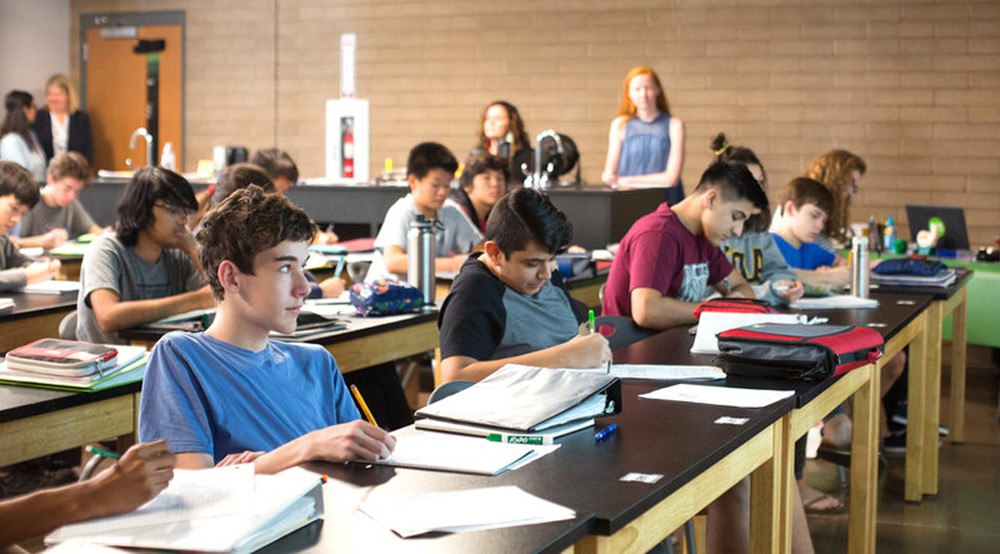
Hennepin Schools
Hennepin Schools is a K-8 charter network serving 400 students. It has received several awards and distinctions for its quality from the Star Tribune and Minnesota Department of Education.
School type: Charter
School director: Julie Henderson, [email protected]
Grades served: K-8
Contact:
Elementary school: 2123 Clinton Ave. S, Minneapolis, MN 55404
Middle school: 3109 E 50th St., Minneapolis, MN 55417
612-843-5050
www.hennepinschools.org
School summary Expand
Hennepin Schools is a K-8 charter school network that opened in 2012 as Hennepin Elementary. It seeks to serve a diverse population across South Minneapolis (although it buses citywide). Its mission: Provide all students with the knowledge, skills and character to graduate from high school, and the confidence to continue on and successfully complete their post-secondary education.
Great MN Schools has invested in Hennepin Schools to support a strategic planning process, as well as the effective growth to grades K-8.
Hiawatha Academies
Hiawatha Academies is a network of high-performing, college-preparatory schools focused on closing the opportunity gap in Minneapolis.
School type: Charter
School director: La Shawn Ray, [email protected]
Grades served: K-12
Contact: 3500 E 28th St., Minneapolis, MN 55406
612-455-4004
www.hiawathaacademies.org
School summary Expand
Hiawatha Academies is a network of high-performing, college-preparatory schools focused on closing the opportunity gap. Its college preparatory educational program is based on a philosophy of high expectations, family partnership, and the development of character and leadership skills.
The Hiawatha network of schools include:
- Hiawatha Leadership Academy – Northrop (K-4)
- Hiawatha College Prep – Northrop (5-6)
- Hiawatha College Prep – Kingfield (5-8)
- Hiawatha Collegiate High School (9-12)
Hiawatha Academies is the largest CMO in the city, and its schools are among the highest performing. Hiawatha scholars, for example, are three times more likely than their peers in area district schools to perform at grade level.
Great MN Schools is committed to supporting Hiawatha Academies’ work to deepen and strengthen the experiences students have in their schools and their continued academic success.
Hope Academy
Hope Academy is a Christ-centered, classical academy founded as an opportunity-equalizer for urban youth.
School type: Independent
School director: Russ Gregg, [email protected]
Grades served: K-12
Contact: 2300 Chicago Ave, Minneapolis, MN 55404
612-540-2000
www.
School summary Expand
Hope Academy first opened its doors in 2000 and today serves more than 550 students in grades K-12, with a vision of growing to 700 students. Its mission is to foster hope in God in its students by providing a remarkable, Christ-centered education.
The Hope Academy model focuses on five core components:
- Faith-based classical education
- Discipline and high expectations
- Parental involvement
- Accountability
- Partner funding model
Great MN Schools has invested in Hope Academy to support the implementation of its strategic plan focused on academic success for all students.
KIPP Minnesota
KIPP Minnesota is a network of high-performing, college-preparatory K-8 public charter schools in Minneapolis.
School type: Charter
School director: Nicole Boardman, [email protected]
Grades served: K-8
Contact: 5034 N Oliver Ave.
612-287-9700
www.kippminnesota.org
School summary Expand
KIPP’s mission: Establish and operate high-performing public schools in the Twin Cities that confront educational inequity by delivering academic excellence and cultivating leadership skills to ensure all students succeed in college and life. As a college preparatory network, KIPP Minnesota offers KIPP Through College – a program that helps alumni with high school selection, college admission, and college and career selection.
New Millennium Academy
NMA is a K-8 public charter school serving more than 700 students from the greater Minneapolis community.
School type: Charter
School director: Bao Vang, [email protected]
Grades served: K-8
Contact: 5105 Brooklyn Blvd., Brooklyn Center, MN 55429
612-377-6260
www.newmillenniumacademy.org
School summary Expand
New Millennium Academy develops global leaders who transform the world; it prepares learners for life, engages them in high academic achievement, and fosters cultural pride and identity.
NMA offers standards-based education with technology support – students are gaining in academic achievement every day. Support for English Language Learners is a priority and students are ahead of many local schools in language acquisition.
Northeast College Prep
Northeast College Prep is a K-8 charter school in NE Minneapolis.
School type: Charter
School director: Carl Phillips, [email protected]
Grades served: K-8
Contact: 300 Industrial Blvd. NE, Minneapolis, MN 55413
612-248-8240
www.northeastcollegeprep.org
School summary Expand
Northeast College Prep is a K-8 charter school. Its vision:
- Students will be empowered with strong academic skills and knowledge, social and emotional intelligence, deeply developed personal talents, commitment to the common good, on-going support from the NECP community, and a deep love of learning.
- Graduates will thrive in the local, national, and international community in a wide range of professional fields.
- The school’s success will serve as a proof-point that all students, regardless of background, flourish when a school’s entire staff deeply believes in the potential and fully commits to the success of each and every one.
Prodeo Academy
Prodeo Academy is a growing PreK-6 charter school.
School type: Charter
School director: Rick Campion, [email protected]
Grades served: PreK-6, growing to PreK-8
Contact: 620 Olson Memorial Highway, Minneapolis, MN 55411
612-559-4881
www.prodeoacademy.org
School summary Expand
Prodeo Academy is a PreK-6 charter school. Prodeo’s instructional model is designed to prepare students for college, and is informed by national best practices in education from the top academic schools in the country.
Great MN Schools has invested in Prodeo Academy to support a strategic planning process, as well as the effective growth of its school from PreK-6 to PreK-8.
Wildflower Schools
Wildflower is a growing ecosystem of Montessori micro-schools – it currently has two schools in its Minneapolis network that serve school-aged children.
School type: Charter
School director: Matt Kramer, [email protected]
Grades served: PreK-K
Contact:
Acorn Montessori (ages 3-6): 310 E 38th St., Suites 133-135, Minneapolis, MN 55409
Lirio Montessori (ages 3-6): 3015 13th Ave. S, Minneapolis, MN 55407
www.:quality(80)/images.vogel.de/vogelonline/bdb/1564000/1564004/original.jpg)
School summary Expand
Wildflower aspires to give all children and families the opportunity to choose high-quality learning environments. New to Minneapolis, it creates educational environments in which:
- Each child is treated as an individual who develops at his or her own pace;
- A child’s development is considered as a series of interrelated processes;
- Children exercise considerable choice and agency over their learning;
- Competencies, such as executive function, are considered to be as important to long-term success as more traditional academic skills; and
- Careful observation of students produces data that enable teachers to guide a child’s development.
Partner schools
In addition to supporting portfolio schools, which typically receive multi-year funding commitments for planning and implementation, we offer targeted supports to proven and promising schools as they work to strengthen key conditions for growth and success.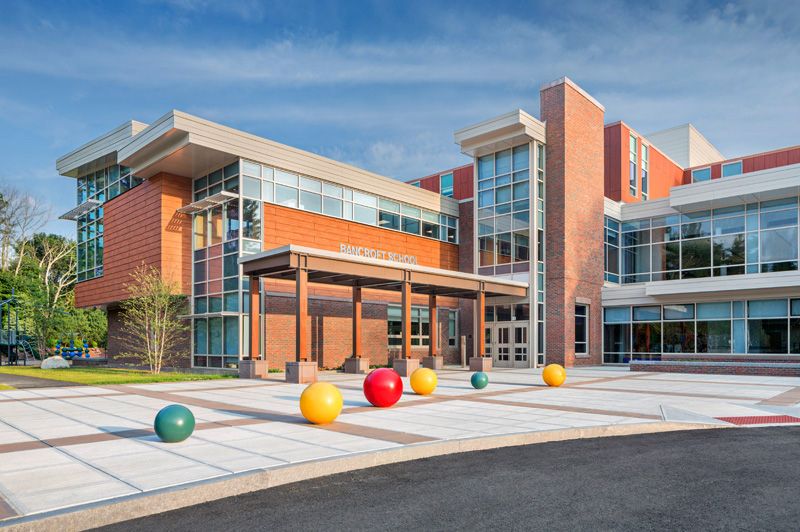
Two new charter schools unionize with Education Minnesota
Share on
The teachers and staff at Hiawatha Academies, a Minneapolis charter school network, and Great River School, a St. Paul charter school, both voted to unionize with Education Minnesota this June.
Both schools’ bargaining units will include teachers and most non-management school staff.
Great River and Hiawatha become the fourth and fifth charter schools to unionize with Education Minnesota. The 106 educators at Great River and 205 educators at Hiawatha are now spending the summer creating and adopting governing documents and beginning the process of negotiating their first contracts.
For both groups, the idea to unionize came after years of conversations about organizing. But both groups also said the pandemic and distance learning gave them more reasons to highlight the need for educator voice in decision-making at their worksites.
“Like most of the country, the pandemic shined a very bright light on how decision are made and who was at the table,” said Abby Mesnik, an educator at Great River who was one of the leaders of the organizing efforts.
“I always tie it back to Hiawatha’s mission statement which is that all scholars will be empowered with the knowledge, character and leadership skills to graduate from college and serve the common good,” Janiru Herath, a Hiawatha Academies educator during a Facebook Live announcement of the unionizing effort. “Through unionizing, we can have a seat at the table in which the decision-making process can include all voices. That would include teachers, paraprofessionals and operations staff.”
At Great River, Mesnik said that there is a teacher-majority school board, but the mission statement of that board states that they don’t manage the day-to-day policies and board members are told to take their “teacher hat” off while acting as a board member.
“So things like our grievance policy has been on their docket for five years,” she said.
Spencer Virden, an educator at Hiawatha, said the real conversations about unionizing started when educators would go to networking or professional development days put on by the administration and nothing seemed to be relevant to what was happening in classrooms.
“Every single time we had a network day, it was starting to boil over,” said Virden. “Staff started to push back and challenge power, even without a union.”
But Virden said the networking days also allowed educators from across the five Hiawatha sites to come together and start having conversations and exchange ideas.
“When rank and file members get together, there is real talk,” he said.
Educators at both schools said that feeling like they are in a silo and not always supported was another major reason for unionizing.
“Our school has always seen the value of unionizing but it didn’t seem practical at the beginning because we were so small and still establishing our school culture,” said Jessy Fabel, a Great River educator.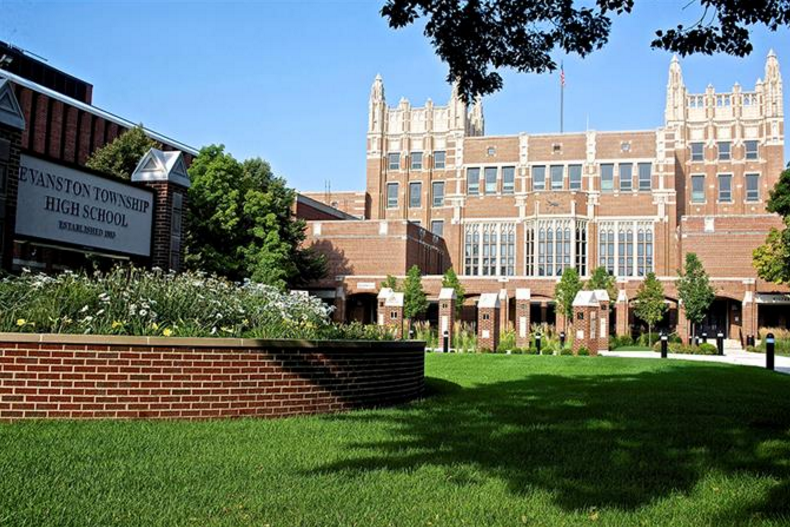
“As our school grew, we’re lacking some of the systems in place to get answers,” said Mesnik. “We’re also so isolated and we couldn’t communicate about our struggles and problems. In doing the union work, it was the first time we as elementary teachers worked with middle and high school. It brought us back as one school to talk about what we need as a whole school. We realized that these weren’t just group or individual problems, but a whole school problem.”
At Hiawatha, there are five schools, so educators are naturally separated, but Virden said that educators were craving the opportunities to connect.
“There was a visible frustration from people at our all staff meetings,” said Virden. “So we had about six or seven people from the high school start talking. Then it became about 12 or 13.”
Educators reached out to representatives at Education Minnesota to learn more about the process of organizing.
“We had a moment of where we thought we could just announce that we want a union. Then we realized, oh maybe we should find out our rights and the legal aspects of the process,” said Mesnik.
While the pandemic brought more reasons to organize to light, it also made the process of organizing a little more difficult.
“When you’re trying to unionize in the pandemic, and you can’t have a one-on-one conversation in their classroom, it was difficult to contact people and then start the conversation of the union,” said Fabel. “To go through all the steps and have to vote, it was a more cumbersome process. But we had small events where we had the initial conversation and then had people sign the cards, right then and there. It gave people the time to connect and people were hungry for it. “
Educators at Hiawatha Academies used social media as another way to communicate about why they were unionizing.
“Once we got all of the schools represented on the organizing committee, we started really working on our campaign,” said Virden.
Now that both groups have voted and are officially a union, the process of setting up their bargaining units begins.
The educators of Great River and Hiawatha Academies are both focused on keeping these efforts tied to what is best for students and staff.
“We hope that students and staff will benefit from having a consistent voice that already know their families and community and know how to advocate for what they need,” said Herath. “We have amazing staff, and in order for us to keep a sustainable model, it’s important for us to keep those people in place. Having this union in place will allow us to advocate for our families like never before. It’s incredibly valuable.”
“Students are at the center of everything that we do, and by prioritizing the voices of the people who work closest to them, we can increase student outcomes and we can also increase the satisfaction of the workers,” Tory Waggoner, a Hiawatha Academies educator, during the Facebook Live announcement of the unionizing effort.
“We could not continue with the status quo,” said Mesnik. “Now it’s on to talking about what’s important for people to negotiate for before we act on it.”
A third of all Minnesota charter schools have eventually closed, data show
Get Sahan Journal stories delivered to your inbox.
The stories that come from Minnesota’s diverse communities are priceless. Help us keep them free to read for everyone.
BECOME A SUSTAINER
Minnesota has long been a national leader in the charter school movement. Yet one in three charter schools ever to open in the state has closed, data from the Minnesota Department of Education show. More than half of the charter schools that closed did so within five years of opening.
Financial problems were cited as a reason for a majority of Minnesota’s charter school closures. Enrollment woes were the second most common problem listed.
To Eugene Piccolo, the executive director of the Minnesota Association of Charter Schools, the closures are actually a sign of success.
“The idea of chartering is if schools don’t succeed, they close,” he said. “And in that sense, the system is working.”
Governor Arne Carlson signed the country’s first charter school law 30 years ago this month. Today, Minnesota has 165 charter schools serving some 63,000 students, more than any single school district in the state. Many of the state’s charter schools cater specifically to students of color.
Yet a wave of problems at charter schools this spring has some Democrats and teachers union leaders calling for a pause on charter school growth in Minnesota.
First, Cedar Riverside Community School, serving mostly Somali students from refugee families in Minneapolis’ Riverside Plaza, announced its impending closure at the beginning of April. Weeks later, a departing employee at Woodbury’s Math and Science Academy accused the school of racial discrimination.
Then, a front-page Pioneer Press story revealed that Hmong College Prep Academy in St. Paul had lost $4.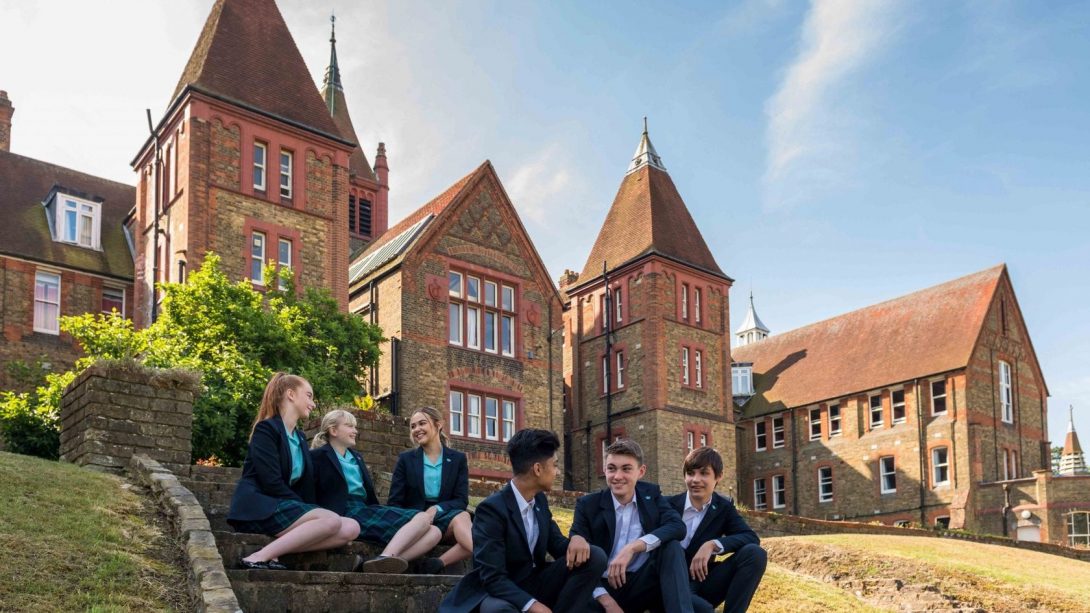
That story prompted a Capitol press conference with Democratic legislators, city council members, and teachers union leaders demanding a charter school moratorium.
State Representative John Thompson shared a story about his son, Myz’John, now 12, who attended TRUTH Preparatory Academy. The St. Paul charter school opened its doors in 2016. Myz’John, then 7, loved the culturally relevant curriculum and having teachers from his community.
“When this school first opened, they had a parade with all the kids, and it was so much fun,” Thompson told Sahan Journal. The school took kids on field trips, including to an urban farm—especially meaningful given the country’s history of stripping farming opportunities from African Americans, Thompson said. “You don’t see that in St. Paul Public Schools or Minneapolis Public Schools. But what I do know is, if our kids can see it, they can be it.”
But when Thompson brought Myz’John back for the first day of school the next year, they found chains on the doors.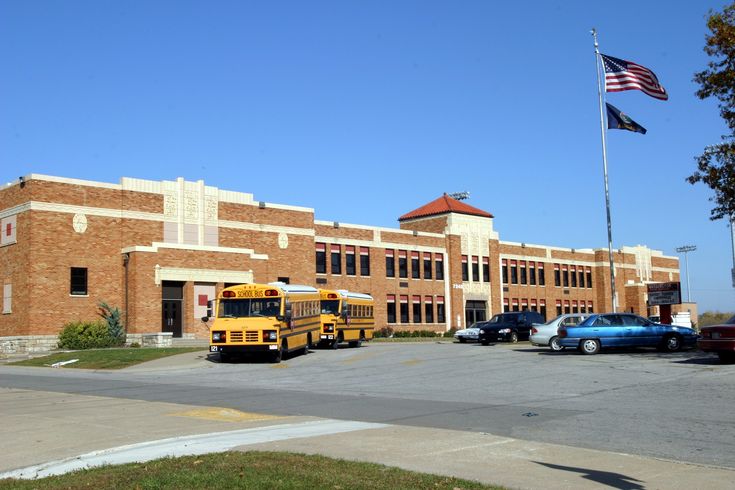
“Teachers didn’t even know they didn’t even have a job,” Thompson said. “I vowed to never send my kid to another charter school again, ever in their life.”
State records show the school permanently closed in August 2017 due to financial and governance problems. It was one of four Minnesota charter schools to close that year.
Traditional public schools rarely close, Piccolo noted, even if they struggle for years. The charter system is designed to ensure schools are successful, he said.
“And if they’re not, we don’t just keep on doing the same thing over and over again,” he said. Closures provide an opportunity for kids to find a better school, rather than remain stuck in a school that isn’t moving forward, he said.
Nelsie Yang, a St. Paul city council member who has consistently voted against conduit bonds for charter schools—a financing option that allows schools to receive a lower interest rate at no cost to the city—said the frequent closing of charter schools was harmful to families.
Want more? Get news and stories that illuminate the lives and experiences of Minnesota’s immigrants and communities of color.
“Whenever there’s a charter school that chooses to close down, or they don’t put their money where their values are,” Yang said in an interview with Sahan Journal, “the people who lose out the most are the students and the families who attend that school, and the educators as well. They don’t get the fair share that they actually deserve.”
A national trend
National data show charter schools throughout the country closing at a disproportionate rate.
In the 2016-17 school year, 0.3 percent of all traditional public school students experienced a school closure, data from the National Center for Education Statistics show. But 1.2 percent of charter school students saw their schools close that year.
Put another way, nationally 6 percent of all public school students that year attended charter schools. But about 20 percent of those displaced by school closures did.
A study from the Network for Public Education, a public schools advocacy nonprofit, indicates that Minnesota’s charter schools appear to close at somewhat lower rates than the national average. That study indicated that a quarter of the country’s charter schools close by their fifth year, and half by their 15th year. In Minnesota, 20 percent of charter schools have closed within five years; 40 percent have closed by their 15-year mark.
Early in Minnesota’s charter movement, many schools closed within three years, Piccolo said. That’s changed somewhat since a 2009 law put stricter regulations on charter schools, creating more requirements before a school can open.
For some children, a school closure can be traumatic, Piccolo acknowledged.
“If it’s known in advance and there’s a plan to help families find a new school, the trauma is lessened,” he said. “And we’ve had some good closures in terms of that process and we’ve had some really bad ones.”
A Chalkbeat analysis of 17 studies on the impacts of school closures show that they often hurt students academically, but not always.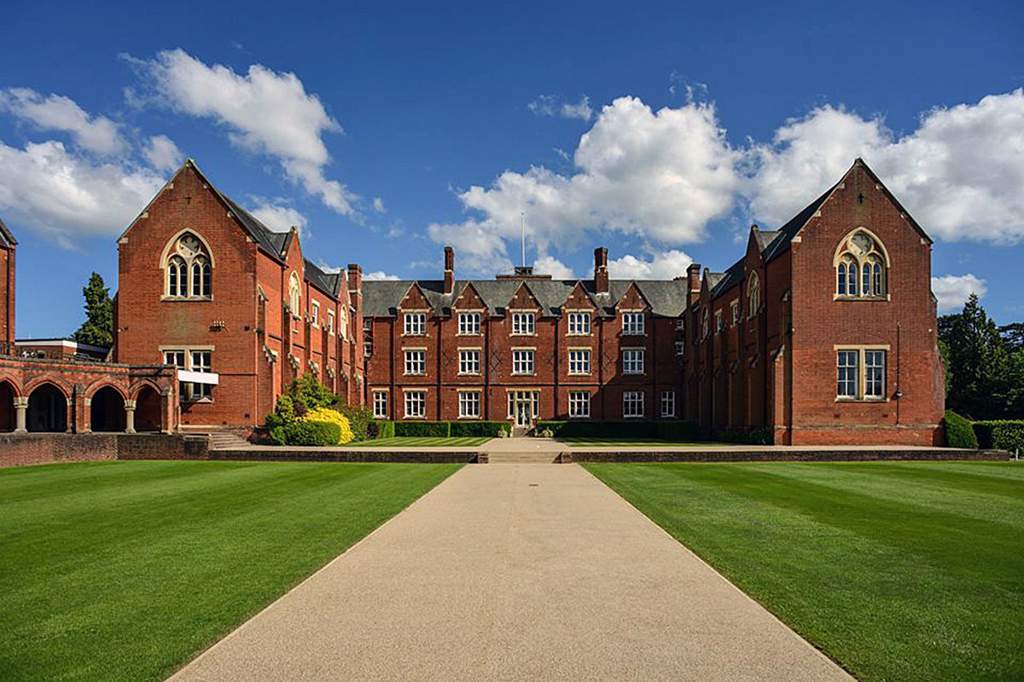
“It has a huge impact,” Thompson said. “The kids did not deserve to lose like that.”
Two Minnesota charter schools closed at the end of the 2020-2021 school year: Minneapolis’ Cedar Riverside Community School, and Minisinaakwaang Leadership Academy in McGregor, whose students were mostly Native American. At both schools, most students qualified for free or reduced price lunch.
‘The opportunities are endless’
Myz’John was initially sad when his charter school shut down, and he missed his friends, Thompson said. But he made new friends quickly, and still saw his previous classmates around the neighborhood.
Now 12, Myz’John and his older sister attend Creative Arts Secondary School, a St.
The opportunities to envision different careers at Creative Arts are in some ways similar to what Thompson and Myz’John liked about TRUTH Preparatory Academy.
But there’s an important difference between their experience at TRUTH Preparatory Academy and Creative Arts Secondary School.
At Creative Arts, they know their school will still be there in the fall.
Our community-based reporting is for everyone. That means it needs to be free. Help our newsroom keep these stories coming by becoming a Sahan Journal supporter.
Education in Saint Paul, Minnesota
St. Paul, MN contains many educational institutions. Several educational “innovations” took place in Saint Paul.
Content
- 1 Primary and secondary education
- 1.1 State schools
- 1.2 Private schools
- 2 List of elementary and secondary schools
- 2.1 Primary school
- 2.2 SCROMIC STRICATION
- 2.3 Private secondary
- 3 List of post-secondary schools
- 3.1 State Higher Education
- 3.2 Private higher education
- 3.3 Aspirant
- 4 Recommendations
Acting and secondary education
State Schools
Washington Magnit State Schools City City City City City.
Saint Paul Public Schools is a school district that serves the entire city. It is the second largest school district in the state with approximately 38,000 students. The area is also one of the most diverse in Minnesota.
There are also many charter schools that are operated separately from St. Paul’s public schools but run by the Minnesota Department of Education. There are currently 21 charter schools in St. Paul. [5]
Private Schools
St. Paul has many private schools, including non-sectarian, Jewish, Roman Catholic, and Protestant. The Minnesota Department of Education has no authority over the operation of private schools; private schools may or may not be accredited, and there are no performance tests required for private school graduates. Many private schools will be accredited and will conduct achievement tests to demonstrate that the school has a genuine interest in academic achievement. There are currently 38 private schools in St.
In addition, Catholic schools in Saint Paul are served by the Roman Catholic Archdiocese of Saints Paul and Minneapolis. Three secondary and fourteen elementary schools are run by the archbishop. [7]
Elementary and Middle School List
Como Park High School opened its doors to classes in 1979 and remained the district’s youngest high school until Arlington High School opened in 1997.
Basic
Public High School
|
|
Private Secondary
|
School School Saint Saint Saint Senbernera
|
List of post-secondary schools
St. Paul has the second highest number of post-secondary institutions per capita in the US. [35]
State Higher Education
- Capital State University [36]
- College of St. Paul-Social and Technical College [37]
- University of Minnesota, Pubima City [38]
[38]
Private Higher Education
|
Minnesota News / Minnesota News2/18/2019 0 Comments Hardly anyone will argue with the fact that choosing a school is a serious and responsible step for many parents. The system of American secondary education is quite diverse: schools are public and private, religious and secular, providing an opportunity to study at an advanced level and specializing in the study of individual subjects. On the one hand, this is unusual and incomprehensible. On the other hand, it enables the family to make an informed decision: which school is right for the child. In today’s article, we would like to draw the attention of our readers to Our School Charter School and understand how it is similar and how it differs from others. What’s the difference? Why, despite the opportunity to send the child to study at the nearest school, do parents entrust the education of their children to us? More than 100 students come to school every morning from 16 satellite cities of Minneapolis and St. Our School is a charter, A few words about our curricula and how they work: Each of the families who have chosen Our School has its own unique story. And the path that led them to school is also their own. Someone decides to connect their lives with Our School while still in the preparatory class and stays here until the 8th grade. Our address: 0 Comments Chapter Two Teresa Debrito “My largest class consisted of twenty-nine children … oh, it was a lot of fun”Chapter Two Teresa Debrito “My biggest class consisted of twenty-nine kids… oh, it was a lot of fun” 1. When Shepog Valley High School was built to accommodate baby boomers, three hundred students were dumped from school buses every morning. At the entrance, the building had several double doors to regulate the flow of students, and the corridors resembled busy highways. But all this is in the distant past. The baby boom is over. The bucolic corner of Connecticut where the Shepog School is located, with charming colonial-style houses and winding paths, appealed to wealthy couples from New York. Real estate prices jumped. Young families could no longer afford to live in the area. The number of students in the school was reduced to 245, and then to 200. Today, there are only 80 students in the sixth grade. Given the number of children in the area’s primary schools, the number of students could soon be halved. And this means that the class size at Shepog will soon be much less than the national average. The once overcrowded school today has a serious shortage. Would you send your child to Shepog Valley High School? 2. The history of Vivek Ranadive and the Redwood City basketball team teaches us that our perceptions of advantages and disadvantages are not always correct, that we sometimes confuse these categories. In this and the next chapter, I want to explore this idea in the context of two seemingly simple issues related to education. I say “at first glance” because they only seem so, although, as we will soon learn, they are by no means so simple. The first is the question above about Shepog Valley High School. I suspect you would be very happy to assign a child to one of these chamber classes. Almost everywhere in the world, parents and educators are sure that small classes are better for learning. Over the past few years, the governments of the United States, the United Kingdom, the Netherlands, Canada, Hong Kong, Singapore, Korea, and China – to name a few – have taken drastic measures to reduce class size. When the governor of California announced massive plans to reduce class sizes in the state, his popularity soared in three weeks is twice . Previously, 25 children studied in one class at Shepog Valley. Now, in some cases, no more than 15. This means that Shepog Valley teachers can give children more attention than before, and common sense says that the more attention a teacher gives to each student, the better he learns. In theory, students in the new, small Shepog Valley should demonstrate higher academic success than in the old crowded school, right? It turns out there is a very elegant way to check this. Connecticut is full of schools like Shepog Valley. There are many small towns in this state with small elementary schools, and small elementary schools in small towns are subject to natural fluctuations in birth rates and real estate prices. In 2001, there were 23 children in the fifth grade. And the next one is only ten! Nothing has changed at the school in these two years: the same teachers, the same director, the same textbooks. The school occupied the same building in the same city. The local economy and local population remained almost at the same level. Only the number of students in the fifth grade has changed. If the grades were higher in a year with a large enrollment than in a year with a small enrollment, we can be sure that the class size is the reason, right? This is the so-called “natural experiment”. Sometimes scientists conduct formal experiments to test hypotheses. But in rare cases, reality provides an opportunity to test the same hypothesis in a natural way. Natural experiments have many advantages over artificial ones. This, of course, is just one study. But the picture is by no means clearer if you look at all the studies related to class occupancy, and hundreds of such studies have accumulated over the years. In 15% of cases, there was statistically significant evidence of higher performance in smaller classes. Approximately the same percentage of studies have shown that academic performance deteriorates in small classes. In four countries—Australia, Hong Kong, Scotland, and the United States—our identification strategy produced extremely imprecise estimates that do not allow for confident assertions about class size effects. In two countries, Greece and Iceland, non-trivial positive effects of class reduction have been identified. France is the only country where there are noteworthy differences in the teaching of mathematics and science: while in the teaching of mathematics, differences in content have a statistically significant and significant effect, in the teaching of science there is no comparable effect. In nine school systems, we can eliminate class size effects in both math and science education: Belgium (two schools), Canada, Czech Republic, Korea, Portugal, Romania, Slovenia, and Spain. Do you understand what we are talking about? After analyzing thousands of pages of performance data from eighteen countries, the economists concluded that only two of them—Greece and Iceland—“have shown non-trivial positive effects of class size reduction.” Greece and Iceland ? Efforts to reduce class sizes in the United States resulted in almost a quarter of a million new teachers being hired between 1996 and 2004. Over the same period, spending per student in the United States fell by 21%; practically all of these many tens of billions of dollars were spent on salaries of additional teachers. It is safe to say that over the past two decades, no other profession in the world has grown in numbers on such a scale, so quickly or at such a cost as the teaching profession. Countries are spending a lot of money one after another, because when we look at a school like Shepog Valley, where each teacher has the opportunity to find an individual approach to each student, we think: “This is the school I would like to send my child to. 3. Recently I had a conversation with one of the most influential people in Hollywood. He began his story with memories of his childhood spent in Minneapolis. At the beginning of each winter, he would go around his neighborhood, collect orders for snow removal from driveways and sidewalks, and turn the job over to the neighborhood kids. He paid them in cash and immediately after the work was done (although he received payment from clients a little later), because he understood that this was a sure way to get the team to work as hard as possible. There were eight, sometimes nine guys on his team. In autumn, he switched to leaf harvesting. “Usually I double-checked their work to make sure that the driveways had been cleaned exactly as instructed by the clients,” my interlocutor recalled. “There were definitely a couple of boys who tried to goof off, and I had to part with them. His family lived in an area usually referred to euphemistically as “mixed”. He went to an ordinary public school and wore second-hand clothes. His father, a Depression survivor, talked mostly about money. A man from Hollywood recalled that if he wanted to buy something – sneakers, for example, or a bicycle – his father always offered to pay half. If he forgot to turn off the lights, his father showed him the electricity bills. “Look,” he said, “this is how much you have to pay. You are too lazy to turn off the light, and now we are paying for your laziness. When he was sixteen in the summer, he joined his father in a scrap metal business. The work was hard, wear and tear. But no one did favors for him. “Because of this, I dreamed of leaving Minneapolis,” he admitted. “I decided never to work for my father again. Nightmare work. Dirty. Heavy. Boring. I had to stack scrap metal in piles. I stayed there from May 15 until the beginning of September. It seemed to me that I would never wash off this dirt. Looking back now, I think that my father forced me to work with him so that I would have a desire to get out of there as soon as possible. So that I have an incentive to achieve something in life. In college, he set up a laundry business for wealthy classmates, collecting dirty clothes and delivering clean ones. Organized student charter flights to Europe. Attending basketball games and sitting in terribly uncomfortable seats, in places where nothing could be seen, he wondered what it was like to sit in a first-class box right on the court. “I wanted more freedom. Tried to have different things. Money was the means that I used to fulfill my aspirations, desires and ambitions,” my interlocutor explained. “No one taught me this. I came to this myself. Kind of like trial and error. I like their energy. They increase self-respect. He was sitting, in his own words, in his home office, a room the size of a whole house. Finally, we come to the point. He adores his children and wants to provide for them, to give them more of what he had. But at the same time, he himself drove himself into a dead end, and he understood this very well. He achieved success because the value of money, the value of labor, as well as the joy and satisfaction of his own independence comprehended from his own experience, earned on a long and difficult path. But precisely because of his success, it will be difficult for children to go through the same school of life. The kids of multi-millionaires in Hollywood don’t clean up the leaves on the lawns of their neighbors in Beverly Hills. Parents don’t stick electricity bills in their noses unless they turn off the lights. They don’t sit behind a column in the basketball stands and dream of getting into a box next to the court. They are always on top and have the very best. “My heart tells me that raising children is much more difficult for rich parents than it seems,” he remarked. “Financial problems spoil people. Just like material goods, because they take away ambition, pride, and self-respect. And so bad, and so bad. Probably, there is some optimal point somewhere in between, the golden mean. Of course, few things are less sympathetic than a self-deprecating multimillionaire. The Hollywood mogul’s children will always live in the finest homes and occupy front row seats. But he was not talking about material comfort. He is one of those who made a name for himself. One of his brothers inherited the family’s scrap metal business and is now thriving. The second became a successful doctor. His father raised three sons who received a powerful stimulus from childhood and achieved great success on their own. His main message was that he, a man with millions of dollars, would find it much more difficult to raise children as well as his father in a mixed Minneapolis area. 4. The man from Hollywood was not the first to share such revelations with me. I think most of us understand these things on an intuitive level. Our understanding of the relationship between education and money is conditioned by an important principle: more is not always better. It’s not easy being a good parent with little money. You can’t argue with that. Poverty exhausts and crushes. If you have to work two jobs to make ends meet, where do you get the strength to read to your child before bed? If you are a working single parent who pays for rent, food and clothing. If you travel far to work, and the work itself is physically exhausting, then it is very difficult for you to provide love, attention and discipline – the necessary components of good education. But no one will argue that is always the best parent is the one with the most money. If you were asked to draw a graph of the relationship between education and money, it would hardly look like this: Money makes the task of parents easier up to a certain point, after which it no longer matters. But this graph only shows part of the picture, doesn’t it? When the income of the parents becomes high enough, parenting becomes more difficult again . For most of us, the values of the world in which we ourselves grew up are not much different from the world we create for our children. But this does not apply to fabulously rich people. To describe the first generation of millionaires, psychologist James Grubman uses the miraculous phrase “immigrants to wealth”: it implies that they face the same difficulties with their children that immigrants who arrive in a new country face. “Parents should set boundaries. But it’s a very difficult task for immigrants to wealth because they don’t know what to say when the “We can’t afford it” explanation becomes irrelevant, says Grubman. – They do not want to lie and say “We have no money”, because if you have a teenager, he will definitely say: “How is it no money? You have a Porsche and your mom has a Maserati.” Parents need to learn how to switch from ‘No we can’ to ‘No we won’t’.” But “no, we won’t”, according to Grubman, is much more difficult. “No, we can’t” is easy to say. Sometimes parents just need to say it once or twice. A child from a middle class family will quickly learn that it is useless to ask for a pony, because they won’t buy a pony, and that’s it. “No, we won’t buy ponies” suggests conversation honesty and tact to explain that the possible is not always right. “I suggest wealthy parents lose the dialogue, and they can’t find the right words,” says the psychologist. A person from Hollywood had too much money . And therein lay his problem as a parent. He has long passed the point where money makes life better and, in general, when it matters. He has reached the point where money makes it difficult to raise normal and independent children. The parent graph actually looks like this: The resulting curve is called an inverted U-curve. Understanding inverted U-shaped curves is quite difficult. They almost always amaze us, and the confusion in our perception of advantages and disadvantages is precisely due to the fact that we forget about the U-shape of our world[7]. Which brings us back to the class size puzzle: what if the relationship between class size and academic achievement doesn’t look right? And not even like this: What if it looks like this? The principal of Shepog Valley High School is Teresa Debrito. During her five years in this position, she watched the number of incoming students decrease every year. Parents would certainly be delighted with such news. But when she thinks about the current trend, she mentally imagines the last curve. “In a few years, less than 50 children will be graduating from elementary school,” Debrito believes. The prospect scares her. “Oh, and it will be hard for us,” she says. 5. Inverted U-shaped curves consist of three parts, and each of them obeys its own pattern[8]. The left side is where additional effort or benefits improve life. A flat middle where extra effort doesn’t bring much change. And the right part, where additional efforts or benefits worsen the situation [9]. Looking at the mystery of class size from this angle, it gradually begins to clear up. The number of students in the class as a parent’s income. It all depends on where you are on the curve. In Israel, for example, traditionally quite large primary classes. The education system in this country is based on the Maimonides Rule, named after a 12th-century rabbi, which mandates that no more than 40 children study in a class. In other words, in elementary grades, students often study at 38 or 39children. Although if there are 40 students in a class, the same school may suddenly divide them into two classes of 20 students. If we turn to Hawksby-style analysis and compare the academic performance of a large class and a class of 20 students, it turns out that the performance is higher in a small class. And there is nothing surprising in this. Coping with 36 or 37 children is hard for any teacher. Israel is on the left side of the inverted U-curve. And now think of Connecticut. Why is there not much difference between a class of 25 students and a class of 18? There is no doubt that the latter option is easier for the teacher: fewer notebooks to check, fewer children to memorize and track their progress. But a small class only produces positive results if teachers change their teaching style with a smaller workload. And the evidence suggests that in the middle range, teachers rarely do this. They just work less. This is inherent in human nature. Imagine that you are a doctor and suddenly find out that on Friday you have 20 patients to see instead of 25, but the payment will not change. Let’s move on to the main question. Can a class be too small? (Applied to earnings, the question would be: Can a parent earn too much money?) A huge number of teachers in the US and Canada I interviewed gave an affirmative answer to this question. Here is a typical explanation: For me, the ideal number is 18. Enough so that no child in the class feels defenseless, but at the same time everyone can feel their importance. Eighteen people can easily be divided into groups of two, three or six, depending on the desired degree of intimacy. With 18 students, I can always give each of them personal attention. Twenty-four is my second favorite number; the extra six students make it even more likely that there will be a rogue, a rebel, or even two among them who will disrupt the existing order. However, such a number has a downside: its energy mass is more like an audience than a team. What about the other side? Subtract six from the ideal number and you have the Last Supper. And that’s the problem. Twelve people can easily accommodate at the festive table; but this number is too small for many high school students: it is very difficult to maintain isolation if necessary. In a group of 12, it is very easy for a bully or a bully to dominate. If the number of students is reduced to six, it will be impossible to remain independent at all. In addition, there will be no room for a variety of thoughts and impressions, without which the full development of the personality is impossible. In other words, it is no easier for a teacher to cope with a small class than with a large one. In one case, the issue is the number of potential interactions that need to be managed. In another case, it is the intensity of such interactions. Here is another comment from a high school teacher. Recently, he had to work with a class of 32 students, which he clearly did not get excited about. “When I saw such a gigantic class, the first thing I thought was, how much time will have to kill to check homework, although I could spend it with my children. But at the same time, he would not like to work in a class of less than 20 people: The lifeblood of any class is discussion, and it needs a certain critical mass to keep it going. Currently, I work with classes where there are students who never participate in discussions at all, this is some kind of nightmare. If there are too few students, the discussion suffers. Seems counter-intuitive, because I’ve always thought that shy kids who don’t feel comfortable speaking in a class of 32 are more likely to talk in a class of 16. What if the class is very, very small? Be afraid of such as fire. I had a French class of 9 twelfth grade students. Dream, right? But no, it’s a nightmare! In the language being studied, it is impossible to conduct either conversations or discussions. It is difficult to play games to reinforce vocabulary, improve grammar, and the like. There is no driving force. Economist Jesse Levin conducted an interesting study of Dutch students. He counted the number of students in the class of the same level of academic ability, and found that their number correlated surprisingly with academic performance, especially for lagging students[10]. In other words, if you are a student, especially not the strongest one, you need peers around who ask the same questions, solve the same problems and worry about the same problems as you. But this is problematic in small classes, says Levin. In a class with too few students, the likelihood of children being surrounded by a critical mass of peers similar to them is reduced. Too much reduction in class size, Levin warns, “deprives underperforming students of opportunities to connect with peers they can learn from.” Do you understand now why Teresa Debrito was so worried about Shepog Valley? She is the principal of a high school, where children are educated just at the age at which the difficult transition to adolescence begins. They are clumsy, shy and afraid to appear too smart. Engaging them, getting them to go beyond the standard Q&A with a teacher, Debrito says, is like “pulling teeth.” She wanted to hear many interesting and varied voices in the classroom and feel the excitement generated by the critical mass of students trying to solve the same problems. How to do this in a half-empty class? “The more students there are,” she explains, “the more varied the discussions are. “I started working in Meriden as a high school math teacher,” continues Debrito. Meriden is a medium-sized city with a less affluent population in another part of the state. “There were 29 children in my largest class.” She told how difficult it was to work, how much effort it took to look for an individual approach to such a large number of students. “You need to have eyes in the back of your head. You have to hear what happens when you work with one group. With so many children, you need to be a first-class teacher, otherwise one of them, hiding behind the backs of his comrades, will definitely go about his business, which has nothing to do with the topic of the lesson. And then she confessed: she liked teaching in that class. Would she like to have 29 children in each Shepog Valley class? Of course no. Debrito knew that her views were somewhat unusual and that most teachers preferred smaller classrooms. Her thought boiled down to the fact that we are obsessed with the advantages of small classes and do not think about the advantages of large classes. Some strange educational philosophy if it treats classmates as competitors in the struggle for the attention of the teacher, and not as allies in an exciting journey of knowledge. Half an hour from Shepog Valley in Lakeville, Connecticut, there is another school called Hotchkiss. It is considered one of the best private boarding schools in the United States. Tuition here costs almost $50,000 a year. The school has two lakes, two hockey stadiums, four telescopes, a golf course, and twelve pianos. And not ordinary ones, but, as the school administration emphasizes, Steinway brands are the most prestigious pianos and grand pianos that you can buy[11]. In “Hotchkiss” do not spare money for the education of their wards. Average class size? Twelve people. What Debrito is afraid of, Hotchkiss presents as their main advantage. “We have created at the school,” the advertisement proudly declares, “a converging, interactive and cozy learning atmosphere.” Why does a school like Hotchkiss encourage something that definitely harms its students? As one option, the school thinks not of the students, but of their parents, who view the golf course, Steinway pianos and small classrooms as proof that their money is well spent. This text is an introductory fragment. Part ten The greatest gift in life
Part ten Chapter 8 He’s so much fun!
Chapter 8 The biggest parental fear
Biggest parenting fear Chapter 1
Chapter 1 Chapter 260052
Chapter 26 Psychology of a small country
Psychology of a not very big country Master of Emotions survived the biggest romance in history
Master of Emotions survived the biggest romance in history Chapter 11 Growing Up Years: Eighteen to Twenty-Nine
Chapter 11 Chapter Two: Teresa Debrito
Chapter Two: Teresa Debrito Psychology of a small country
Psychology of a not very big country But it was much later.
But it was much later… And in the beginning there were cockroaches. Lots of cockroaches… Chapter two, from which you will learn the most secret secret about how to make friends with the mirror
Chapter two, from which you will learn the most secret secret about how to make friends with the mirror ’s eyes Chapter Two WHAT WAS BEFORE
Chapter Two WHAT HAPPENED BEFORE Youth. (From twenty-one to twenty-nine years old)
Youth. (From twenty-one to twenty-nine years old) Saint Paul, Minnesota – WikipediaFor an overview of the Twin Cities metropolitan area, see Minneapolis–Saint Paul. St. Paul (abbreviated as St. Paul ) is the capital of the US State of Minnesota. It is the county seat of Ramsey, the smallest and most populous county in the state. [5] As of 2019, its estimated population was 308,096, making it the 63rd largest city in the United States and the 11th most populous city in the Midwest. The Minnesota Territory Legislature founded the city of St. Paul as its capital near the existing Dakota Sioux settlement in November 1849. The city remained a city until 1854. The Dakota where St. Paul is located is called “Imnizaska” from the “white rock” cliff along the river. [7] The city is known for the Xcel Energy Center, home to the Minnesota Wild. [8] Regionally known is the Minnesota Science Museum [9] and its new football stadium, Allianz Field. As the business center of the Upper Midwest, it is the headquarters of companies such as Ecolab. The first structure built at what would become St. Paul’s was built in 1838 at the entrance to Fountain Cave overlooking the Mississippi. It was a tavern built by Parent Pig’s Eyes near where Randolph Avenue meets the river bluff today. Parrant’s tavern was well known, and the area around it became known as Pigs’ Eyes. This continued until Catholic missionary Lucien Galtier arrived in 1840. He didn’t care about Parrant, or his tavern, or the use of his name. Galtier’s arrival coincided with Parran’s eviction from his establishment and the construction of a log house. the chapel near where the steamboats had an easy landing. Galtier named the chapel of St. Paul, implying that the settlement was to be called by this name, since “St. Paul, as applied to a city or city, was well chosen, this one-syllable word is short, sounds good, and is understood by all Christian denominations. Content
Main article: History of St. Paul, Minnesota Mound at Indian Mounds Park Mounds today Indian Mounds Park suggests that the area was inhabited by Hopewell Native Americans about 2,000 years ago. [14] [15] From the early 17th century until 1837, the Mdewakanton Dakota, a Sioux tribe, lived near the mounds after being driven from their Mille Lacs Lake ancestors by the advance of the Ojibwe. [14] [16] The Dakota named the area Imniza Ska (“white rocks”) for the exposed white sandstone cliffs on the east side of the river. [17] [18] Imniza Ska was full of caves that were useful to the Dakota. Explorer Jonathan Carver documented the historic tipi of Wakan on a bluff under the mounds in 1767. After the 1803 Louisiana Purchase, Lieutenant Zebulon Pike (U.S. Army) arranged in 1805 to build a fort off native Dakota land of about 100,000 acres (40,000 ha; 160 sq mi). The land was on both banks of the Mississippi River, from Saint Anthony Falls in present-day Minneapolis to its confluence with the Saint Croix River. [20] Fort Snelling was built on the site in 1819 at the confluence of the Mississippi and Minnesota rivers, which formed a natural boundary for the indigenous peoples of the Americas. An 1837 treaty with the Sioux ceded all tribal lands east of the Mississippi to the US government. [21] Chief Little Crow V moved to his village of Kaposha from below Mounds Park across the river a few miles south into Dakota land. Joe Rolette was responsible for preventing the Minnesota capital from moving to St. Peter’s. In 1841, Father Lucien Galtier was sent to minister to Catholic French Canadians and founded a chapel named after his favorite saint, the Apostle Paul, on the bluffs above Lambert’s Landing. [27] [28] Galtier informed the settlement that it was to adopt the name of St. Paul for his new chapel and stop using Pig’s Eye. [24] In 1847, New York educator Harriet Bishop moved to the area and opened the city’s first school. [29] The Minnesota Territory was formalized in 1849 with St. Stereoscopic view of St. Paul Red river bull cart and driver in St. Paul In 1858, over 1,000 steamboats served St. Paul, [29] making it the gateway for settlers to the Minnesota frontier or Dakota Territory. In the Spanish-American War saw the transatlantic liner SS St. Paul (1895) converted and commissioned into the US Navy as an auxiliary cruiser. She was the first ship in the navy to bear the city’s name. She was decommissioned and returned to her owners, only to be called back to service in World War I, after which she was again taken out of service and sent for scrap. When the war broke out, volunteers were asked from the states. Minnesota quickly had enough to form four divisions, the 12th-15th Minnesota Infantry. In 1900, Irishman John O’Connor became police chief of St. Paul and was known on the street as “The Big Guy”. [34] In the same year, he established the “O’Connor Transplant Agreement” and attempted to inform criminals of its existence. [34] St. Paul Police will ignore any violations of the law that occurred outside of their jurisdiction if the perpetrators “registered” upon arrival in the city. [35] The contract was concluded under three conditions: registration with the police; make a “donation” to the boss; and not commit crimes in St. Paul. [34] Check-in took place at the Savoy Hotel in the city centre. [35] The Green Lantern took care of a lot of “cases”. Speakeasy near the train station in the Lower City. He was also known for illegal games. [35] More was done in the caves across the river from the city center. On August 20, 1904, thunderstorms and tornadoes damaged hundreds of downtown buildings, causing $1. World War II On the morning of December 7, 1941, the USS Ward was completed by naval reservists. [39] She had a crew of 115, of which at least 85 were from Saint Paul. That morning, a watch patrolled the entrance to Pearl Harbor, T.H. The watch spotted a periscope tracking a freighter into the harbor and the Chamber took action against the unknown intruder. The crew became the first Americans to open fire with their weapons. The Second World War. A 4″/50 gun from the ship can be seen on the grounds of the State Capitol. USS St. Paul. This time there was a Baltimore-class cruiser bearing his name in the city. This ship’s bell is on display in St. Paul’s City Hall. During the 1960s, in conjunction with urban renewal, St. Paul razed blocks west of downtown to create an interstate highway system. [40] From 1959 to 1961 The Rondo Neighborhood was demolished for the construction of Interstate 94. Downtown St. Paul has experienced a skyscraper boom since the 1970s. Because the city center is directly below the flight path to the airport across the river, there is a height restriction for all construction work. The tallest buildings, such as the Galtier Plaza (Jackson and Sibley Towers), the Pointe of Saint Paul condominiums, and the city’s tallest building, Wells Fargo Place (formerly the Minnesota World Trade Center), were built in the late 1980s. [43] V 19In the 1990s and 2000s, the tradition of bringing new groups of immigrants to the city continued. As of 2004, about 10% of the city’s population are recent Hmong immigrants from Vietnam, Laos, Cambodia, Thailand, and Myanmar. [44] Saint Paul is the location of the Hmong Archives. GeographyW Meeker Lock and Dam Island was the first lock and dam on the Mississippi River in 1902. St. Paul’s history and growth as a landing pier is tied to water. The city’s defining physical characteristic, the confluence of the Mississippi and Minnesota rivers, was carved into the region during the last ice age, as were the steep river bluffs and dramatic palisades on which the city is built. Retreat glaciers and Lake Agassiz forced water flows from a glacial river that undercut river valleys. [46] The city is located in east-central Minnesota. The Mississippi River forms the municipal boundary on the west, southwest, and southeast sides of the city. Minneapolis, the state’s largest city, lies to the west. Falcon Heights, Lauderdale, Roseville, and Maple Tree are to the north, while Maplewood is to the east. The cities of West Saint Paul and South Saint Paul are to the south, as are Lilydale, Mendota, and Mendota Heights, across the river from the city. The Parks and Recreation Department operates 160 parks and 41 recreation centers. [48] The city was ranked #2 in park accessibility and quality behind Minneapolis in ParkScore’s 2018 Top 100 U.S. Park Systems by the nonprofit Public Land Trust. [49] NeighborhoodMain article: Neighborhood of St. Paul The Saint Paul Department of Planning and Economic Development divides Saint Paul into seventeen planning districts, created in 1979 to allow districts to participate in management and use. Community development grants. With a funding agreement directly from the city, the councils share a pool of funds. The 17 City Planning Districts are: |
93 (34) |
(34) | 103 (39) |
105 (41) |
103 | 95 (35) (35) (35) (35) (35) (35) (35) (35) 9060 | 75 (24) |
66 (19) |
105 (41) |
|||||
| Average High ° F (° C) | 43 (6) |
58 (14) |
71 (22) |
80 (27) |
85 | 50 (10) |
34.5 (1.4) |
21 (−6) |
47.05 (8.36) |
||||||
|---|---|---|---|---|---|---|---|---|---|---|---|---|---|---|---|
| Average low ° F (° C) | 7 (14) 12 (−11) |
24 (−4) |
38 (3) |
50 (10) |
59 (15) |
64 (18) |
62 (17) | 53 (12) |
41 (5) |
27 (−3) |
13 (−11) |
38 (3) |
|||
| Record low °F (°C) | −29 (−34) |
−32 (−36) |
−29 (−30 1 |
21 (−6) |
36 (2) |
45 (7) |
42 (6) |
26 (−3) |
15 (−9) (−9) 9014 (−26) |
−29 (−34) |
−32 (−36) |
||||
| Average draft inches (mm) | 0. 79 79 (20) |
0.67 (17) |
1.54 (39) |
2.87 (73) |
3.7 (94) |
4.21 (107) |
4.41 (112) |
4.76 (121) |
3.27 (83) |
2.91 (74) |
1.81 (46) |
1.1 (28) |
32.04 (814) |
||
| Source 1: Climatic data of the United States. [55] | |||||||||||||||
Source 2: The Weather Channel [56] 9Pop.
|
| %± |
| |||||||||||||
| 1850 | 1,112 | — | |||||||||||||
| 1860 | 10,401 | 835.3% | |||||||||||||
| 1870 | 20,030 | 92.6% | |||||||||||||
| 1880 | 41,473 | 107.1% | |||||||||||||
| 1890 | 133,156 | 221.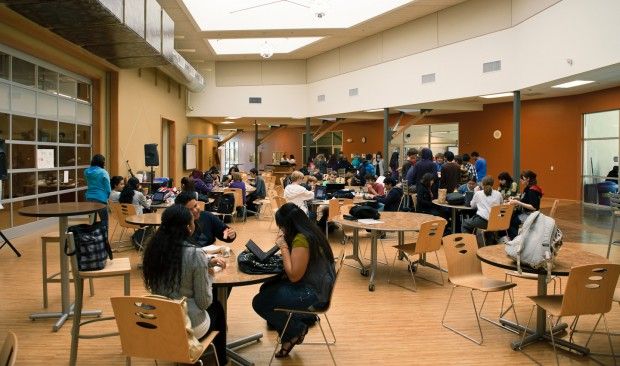 1% 1% |
|||||||||||||
| 1900 | 163,065 | 22.5% | |||||||||||||
| 1910 | 214.744 | 31.7% | |||||||||||||
| 1920 | 234.698 |
7 | |||||||||||||
| 19369 19369 19369
0080 271,606 |
15.7% | ||||||||||||||
| 1940 | 287,736 | 5.9% | |||||||||||||
| 1950 | 311,349 | 8.2% | |||||||||||||
| 1960 | 313,411 | 0.7% | |||||||||||||
| 1970 | 309.980 | −1%
7 | |||||||||||||
| 1980 | 0117 | ||||||||||||||
| 1990 | 272,235 | 0.7% | |||||||||||||
| 2000 | 287,151 | 5.5% | |||||||||||||
| 2010 | 285,068 | −0.7% | |||||||||||||
| 2019 (rating) | 308.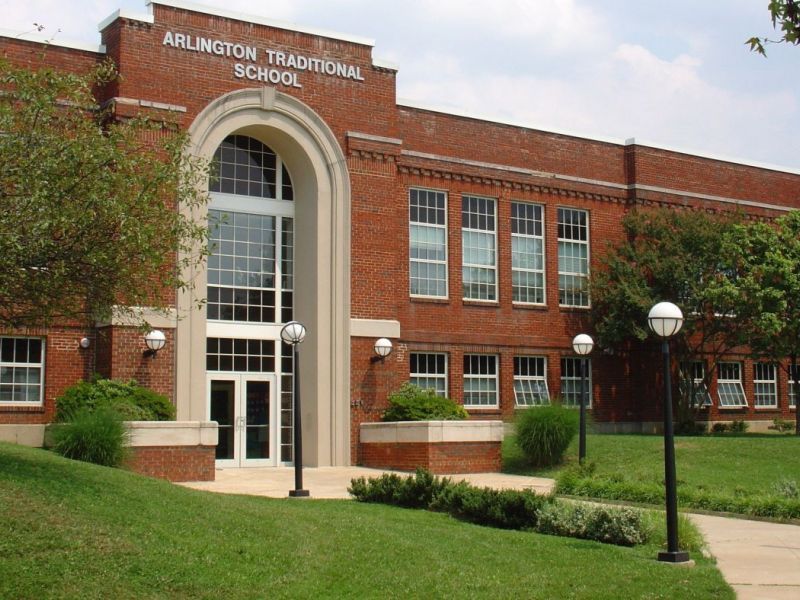 096 096 |
[3] | 8.1% | ||||||||||||
| Tenal Census of the US population [57] | American Highest Disco League | Sea stadium of the foam (3.500) | |||||||||||||
| Saints Paul | baseball | American Association | CHS (7,210) | NL: 1993, 1996 and 1996 and 1996.
AA: [116] 2019 |
|||||||||||
Government and politics
0012
St.
St. Paul City Hall and Ramsey County Courthouse
The city is also the county seat of Ramsey, named after Alexander Ramsey, the state’s first governor. The county once occupied much of the present-day metropolitan area and was originally to be named Saint Paul County, after the city.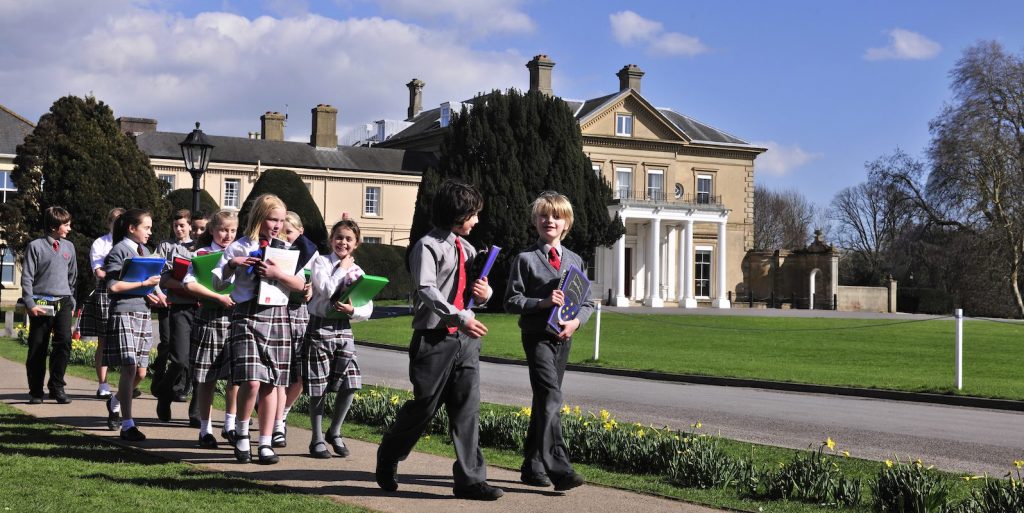
State and federal
See also: Minnesota Legislature and Politics of Minnesota § Federal representation
Saint Paul is the capital of Minnesota. The city is home to the Capitol Building, designed by a resident of Saint Paul. Cass Gilbert, and an apartment building and Senate office buildings. The Minnesota Governor’s Residence, which is used for some state functions, includes Summit Avenue. The Democratic, Farmers and Labor Party of Minnesota (affiliated with the Democratic Party) is headquartered in Saint Paul. Saint Paul is also home to numerous government departments and agencies, such as the Minnesota Department of Natural Resources.
The city is divided into four Minnesota Senate districts (64, 65, 66, and 67) and eight Minnesota House districts (64A, 64B, 65A, 65B, 66A, 66B, 67A, and 67B), all of which are Democratic. . [126] [127]
St. Paul is the heart of Minnesota’s 4th congressional district represented by Democrat Betty McCollum. The area has been continuously in DFL hands since 1949. Minnesota is represented in the USA. Senate Democrat Amy Klobuchar, former Hennepin County Attorney and Democrat Tina Smith, former lieutenant governor of Minnesota. 930s at Hamline University taking the final
St. Paul ranks second in the US in terms of the number of institutions of higher education per capita, behind Boston. [128] Institutions of higher education that call St. Paul home include three public and eight private colleges and universities, and five institutions of higher learning. Notable colleges and universities include St. Catherine’s University, Concordia University, Hamline University, Macalester College, and St.
C St. Paul Public Schools The area is the largest school district in the state and serves approximately 39,000 students. The district is extremely diverse, with students from families speaking 90 different languages, although most schools only use five languages: English, Spanish, Hmong, Karen and Somali. There are 82 schools in the district, including 52 schools. elementary schools, twelve high schools, seven high schools, ten alternative schools, and one special education school, which employs over 6,500 teachers and staff. The district also oversees community education programs for preschoolers and adults, including preschool family education, the GED Diploma, language programs, and a variety of learning opportunities for community members of all ages. In 2006, Saint Paul Public Schools celebrated its 150th anniversary.
A variety of K-12 private, parochial, and public charter schools are also represented in the city. In 1992, Saint Paul became the first city in the US to sponsor and open a charter school, which is now found in most states across the country. [132] Saint Paul is currently home to 21 charter schools as well as 38 private schools. [133] B Saint Paul Public Library The system includes the central library and twelve branches. [134]
Media
Main article: Twin Cities Media
Minnesota Public Radio Headquarters in downtown St. Paul
St. Paul residents can receive 10 television stations, five of which broadcast from Saint Paul. One daily St. Paul’s Pioneer Press , two weekly district papers, East Side Survey and City Pages (owned by The Star Tribune Company), and the city is served by several monthly or semi-monthly neighborhood newspapers.
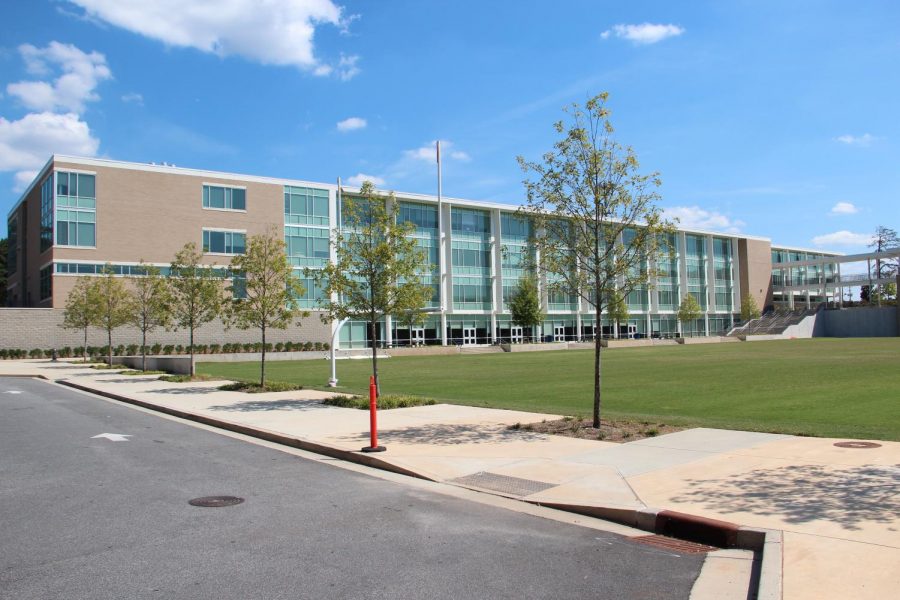
Transportation
Interstate and highways
|
Interstates The layout of city streets and roads has often drawn complaints. While he was Governor of Minnesota, Jesse Ventura showed up at Late Show with David Letterman , [142] and remarked that the streets were designed by “drunken Irishmen”. [143] He later apologized, though people had been complaining about the fractured grid system for more than a century by that point. Public TransportationSee also: Metro Transit (Minnesota) Metro Transit provides bus service and light rail in the Minneapolis–St. The floor of the area. METRO Green Line is an 11-mile (18 km) Light Rail line that connects downtown St. Paul to downtown Minneapolis with 14 stations in St. Paul. The Green Line runs west along University Avenue, through the University of Minnesota campus, until it links up and then shares stations with the METRO Blue Line in downtown Minneapolis. Construction began in November 2010 and the line began service on June 14, 2014. [145] Roughly 45,000 people rode on the first day; an average 28,000 riders are expected per day. Metro Transit opened METRO A Line, Minneapolis–St. Paul’s first arterial bus rapid transit line, along Snelling Avenue and Ford Parkway. The A Line connects the METRO Blue Line at 46th Street to Rosedale Center with a connection at the Green Line Snelling Avenue Station. The A Line is the first in a series of planned arterial bus rapid transit lines and is set to open in early 2016. [147] Rail Amtrak with Empire Builder between Chicago and Seattle stops twice daily in each direction at the newly renovated St. Paul Union Depot. [148] A Minnesota Department of Transportation study found that increased daily service to Chicago should be economically viable, especially if it originates in St. Paul and does not experience delays from the rest of the western route of the Empire Builder. [150] Saint Paul is the site of the Pig’s Eye Yard, a major freight classification yard for the Canadian Pacific Railway. Saint Paul Downtown Airport (Holman Field) Airports Holman Airfield is across the river from downtown St. Paul. Lamprey Lake was there until the Army Corps of Engineers filled it with dredgings starting in the early 1920s. Northwest Airlines began initial operations from Holman in 1926. During WWII Northwest had a contract to install upgraded radar systems in the B-24c, employing 5,000 at the airfield. After WWII, Holman Airfield competed with the Speedway Field for the Twin Cities’ growing aviation industry and lost out in the end. For the most part Paul’s aviation needs are served by the Minneapolis – Saint Paul International Airport (MSP), which sits on 2,930 acres (11.9 km 2 ) in Fort Snelling Unorganized Territory bordering the city to the southwest. MSP serves three international, 12 domestic, seven charter, and four regional carriers [154] and is the hub of Delta Air Lines, Mesaba Airlines and Sun Country Airlines. [155] BuscriptsSaint-Paul City Pobima are: [156] [157]
Famous people
Olson (born 1941), missionary Kappler, Charles J., Washington: Government Printing Office, ed. (1904). Indian Affairs: Laws and Treaties. II (Treaties, 1778–1883). Oklahoma State University Library. Cite journal requires For articles of the same name, see Eau Claire. Eau Claire is a city located in west-central Wisconsin, United States. It is the county seat of Eau Claire County. At the 2010 census, its population was 65,883.
ToponymyThe toponym “O Claire” dates back to the times of New France. The first European explorers to travel the northern territory of French Louisiana were French Canadian fur traders and trappers from 17th – th centuries. The city is named after the Eau Claire River, which flows through the area and is a tributary of the Chippewa River, itself a tributary of the Mississippi River.
Geography
| ||||||||||||||||||||||||||||||||||||||||||||||||||||||||||||||||||||||||||||||||||||||||||||||||||||||||||||||||||||||||||||||||||||||||||||||||||||||||||||||||||||||||||||||||||||||
| Month | Jan | Mar | Apr | May | June | Jul | Aug | Sep | October | Nov | December | year | |||||||||||||||||||||||||||||||||||||||||||||||||||||||||||||||||||||||||||||||||||||||||||||||||||||||||||||||||||||||||||||||
|---|---|---|---|---|---|---|---|---|---|---|---|---|---|---|---|---|---|---|---|---|---|---|---|---|---|---|---|---|---|---|---|---|---|---|---|---|---|---|---|---|---|---|---|---|---|---|---|---|---|---|---|---|---|---|---|---|---|---|---|---|---|---|---|---|---|---|---|---|---|---|---|---|---|---|---|---|---|---|---|---|---|---|---|---|---|---|---|---|---|---|---|---|---|---|---|---|---|---|---|---|---|---|---|---|---|---|---|---|---|---|---|---|---|---|---|---|---|---|---|---|---|---|---|---|---|---|---|---|---|---|---|---|---|---|---|---|---|---|---|
Avg. High Temperature °C High Temperature °C
|
-4 | -2 | 4 | 13 | 21 years old | 26 year | 28 year | 27 | 22 | 15 | 5 | -2 | 12 | ||||||||||||||||||||||||||||||||||||||||||||||||||||||||||||||||||||||||||||||||||||||||||||||||||||||||||||||||||||||||||||||
| Avg. Low temperature °C | -15 | -13 | -6 | 1 | 7 | 13 | 16 | 14 | 10 | 3 | -3 | -11 | 1 | ||||||||||||||||||||||||||||||||||||||||||||||||||||||||||||||||||||||||||||||||||||||||||||||||||||||||||||||||||||||||||||||
| Rain in mm | 27.9 | 27.9 | 45.7 | 68.6 | 101.6 | 119.4 | 86.4 | 94 | 91.4 | 63.5 | 43.2 | 30.5 | 800.1 | ||||||||||||||||||||||||||||||||||||||||||||||||||||||||||||||||||||||||||||||||||||||||||||||||||||||||||||||||||||||||||||||
| Census history | |||
|---|---|---|---|
| Anya. | Pop. | % ± | |
| 1870 | 2 293 |
– |
|
| 1880 | 10 119 |
▲ + 341. 3% 3% |
|
| 1890 | 17 415 | ▲ + 72.1% | |
| 1900 | 17 517 | ▲ + 0.59% | |
| 1910 | 18 310 | ▲ + 4.53% | |
| 1920 | 20 906 | ▲ + 14.18% | |
| 1930 | 26 287 | ▲ + 25.74% | |
| 1940 | 30 745 |
▲ + 16. 96% 96% |
|
| 1950 | 36 058 | ▲ + 17.28% | |
| 1960 | 37 987 | ▲ + 5.35% | |
| 1970 | 44 619 | ▲ + 17.46% | |
| 1980 | 51 509 | ▲ + 15.44% | |
| 1990 | 56 856 | ▲ + 10.38% | |
| 2000 | 61 704 |
▲ + 8.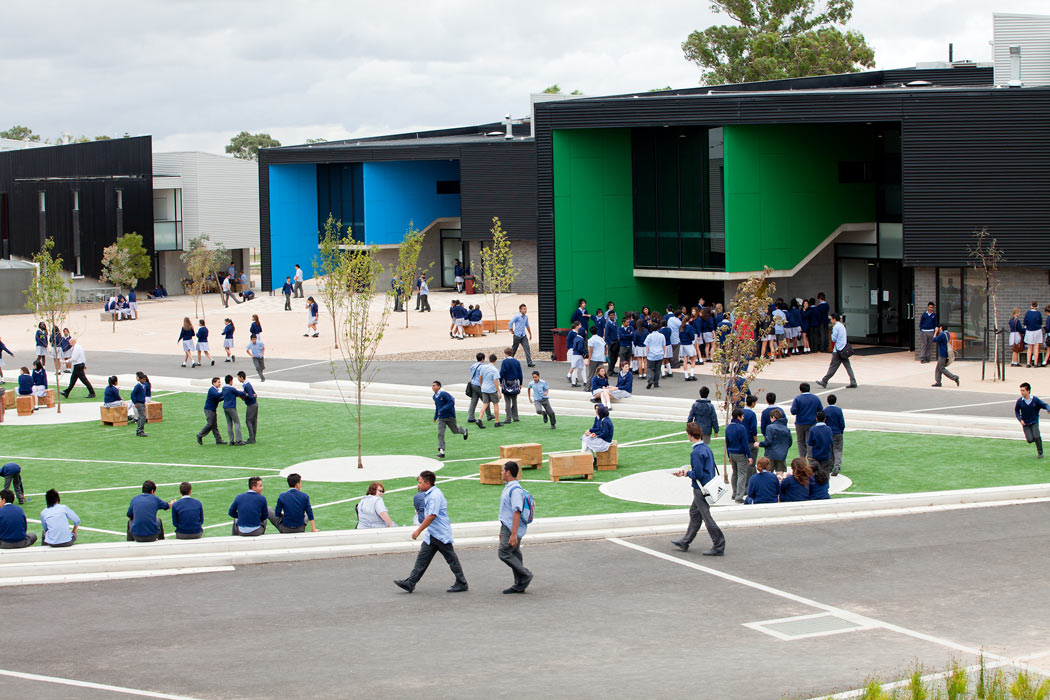 53% 53% |
|
| 2010 | 65 883 | ▲ + 6.77% | |
| Is. 2017 | 68 587 | ▲ + 4.1% | |
| Group | Pure water | Wisconsin | United States |
|---|---|---|---|
| White | 91.4 | 86.2 | 72.4 |
| Asians | 4.6 | 2.3 | 4.8 |
| Metis | 1.8 | 1.8 | 2.9 |
| black people | 1.1 | 6. 3 3 |
12.6 |
| Other | 0.6 | 2.4 | 6.2 |
| Native Americans | 0.5 | 1.0 | 0.9 |
| General | 100 | 100 | 100 |
| Hispanics | 1.9 | 5.9 | 16.7 |
According to the American Community Survey for the period 2011-2015. 93.70% of the population over the age of 5 reported speaking English at home, while 2.32% reported speaking Hmong, 1.35% Spanish, 0.59% Chinese , 0.50% – in the Hmong language. German and 1.53% other language.
Religion
Water St.
Synagogue : Temple Sholom in Eau Claire
In addition to the only synagogue, there are several churches in the city representing different bodies of Christianity.
- Apostolic Church – 1 meeting
- Assemblies of God – 2 meetings
- Baptist Church – 8 churches (including one from the SBC congregation)
- Catholic – 5 parishes in the Diocese of La Crosse and Eau Claire, which has three other parishes: one in Altoona, one in Elk Mound and one in Brackett.
- Christian Science – 1 meeting
- Church of Christ – 2 meetings
-
Episcopal – 1 congregation
- The Episcopal Diocese of Eau Claire has a branch in Eau Claire.
- Hmong Christian Alliance – 1 meeting
- Jehovah’s Witnesses – 1 congregation
-
Lutheran – about 20 churches representing 6 cathedrals
- Evangelical Lutheran Synod (ELS)
- Evangelical Lutheran Church in America (ELCA)
- Lutheran Brethren Church of America
- Lutheran Church – Missouri Synod (LCMS)
- Church of the Lutheran Confession
- Wisconsin Evangelical Lutheran Synod (WELS)
- Methodists – 4 meetings
- Mennonite Church USA – 1 meeting meeting 2 Sundays a month
- The Church of Jesus Christ of Latter-day Saints – 1 meeting
- Nazarene – 1 meeting
- Pentecostal – about 10 affiliated congregations
- Presbyterian – 2 congregations
- Religious Society of Friends – 1 meeting
- Salvation Army – 1 meeting
-
Seventh-day Adventist Church – No members, however there is 1 congregation each in the nearby towns of Altoona and Chippewa Falls.
- Unitarian Universalists – 1 congregation
- United Church of Christ – 3 meetings
- Unity School of Christianity – 1 congregation
- Wesleyan Church – 1 meeting
Education
University of Wisconsin at Eau Claire
Eau Claire has several universities and high schools, including the University of Wisconsin at Eau Claire (UWEC), Immanuel Lutheran Private Lutheran College, and three campuses of Chippewa Valley Technical College (CVTC).
There are two private high schools in Eau Claire: Catholic Church affiliated Regis High School and Immanuel Lutheran College High School and High School.
The Eau Claire Area School District has two public high schools: Memorial High School and North High School.
There are two charter schools in Eau Claire: McKinley Charter School and Technology Charter School.
There are three public high schools in the Eau Claire Area School District: DeLong High School, Northstar High School, and South High School.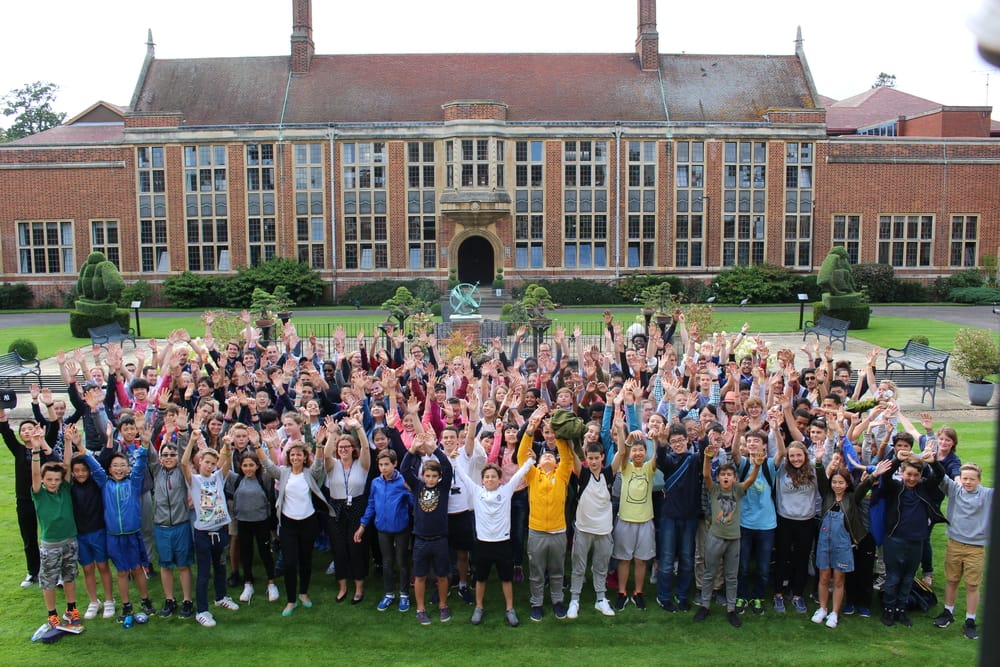
mass media
Written press
Local Daily – Eau Claire Leader-Telegram [4], circulation of almost 26,901 copies. A day on weekdays and 38,824 copies. For Sunday publication. There is also a bimonthly Volume One [5] and a number of smaller monthly or other publications distributed in the region.
TV
TV channels in the Eau Claire region:
- WEAU Channel 13 (NBC)
- WQOW, channel 18 (ABC)
- WHWC, channel 28 (PBS; Menomonie)
- WEUX, channel 48 (FOX)
WEAU also serves the La Crosse region, while WKBT (CBS) La Crosse serves Eau Claire.
Radio
Economy
The timber industry led the development of Eau Claire at the end of the XIX – century. There were once 22 sawmills operating in the city. Today, medicine and education are Eau Claire’s main areas of employment.
After the loss of several thousand jobs in the late 1990s (due to the closure of the Uniroyal tire plant – Uniroyal became part of Michelin), the city’s economy changed with the opening of a number of computer equipment factories such as Hutchinson.
Eau Claire is home to several national/regional companies including Menards, National Presto Industries, Inc. , Silver Spring Gardens (the world’s largest horseradish producer), Ebert & Gerberts (Midwest sandwich chain).
Transport
Airports
Eau Claire is served by the Chippewa Valley Regional Airport.
Public transport
- Eau Claire Transit bus line.
Highways and main axles
| Interstate 94 |
| U.S. Route 12 (“Clairemont Avenue”) |
| U.S. Route 53 (“Bypass”) |
|
Business-US-53 (“Hastings Way”) |
| Highway 29 (Devi d’Eau Claire north) |
| Highway 37 (“Hendrickson Drive”) |
| Highway 85 (terminates at Wisconsin 37 near Eau Claire) |
| Highway 93 |
| Highway 124 (shortened in 2006, now ends at Halley Lake) |
| Highway 312 (“North Crossing”) |
Culture and Heritage
Sergeant Boyd Bandstand in Owen Park is listed on the National Register of Historic Places.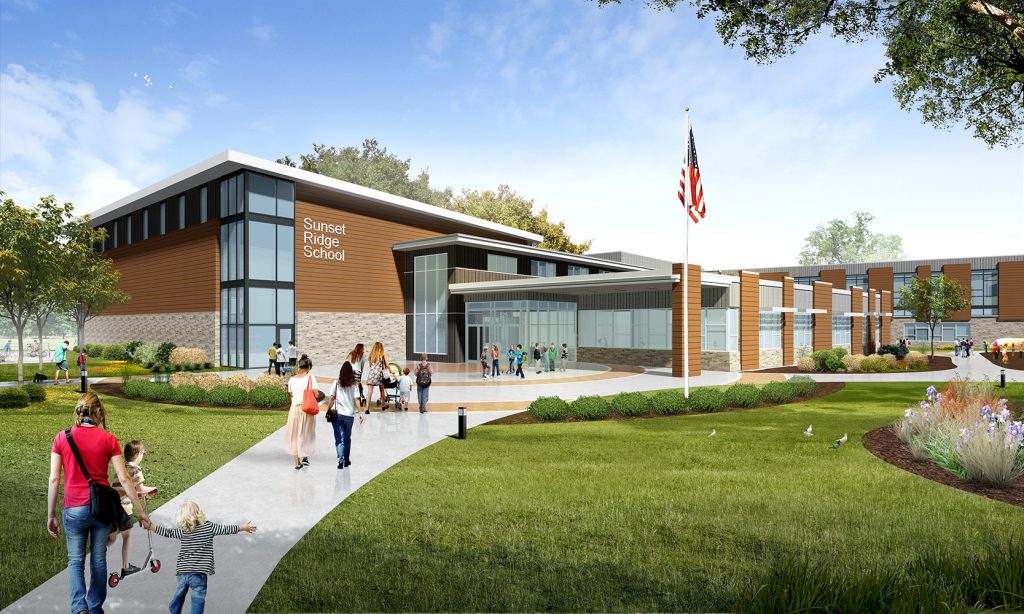
Sports
The Eau Claire Express is a baseball team that plays in the Northwoods League, an NCAA baseball summer. Their matches are played at Carson Park in Eau Claire.
Eau Claire Cavaliers, an amateur baseball team who also play at Carson Park.
The Chippewa Valley Raptors, a member of the semi-professional Great Plains Football League, play at Carson Park Stadium. Since 2007 Crush Eau Claire has become 2 and Sibision in the sector.
O Claire also has a figure skating club at the Hobbs Ice Arena.
Personalities associated with the city
Twinning
- Lismore, Australia
Recommendations
-
(fr) This article is taken in whole or in part from the English Wikipedia article titled “Eau Claire, Wisconsin” (see list of authors) .
- ↑ “ Weatherbase: Historical weather for Eau Claire, Wisconsin ”
- ↑ (in) “ Eau Claire, WI Population – Census 2010 and 2000 ” on censusviewer.com.
- ↑ (in) “ Wisconsin population – 2010 and 2000 census ” On censusviewer.com.
- ↑ (in) “ Language Spoken at Home by Ability to Speak English for Population 5 and Over “.
- ↑ [1]
- ↑ [1]
- ↑ http://www.uucec.org/
- ↑ a and b [1]
- ↑ [2]
- ↑ [3]
External links
|
72 county towns of Wisconsin |
|
|---|---|
| Alma Antigo Appleton Ashland Balsam Lake Baraboo Barron Black River Falls Chilton Chippewa Falls Crandon Darlington Dodgeville Durand Eagle River Eau Claire Elkhorn Ellsworth Florence Fond du Lac Friendship Green Lake Hayward Hudson Hurley Janesville Jefferson Juneau Kenosha Keshena Kewaunee La Crosse Ladysmith Lancaster Madison Manitowoc Marinette Mauston Medford Meenon Menomonie Merrill Milwaukee Monroe Montello Neillsville Okonto Oshkosh Phillips Portage Prairie du Chien Racine Rhinelander Richland Center Shawano Sheboygan Shell Lake Sparta Stevens Point Sturgeon Bay Superior Viroqua Washburn Waukesha Wopaka Wausau Watoma West Bend Whitehall Wisconsin Rapids |
wikipedia.org/wiki/Special:CentralAutoLogin/start?type=1×1″ alt=”” title=””>
list of the oldest in the world, their description that with them now
Thousands of high-tech, safe, comfortable airports serve travelers all over the world every day. Some of them have already celebrated their centennial anniversary. In this article, we will consider the oldest airport terminals in the world: Albany, Paris-Le Bourget, Rome Ciampino and many others.
Content
- 1 Airports opened until 1950
- 1.1 Actors
- 1.2 Airports that have lost value
- 2 Conclusion
Airports, open until 1950
includes the oldest and the list of the oldest and the list and regional significance, operating and used for other purposes.
Operating
Several airports, opened about a century ago, still successfully perform their functions.
Albany
Opened: 1909.
Location: Albany, New York, USA.
The history of the airport began in 1908, when an airstrip (RWY) was opened on the polo fields near the town of Colony (near modern Albany). Aviation pioneers trained here: Charles Lindbergh, Amelia Earhart, James Doolittle.
In 1909 the airfield was moved closer to the city of Albany. In 1928 Mayor John Boyd Thatcher decided to build a new modern airport.
Fact . Albany is the first and oldest public airport in the United States.
Initially, the airfield functioned intermittently and was often closed for technical reasons, which prompted the authorities to modernize the infrastructure in the 1930s and 1940s. Since 1942, Albany has been operating without restrictions (except for weather conditions). In 1962, a new terminal building was built, which was expanded in 1965. In 2000, the construction of a new terminal with an area of 1500 m2 was completed.
Status: operates regular domestic and charter flights, international flights to Montreal and Ottawa.
Carriers: Southwest Airlines, Delta Air Lines, American Airlines, United Airlines, Allegiant Airlines.
Passenger traffic : 1.7 million people per year.
Minneapolis St. Paul
Opened: 1921.
Location: Minneapolis-St. Paul metropolitan area, Minnesota, USA.
The first small runway, called Speedway Field, was located on a bankrupt racetrack leased by a group of local businessmen. Minneapolis airport has been named since 1944.
With the development of passenger and cargo air transportation, it has become a major commercial air port, ranking 16th in the world in terms of the number of take-offs and landings of ships.
Passengers are served by two terminals:
- im. Charles Lindbergh, which opened in 1962;
- im. Hubert Humphrey, built in 2001.
Air National Guard units operating transport aircraft are based in Minneapolis.
Fact .
The 1970 disaster film Airport was filmed in Minneapolis St. Paul.
Status: serves about 130 domestic and 14 international scheduled and charter flights.
Carriers: Southwest Airlines, Delta Air Lines, American Airlines, American Eagle, United Airlines, Alaska Airlines, Sun Country Airlines.
Passenger traffic: about 36.5 million people per year.
Sydney (Kingsford Smith)
Opened: 1920.
Location: Sydney, Australia.
For the first time, the runway was graveled at the Port of Sydney. The terminal retained its original appearance until the 1960s. The new building was opened in 1970, since 1992 it has been regularly reconstructed due to the many times increased traffic flow.
The airport has three passenger terminals, two of which serve domestic flights and one international.
Fact . Takeoffs and landings of aircraft are prohibited here from 23:00 to 06:00 daily.
Such a “curfew” was introduced due to numerous complaints from residents about the noise of jet engines.
Status: serves most domestic and international flights on the continent.
Carriers: Aircruising Australia, Eastern Australia Airlines, Jetstar Airways, Qantas, Regional Express, Tigerair Australia, Virgin Australia.
Passenger traffic: about 40 million people per year.
Don Muang
Opened: 1914.
Location: Bangkok, Thailand.
The first flights at the Don Muang airfield were made on March 8, 1914 years Royal Thai Air Force. Commercial flights have been carried out since 1924.
Fact . During the Vietnam War, Don Mueang was chosen as the main command and logistics center for the US Air Force.
In 2006, the spelling of the airport’s name changed to Don Muang, although most airlines and the Thais themselves use the old spelling.
In September of the same year, the activity of the port was terminated due to the opening of a new air harbor Suvarnabhumi. But higher operating costs and safety concerns forced the country’s Ministry of Transport to reopen Don Mueang in 2007 and relocate some domestic flights there.
Status: since March 2012 serves all budget, charter and non-related flights.
Carriers: Nok Air, Orient Thai, Air Asia, Thai Air Asia.
Passenger traffic: 40.758 million people per year.
Schiphol
Opened in 1916.
Location: Haarlemmermeer, The Netherlands.
The history of Europe’s most important airport begins with a small military base consisting of several barracks and a dirt runway.
Civil aircraft have been accepted since 1920, by 1940 there were 4 paved runways at the airfield.
During World War II, Schiphol was captured and destroyed by the Germans. The airfield was quickly restored, and already on July 8, 1945, the first civilian aircraft landed.
In 1949 a passenger terminal was built, in 1967 it was significantly expanded and is still in operation.
Fact . Rijk Township was demolished to make way for the expanding airport.
Schiphol was built according to the concept of a single terminal: a huge area is divided into 3 halls connected by passages. From each there are exits to almost all boarding piers.
Status: serves flights to 260 destinations in 91 countries.
Carriers: Corendon Dutch Airlines, KLM cityhopper, KLM Royal Dutch Airlines, Transavia Airlines, TUI Airlines Netherlands.
Passenger traffic: 71 million people per year.
Rome Ciampino
Opened: 1916.
Location: Rome, Italy.
From 1944 until the end of World War II, it served as an airbase for the allied forces.
From its opening until 1960, it remained Rome’s main airport, serving up to 2 million passengers a year.
Fact . On April 10, 1926, the first polar air expedition started from Ciampino on the airship N-1, led by Amundsen and Umberto Nobile.
For more than forty years, the port received only charter and executive aircraft. In 2007, due to the interest of low-cost companies, the terminals were expanded and modernized.
Status: operates charter and scheduled flights of budget airlines.
Carriers: Mistral Air, Ryanair.
Passenger traffic: 5.9 million people per year.
Hamburg Airport
Opened: 1911.
Location: Hamburg, Germany.
The construction of the airfield at the beginning of the 20th century was financed by private individuals.
Used 45 ha for airship flights, by 1913 the area grew to 60 ha and port services switched to aircraft operation.
The first large-scale reconstruction took place in the 60s.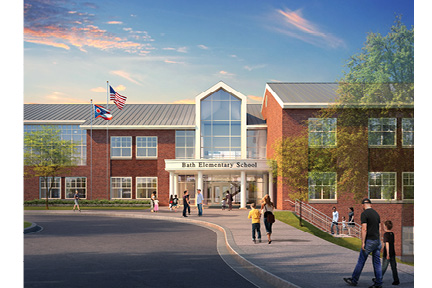
Fact . The airport got its name during the British occupation. It served as a base for military transportation.
Status: serves domestic and international flights.
Carriers: Eurowings, Germanwings, Lufthansa CityLine.
Passenger traffic: 17.2 million people per year.
Krasnodar International Airport
Year of opening: 1934.
Location: Krasnodar, Russia.
In 1932, not far from the Pashkovsky state farm, there was a base for the Aviation Society for Pest Control, on the basis of which an air squadron of the Civil Air Fleet was created. This unit was located on the territory of the present port.
In 1934, a significant part of the detachment’s aircraft was converted into passenger aircraft, which flew to Maikop, Sochi, Anapa.
Now passengers are served in two terminals: for domestic and international airlines.
Fact . The terminal ranks ninth in terms of passenger traffic among Russian airports.
Status: serves domestic and international flights.
Carriers: Aeroflot, UTair, Ural Airlines, S7 Airlines.
Passenger traffic: 3.5 million people per year.
Airports that have lost their importance
Not all old airport terminals have grown into large modern ports. Some are still open and serve as a living reminder of the past of aviation and the people who dedicated their lives to it.
College Park
Opened: 1909.
Location: College Park, Maryland, USA.
Founded as a training ground in 1909 on the initiative of the US Army Signal Corps Command.
Civil aircraft flights began in 1911.
A small airport until 1973 was a place for pilot training, testing of new aircraft and equipment.
Fact . In 1918, College Park became the first airmail station.
Until 2011, it received civil aircraft of domestic airlines. Following the attacks in September 2011, for security reasons, the airport’s activities were restricted by the authorities due to its proximity to the capital.
College Park is home to the Aviation Museum and an airfield for light private aircraft.
Le Bourget
Opened: 1919.
Location: Paris, France.
Prior to the construction of Le Bourget, Orly was the only airport in Paris.
Fact . Charles Lindbergh landed at Le Bourget after the first transatlantic flight in 1927.
In 1977 the airport was closed for international traffic, at 1980 – for internal.







 Paul Area.
Paul Area. The school does not shy away from challenging it’s students which is the number one reason that we chose this school for our children. They instill the importance of accountability at a very young age while also focusing on strong character traits & leadership. And try not to mistake the fact that they get homework in elementary school for it being an uncaring environment. Our children have always felt well loved by their teachers – even my rambunctious, sometimes in trouble, hard to sit still 4th grade boy! He needs boundaries & guidance and has been given that by each of his teachers in a caring & effective way. We have never felt intimidated by the staff or administration. In fact we are thankful that they run a tight ship!… Read 8 reviews
The school does not shy away from challenging it’s students which is the number one reason that we chose this school for our children. They instill the importance of accountability at a very young age while also focusing on strong character traits & leadership. And try not to mistake the fact that they get homework in elementary school for it being an uncaring environment. Our children have always felt well loved by their teachers – even my rambunctious, sometimes in trouble, hard to sit still 4th grade boy! He needs boundaries & guidance and has been given that by each of his teachers in a caring & effective way. We have never felt intimidated by the staff or administration. In fact we are thankful that they run a tight ship!… Read 8 reviews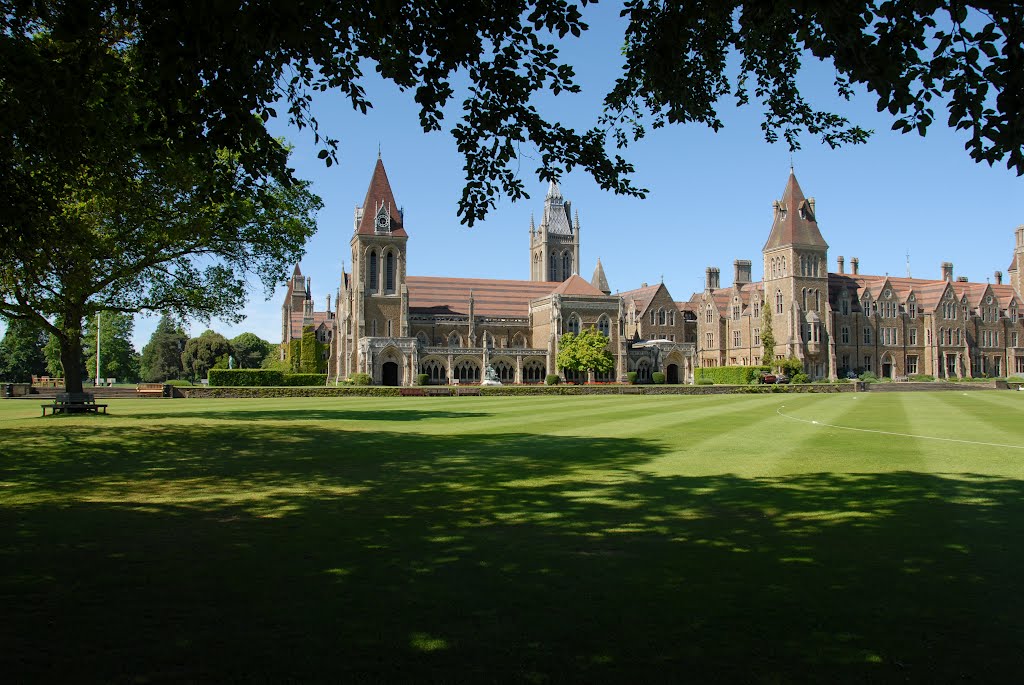
 With any immersion program, the first couple years are a struggle, as students may fall behind mainstream schools – however, by 5th grade, my son is scoring well above average. I highly recommend this school…. Read 15 reviews
With any immersion program, the first couple years are a struggle, as students may fall behind mainstream schools – however, by 5th grade, my son is scoring well above average. I highly recommend this school…. Read 15 reviews Paul Area.
Paul Area. …
… … Read 6 reviews
… Read 6 reviews Paul Area
Paul Area Paul Area.
Paul Area. 4 stars.
4 stars. 5 stars.
5 stars.
 We couldn’t be happier with the staff, the style, and the community…. Read 3 reviews
We couldn’t be happier with the staff, the style, and the community…. Read 3 reviews
 The small school feel as well as…We have also made some great friendships with other students and parents. We genuinely love this community. Highly recommend PACT!.
The small school feel as well as…We have also made some great friendships with other students and parents. We genuinely love this community. Highly recommend PACT!. Paul Area
Paul Area It is rigorous, but I see my child Learning so much more than other kids at other schools even the ones that are older.I also believe this builds behaviors/habits that they will have for the rest of their lives!.
It is rigorous, but I see my child Learning so much more than other kids at other schools even the ones that are older.I also believe this builds behaviors/habits that they will have for the rest of their lives!.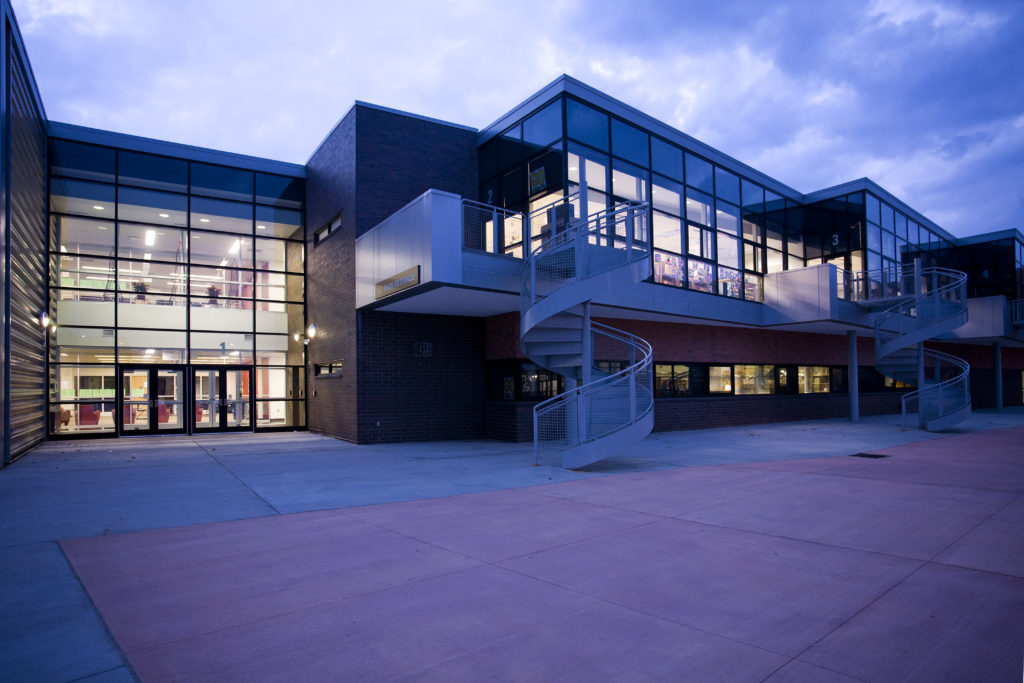 the food have gotten a lot better throughout the years. Having ipads for learning is cool but the school is very….
the food have gotten a lot better throughout the years. Having ipads for learning is cool but the school is very…. We also like that the school is small and virtually everyone knows everyone (kids, teachers, parents, and staff). The school is also organizes a few events during academic year. Our only issue was long commute time (we live far away) and transportation in general (driving every day was exhaustive and bus company was not that good). This improved significantly this year. We highly recommend the school…. Read 4 reviews
We also like that the school is small and virtually everyone knows everyone (kids, teachers, parents, and staff). The school is also organizes a few events during academic year. Our only issue was long commute time (we live far away) and transportation in general (driving every day was exhaustive and bus company was not that good). This improved significantly this year. We highly recommend the school…. Read 4 reviews Whenever I need a volunteer to “stuff” book baggies, someone will volunteer or if I am running low on tissues or supplies, a student comes in the next day to replenish. I love the family feel at WLA!
Whenever I need a volunteer to “stuff” book baggies, someone will volunteer or if I am running low on tissues or supplies, a student comes in the next day to replenish. I love the family feel at WLA! The administration at WLA is amazing. They are accommodating and always keep us in the loop of events and assemblies. Whenever we need anything, we just need to ask and they will find a way to get it!.
The administration at WLA is amazing. They are accommodating and always keep us in the loop of events and assemblies. Whenever we need anything, we just need to ask and they will find a way to get it!. The school teaches everyone to have an “unconditional positive regard for all” and you can feel it when you walk through the building. Also, they expanded the building and it is so beautiful!… Read 3 reviews
The school teaches everyone to have an “unconditional positive regard for all” and you can feel it when you walk through the building. Also, they expanded the building and it is so beautiful!… Read 3 reviews .. Read 10 reviews
.. Read 10 reviews MSA has a large variety of clubs and activities which is awesome because everyone can find something they’ll enjoy…. Read 65 reviews
MSA has a large variety of clubs and activities which is awesome because everyone can find something they’ll enjoy…. Read 65 reviews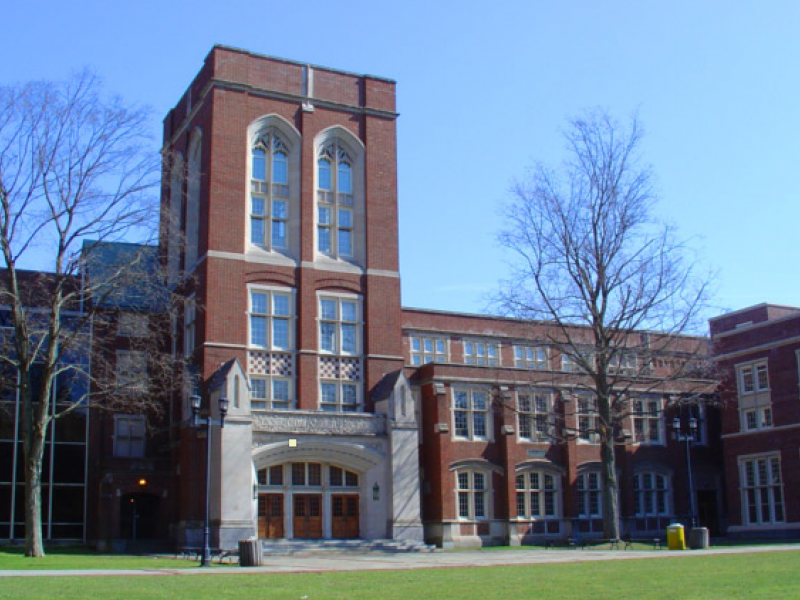 From Logic and Rhetoric to Latin and Ancient Lit., you receive a background steeped in classical knowledge. You will find a mind to comprehend, an ear to listen, and the learning to come up with solutions.
From Logic and Rhetoric to Latin and Ancient Lit., you receive a background steeped in classical knowledge. You will find a mind to comprehend, an ear to listen, and the learning to come up with solutions. From Logic and Rhetoric to Latin and Ancient Lit., you receive a background steeped in classical knowledge…. The requirements are structured to simulate the difficulty of college, thereby most graduates claim that college was easier than high school! If you are not ready for the rigor, you may… However, if you are an individual, like me, who thrives beneath struggle and high expectations, this would be the place for you..
From Logic and Rhetoric to Latin and Ancient Lit., you receive a background steeped in classical knowledge…. The requirements are structured to simulate the difficulty of college, thereby most graduates claim that college was easier than high school! If you are not ready for the rigor, you may… However, if you are an individual, like me, who thrives beneath struggle and high expectations, this would be the place for you..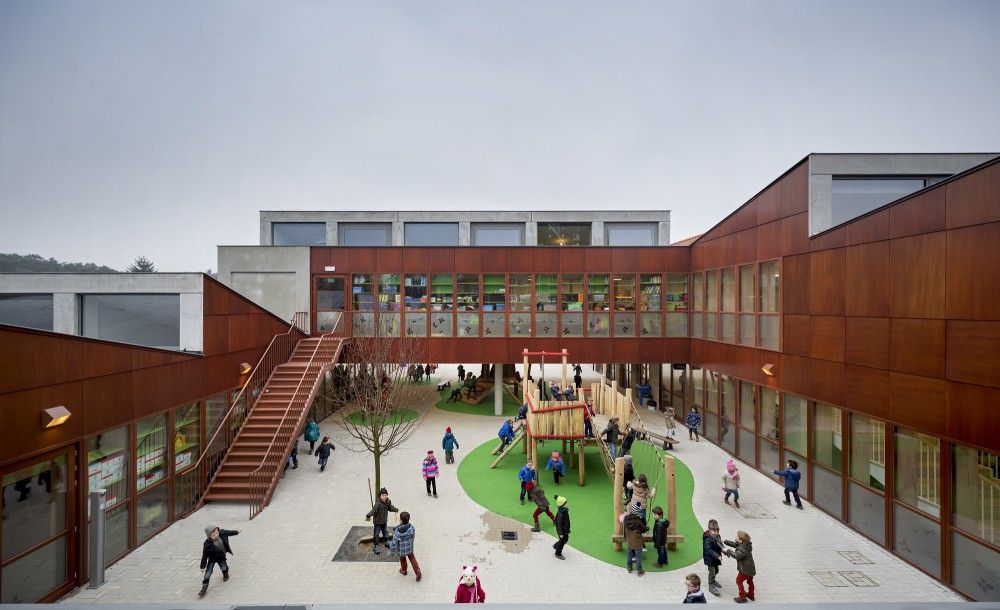 Course offerings in high school are not very diverse, but as our student body grows the school has shown interest in expanding course options. As an incoming senior who has been there since fifth grade, I have been through several moves and renovations with the school as it grows in size and each time we get a new space it is used and students are generally pleased with its use. We just got a new catering service and the pizza is so good I can’t wait to try more of the food! Our school is small and rigorous, if you put in the work you will be well prepared for college and beyond…. Read 78 reviews
Course offerings in high school are not very diverse, but as our student body grows the school has shown interest in expanding course options. As an incoming senior who has been there since fifth grade, I have been through several moves and renovations with the school as it grows in size and each time we get a new space it is used and students are generally pleased with its use. We just got a new catering service and the pizza is so good I can’t wait to try more of the food! Our school is small and rigorous, if you put in the work you will be well prepared for college and beyond…. Read 78 reviews Our school is really small but is growing quickly so recently our….
Our school is really small but is growing quickly so recently our…. … art on the other hand is less represented and strong. Many people go on to Business or STEM at this school- but it isnt unheard of to see people go into Humanities. Overall, SCPA’s limitations and boundaries are offset by the faculty and numerous opportunities about. School is what you make of it- and SCPA is surely a place to thrive if you give determined effort!… Read 150 reviews
… art on the other hand is less represented and strong. Many people go on to Business or STEM at this school- but it isnt unheard of to see people go into Humanities. Overall, SCPA’s limitations and boundaries are offset by the faculty and numerous opportunities about. School is what you make of it- and SCPA is surely a place to thrive if you give determined effort!… Read 150 reviews Paul Area
Paul Area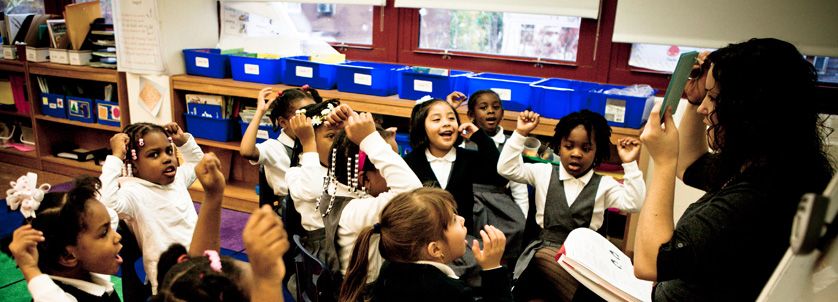 The curriculum is hands-on and engaging. The teachers and staff are all….
The curriculum is hands-on and engaging. The teachers and staff are all…. If you care about dances and sports and the “traditional” high school experience, it may not be the school for you. However if you want a school with an amazing, supportive, loving, all inclusive community this is the place for you!… Read 187 reviews
If you care about dances and sports and the “traditional” high school experience, it may not be the school for you. However if you want a school with an amazing, supportive, loving, all inclusive community this is the place for you!… Read 187 reviews 5 out of 5 4 reviews
5 out of 5 4 reviews (Not so much for those who hope to sail passively through a traditional education) Excellent, committed teachers. Small enough that everybody knows everybody else. Great support for those who prefer hands-on learning or have other learning differences. Emphasis on active learning, projects, research, creative expression. They treat their students with respect and compassion, with the result that most students return that respect…. Read 8 reviews
(Not so much for those who hope to sail passively through a traditional education) Excellent, committed teachers. Small enough that everybody knows everybody else. Great support for those who prefer hands-on learning or have other learning differences. Emphasis on active learning, projects, research, creative expression. They treat their students with respect and compassion, with the result that most students return that respect…. Read 8 reviews Paul Area
Paul Area Whether you are a college bound in your art area or looking to grow and expand your creative output,….
Whether you are a college bound in your art area or looking to grow and expand your creative output,…. … Read 63 reviews
… Read 63 reviews I have become friends with my teachers who have all made a special impact on not only my education, but my work ethic and personality. I never see anybody smoking, drinking, or doing drugs, which are current major problems, and have been for a long time. The teachers at LILA keep us students interested. Something my school needs to work on is attracting more students. We just built a new addition, but the upper school is only growing by a few students each year. I feel as though if LILA had a better sports program, they would have a much higher number of students. If the program gets better, students who started LILA in kindergarten would not switch to the public school. I believe that Lakes International Language Academy is doing many things correctly, they just have a few areas of improvement to create a better quality of education…. Read 7 reviews
I have become friends with my teachers who have all made a special impact on not only my education, but my work ethic and personality. I never see anybody smoking, drinking, or doing drugs, which are current major problems, and have been for a long time. The teachers at LILA keep us students interested. Something my school needs to work on is attracting more students. We just built a new addition, but the upper school is only growing by a few students each year. I feel as though if LILA had a better sports program, they would have a much higher number of students. If the program gets better, students who started LILA in kindergarten would not switch to the public school. I believe that Lakes International Language Academy is doing many things correctly, they just have a few areas of improvement to create a better quality of education…. Read 7 reviews
 25 out of 5 4 reviews
25 out of 5 4 reviews …
… 3 stars.
3 stars. Thank you for taking the time to read this review…. Read 80 reviews
Thank you for taking the time to read this review…. Read 80 reviews Paul Area
Paul Area I have close bonds with teachers, I work well with peers, and the small class….
I have close bonds with teachers, I work well with peers, and the small class….
 …
…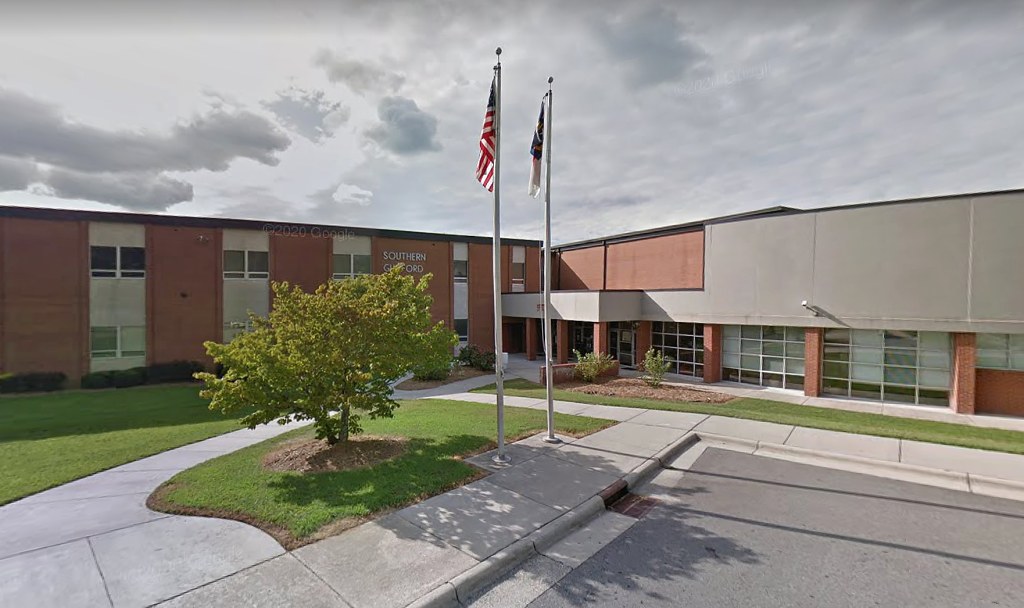 4 stars.
4 stars.
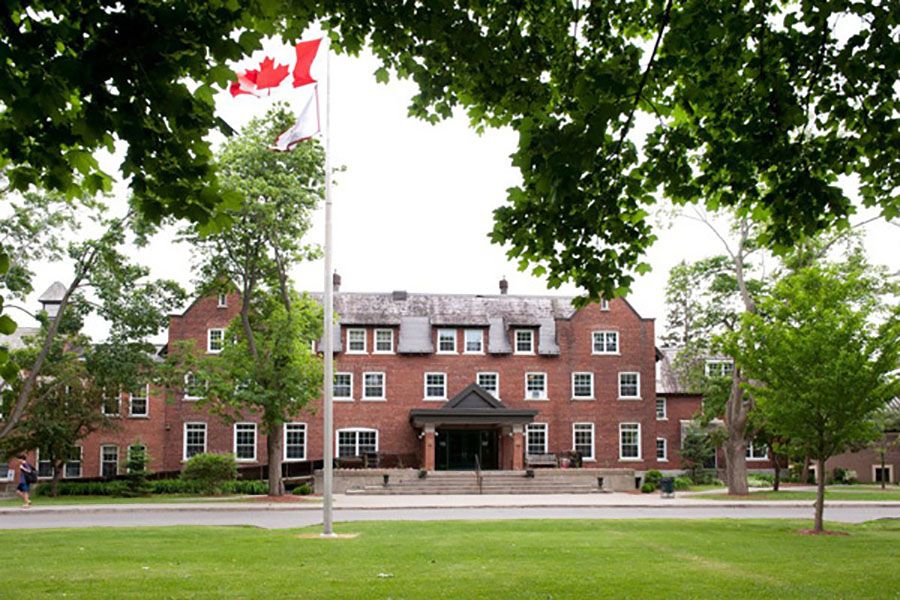 It is a sober community that provides a safe alternative environment for teens who are struggling with addiction…. Read 3 reviews
It is a sober community that provides a safe alternative environment for teens who are struggling with addiction…. Read 3 reviews PSEO has prepared me to attend college and success academically. Venture Academy also has AP classes that they offer to high school students. These classes are challenging, but well worth taking because they can prepare you for the rigorous courses you might take in college…. Read 6 reviews
PSEO has prepared me to attend college and success academically. Venture Academy also has AP classes that they offer to high school students. These classes are challenging, but well worth taking because they can prepare you for the rigorous courses you might take in college…. Read 6 reviews And the teachers there are very welcoming and nice. What I would like to see changed is to add football to the sports they have. And the lunch could be better…. Read 6 reviews
And the teachers there are very welcoming and nice. What I would like to see changed is to add football to the sports they have. And the lunch could be better…. Read 6 reviews … Read 4 reviews
… Read 4 reviews I made many new friends and connections with the community. During our homeroom hour (advisory class), we are given lessons about what we plan to do once we graduate. Just as in its name, HCPA has definitely prepared me for college. The counselors and teachers at HCPA have made the college application process a drive in the park. I would not have been able to do it without them. Overall, teachers at HCPA are one of a kind. They not only focus on teaching but also focus on building connections with students all while having fun. They make learning fun. I’ve always felt safe inside HCPA. Staffs and teachers make us students feel cared for and prioritized…. Read 112 reviews
I made many new friends and connections with the community. During our homeroom hour (advisory class), we are given lessons about what we plan to do once we graduate. Just as in its name, HCPA has definitely prepared me for college. The counselors and teachers at HCPA have made the college application process a drive in the park. I would not have been able to do it without them. Overall, teachers at HCPA are one of a kind. They not only focus on teaching but also focus on building connections with students all while having fun. They make learning fun. I’ve always felt safe inside HCPA. Staffs and teachers make us students feel cared for and prioritized…. Read 112 reviews …
… We’ve enjoyed the process of joining this school, and look forward to many years at ISM with our children growing with the support of our school…. Read 62 reviews
We’ve enjoyed the process of joining this school, and look forward to many years at ISM with our children growing with the support of our school…. Read 62 reviews
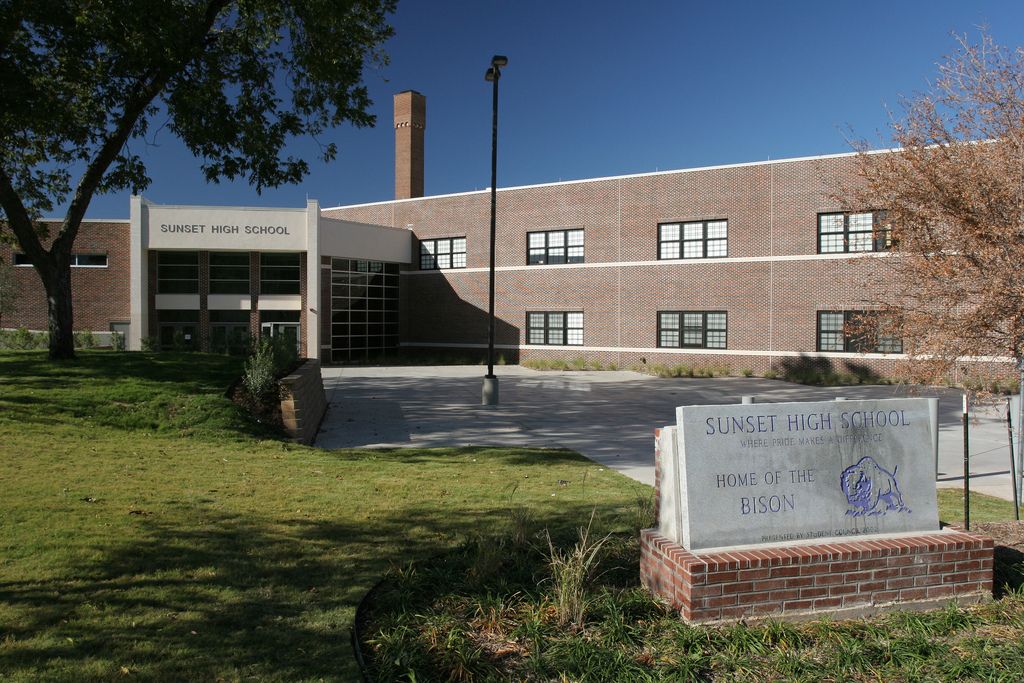 Paul and School School [34]
Paul and School School [34]  University of St. Thomas is a private Catholic Liberal Arts University in Minnesota – University of St. Thomas Thomas: Home
University of St. Thomas is a private Catholic Liberal Arts University in Minnesota – University of St. Thomas Thomas: Home 
 Paul.
Paul.  To do this, the school conducts differentiation in mathematics and reading.
To do this, the school conducts differentiation in mathematics and reading.  When teaching mathematics, we work according to the Singapore Mathematics program.
When teaching mathematics, we work according to the Singapore Mathematics program. 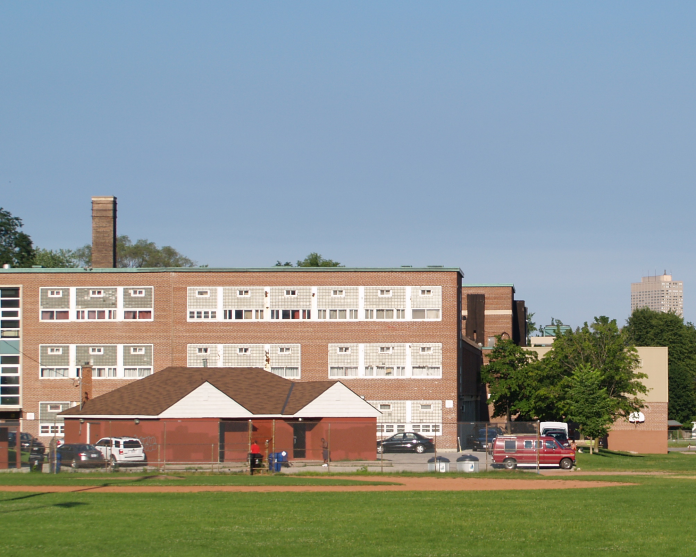 Some start their studies later, having homeschooling experience behind them. In some cases, children arrive at school at a time when the family is disillusioned with the quality of education received at the previous educational institution.
Some start their studies later, having homeschooling experience behind them. In some cases, children arrive at school at a time when the family is disillusioned with the quality of education received at the previous educational institution. 
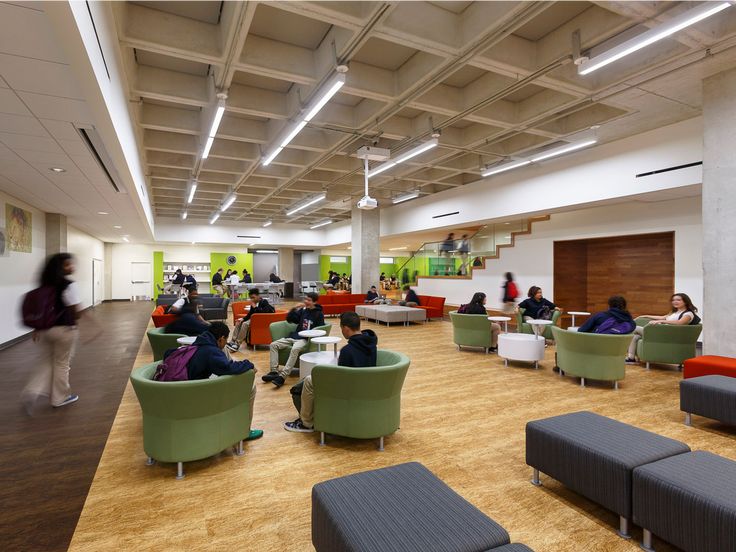

 Within a month, twenty more governors announced their intention to follow his example, and a month and a half later, the White House announced its own plans to reduce classes. Today, 77% of Americans believe that it is much wiser to spend taxpayer money to reduce the number of students in the class than to increase the salaries of teachers. Do you know how rarely 77% of Americans agree?
Within a month, twenty more governors announced their intention to follow his example, and a month and a half later, the White House announced its own plans to reduce classes. Today, 77% of Americans believe that it is much wiser to spend taxpayer money to reduce the number of students in the class than to increase the salaries of teachers. Do you know how rarely 77% of Americans agree?  In other words, one year the class is practically empty, and the next it is overcrowded. The following is the number of students admitted to fifth grade at another Connecticut high school: 90,012
In other words, one year the class is practically empty, and the next it is overcrowded. The following is the number of students admitted to fifth grade at another Connecticut high school: 90,012 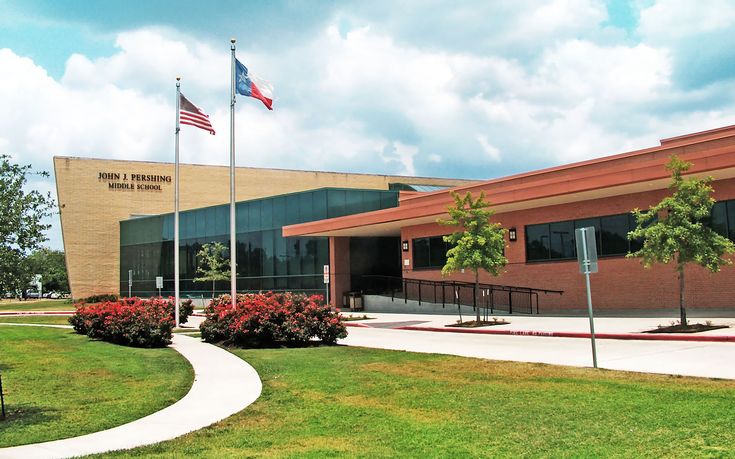 So what do we get when we use the natural experiment of Connecticut and compare the year-to-year results of each child in a small class with those in overcrowded classes? Economist Caroline Hoxby has already compared all elementary schools in Connecticut, and here’s what she found: nothing ! “A lot of studies fail to find a statistically significant effect of changing one policy or another,” Hawksby says. – This does not mean that there was no effect. It’s just that the available data does not allow it to be detected. My research shows that the differences are practically zero. I got absolute zero. In other words, there is no effect.”
So what do we get when we use the natural experiment of Connecticut and compare the year-to-year results of each child in a small class with those in overcrowded classes? Economist Caroline Hoxby has already compared all elementary schools in Connecticut, and here’s what she found: nothing ! “A lot of studies fail to find a statistically significant effect of changing one policy or another,” Hawksby says. – This does not mean that there was no effect. It’s just that the available data does not allow it to be detected. My research shows that the differences are practically zero. I got absolute zero. In other words, there is no effect.”  20%, including Hawksby’s work, showed no effect at all, and the rest provided evidence in favor of all the versions listed, but they are not so convincing as to draw any serious conclusions. A typical class size study usually ends with a paragraph like this:
20%, including Hawksby’s work, showed no effect at all, and the rest provided evidence in favor of all the versions listed, but they are not so convincing as to draw any serious conclusions. A typical class size study usually ends with a paragraph like this:  Finally, we can completely rule out any causal effect of class size on student achievement in two countries: Japan and Singapore.
Finally, we can completely rule out any causal effect of class size on student achievement in two countries: Japan and Singapore.  ” . However, the facts show that what we perceive as an advantage is not such at all [6].
” . However, the facts show that what we perceive as an advantage is not such at all [6]. 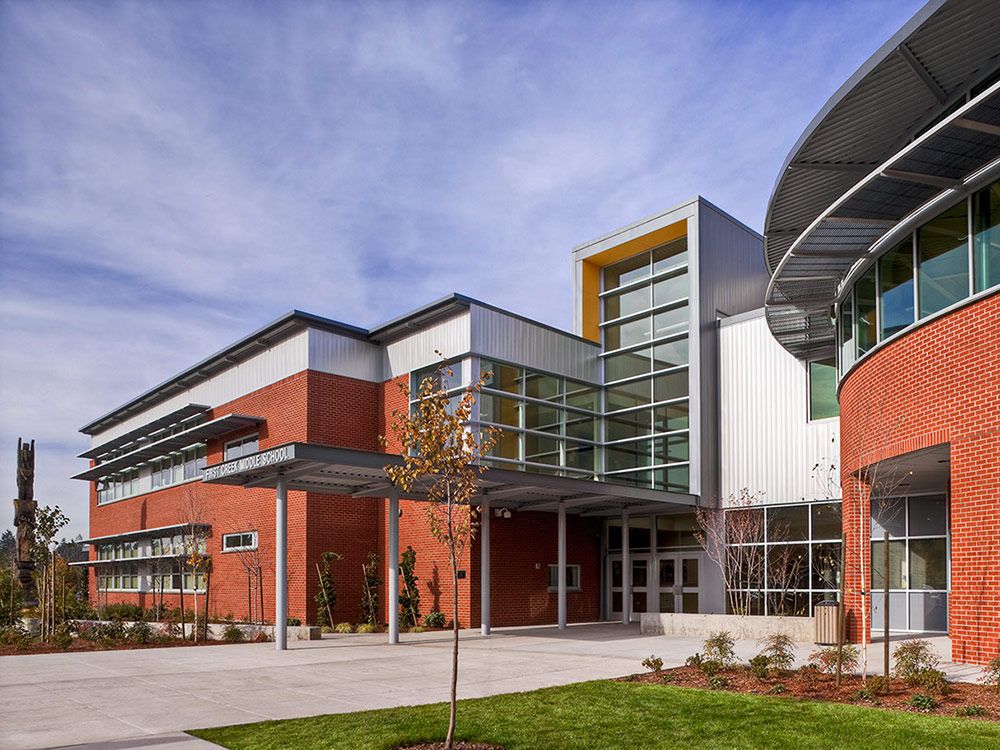 ” Then he was ten years old. By the age of eleven, he had $600 in his bank account, all self-made. In the 1950s, which was his childhood, this amount was equivalent to $5,000 today. “I didn’t have the money to make my dream come true,” he said with a shrug, as if it wasn’t surprising that an eleven-year-old boy knew exactly what he wanted. Any fool can spend money. But to earn, save and postpone pleasure for the future … This is how you learn to truly appreciate them.
” Then he was ten years old. By the age of eleven, he had $600 in his bank account, all self-made. In the 1950s, which was his childhood, this amount was equivalent to $5,000 today. “I didn’t have the money to make my dream come true,” he said with a shrug, as if it wasn’t surprising that an eleven-year-old boy knew exactly what he wanted. Any fool can spend money. But to earn, save and postpone pleasure for the future … This is how you learn to truly appreciate them.  But if you need light to work 24 hours a day, please.”
But if you need light to work 24 hours a day, please.”  He attended business school and law school in New York and lived in a poor neighborhood in Brooklyn to save money. After graduation, he got a job in Hollywood, then moved to a higher paying position, then climbed the career ladder one more step. Side deals, bonuses, a streak of outstanding successes—and now he has a hangar-sized house in Beverly Hills, his own jet, a Ferrari in the garage, and a gate at the head of a seemingly endless driveway that looks like it was borrowed from some medieval European castle. He knows a lot about money. And he knows their value. And all because he went to a good school on the streets of his native Minneapolis and learned to understand the value and meaning of money.
He attended business school and law school in New York and lived in a poor neighborhood in Brooklyn to save money. After graduation, he got a job in Hollywood, then moved to a higher paying position, then climbed the career ladder one more step. Side deals, bonuses, a streak of outstanding successes—and now he has a hangar-sized house in Beverly Hills, his own jet, a Ferrari in the garage, and a gate at the head of a seemingly endless driveway that looks like it was borrowed from some medieval European castle. He knows a lot about money. And he knows their value. And all because he went to a good school on the streets of his native Minneapolis and learned to understand the value and meaning of money.  They give a feeling of control over life.
They give a feeling of control over life. 
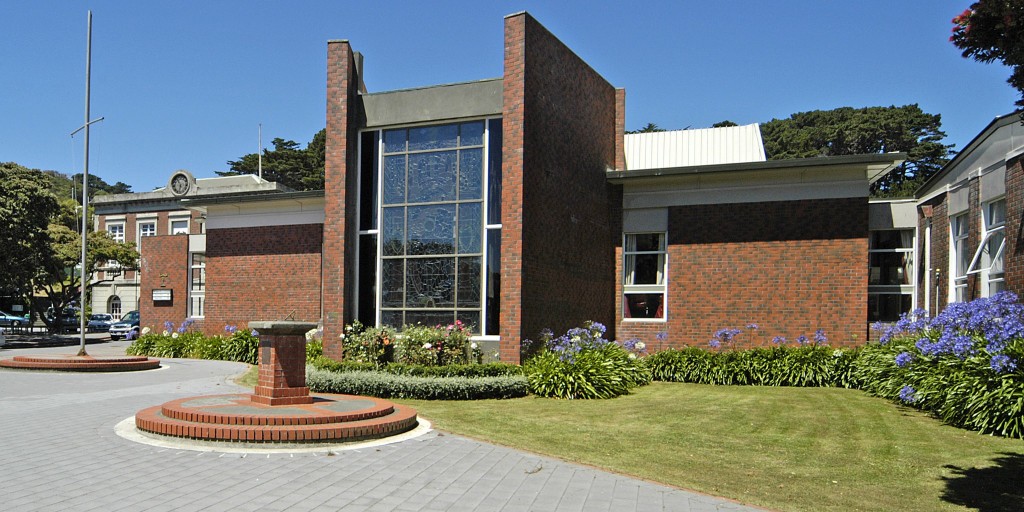
 What is this moment? Happiness scientists say that money stops making people happy at household incomes above about $75,000 a year. After that comes what economists call “diminishing marginal returns.” If your family earns $75,000 and your neighbor earns $100,000, the extra $25,000 means they can afford a slightly better car and go to restaurants a little more often. But they do not make him happier than you and do not help him better cope with the serious and small responsibilities of a good parent. A more correct version of the income versus upbringing graph looks like this:
What is this moment? Happiness scientists say that money stops making people happy at household incomes above about $75,000 a year. After that comes what economists call “diminishing marginal returns.” If your family earns $75,000 and your neighbor earns $100,000, the extra $25,000 means they can afford a slightly better car and go to restaurants a little more often. But they do not make him happier than you and do not help him better cope with the serious and small responsibilities of a good parent. A more correct version of the income versus upbringing graph looks like this:  Some, like the Hollywood mogul, grew up in their historic homeland, in a middle-class neighborhood where poverty was the best motivator and mentor. His father taught him to understand what money is, and instilled such virtues as independence and hard work. But his children live in the New World, in the world of the rich, where other, incomprehensible rules reign. How do you teach a child to “work hard, be independent, understand the meaning of money” if, looking around, he realizes that he will never have to work hard, be independent, or understand the meaning of money? This is why there is a proverb in many world cultures that emphasizes the difficulties of raising children in an atmosphere of wealth. In English, it sounds like “Shirtsleeves to shirtsleeves in three generations” (“From work in the fields to work in the fields through three generations”). The Italians say: “Dalle stelle alle stalle” (“From the stars to the stables”). In Spain it is “Quien no lo tiene, lo hance; u quien lo tiene, lo deshance” (“Who does not have, achieves, who has – destroys” ).
Some, like the Hollywood mogul, grew up in their historic homeland, in a middle-class neighborhood where poverty was the best motivator and mentor. His father taught him to understand what money is, and instilled such virtues as independence and hard work. But his children live in the New World, in the world of the rich, where other, incomprehensible rules reign. How do you teach a child to “work hard, be independent, understand the meaning of money” if, looking around, he realizes that he will never have to work hard, be independent, or understand the meaning of money? This is why there is a proverb in many world cultures that emphasizes the difficulties of raising children in an atmosphere of wealth. In English, it sounds like “Shirtsleeves to shirtsleeves in three generations” (“From work in the fields to work in the fields through three generations”). The Italians say: “Dalle stelle alle stalle” (“From the stars to the stables”). In Spain it is “Quien no lo tiene, lo hance; u quien lo tiene, lo deshance” (“Who does not have, achieves, who has – destroys” ). Wealth carries the seed of self-destruction.
Wealth carries the seed of self-destruction.  “I have to teach them: “Yes, I can buy you this. But I choose not to buy. This is not in line with our values.” At the same time, of course, it is necessary to have values, be able to clearly formulate them and know how to convincingly convey them to the child. All of the above is difficult for any person under any circumstances, but especially for someone who has a Ferrari in the garage, a private jet and a hangar-sized house in Beverly Hills.
“I have to teach them: “Yes, I can buy you this. But I choose not to buy. This is not in line with our values.” At the same time, of course, it is necessary to have values, be able to clearly formulate them and know how to convincingly convey them to the child. All of the above is difficult for any person under any circumstances, but especially for someone who has a Ferrari in the garage, a private jet and a hangar-sized house in Beverly Hills. 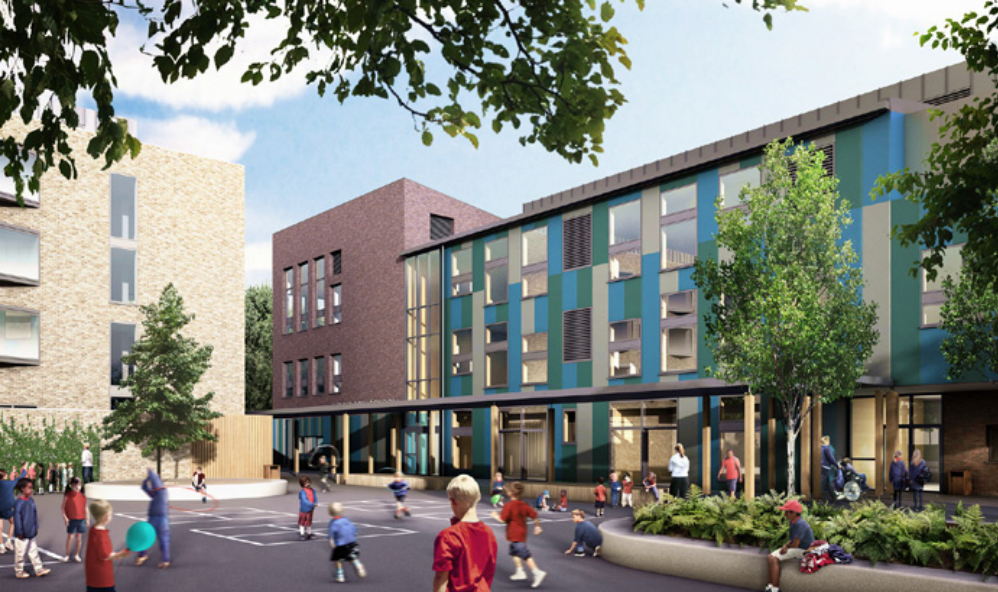

 In the schools that Hawksby analyzed, class size fluctuations were very narrow, between 17-20 and 20-25. When Hawksby says her research turned up nothing, she means that at in this middle range of , she saw no advantage in classes with fewer students. In other words, somewhere between Israel and Connecticut, the effect of class size moves along a curve towards a flat middle, where adding resources to the educational process no longer improves the quality of education.
In the schools that Hawksby analyzed, class size fluctuations were very narrow, between 17-20 and 20-25. When Hawksby says her research turned up nothing, she means that at in this middle range of , she saw no advantage in classes with fewer students. In other words, somewhere between Israel and Connecticut, the effect of class size moves along a curve towards a flat middle, where adding resources to the educational process no longer improves the quality of education. 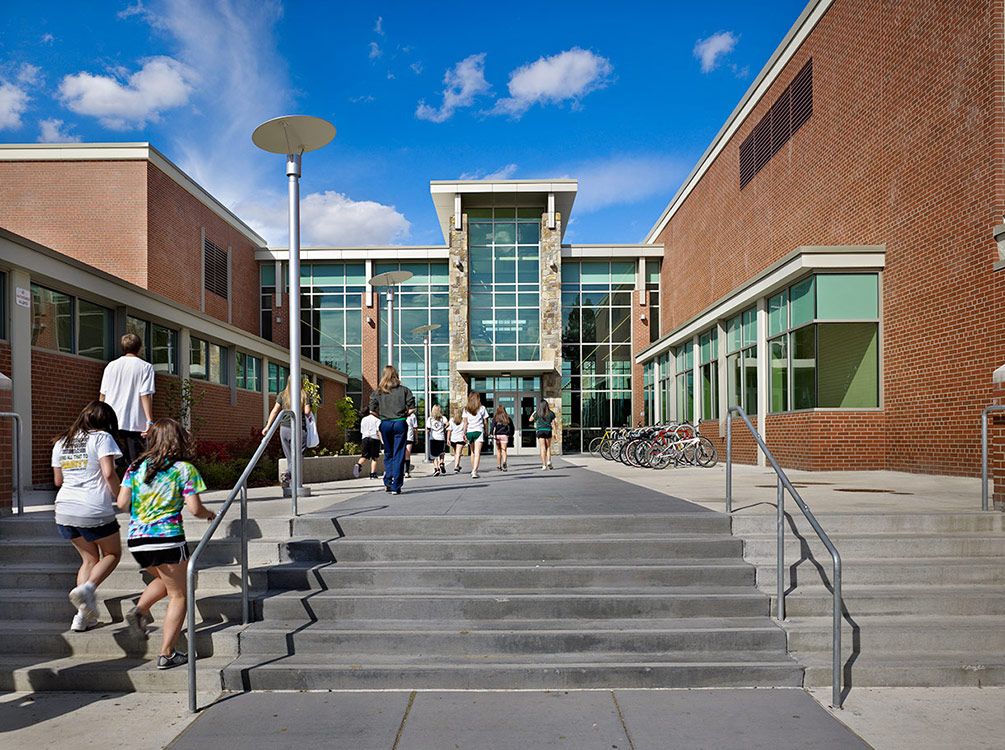 Are you going to devote more time to each patient? Or will you leave at half past seven instead of half past seven to finally have dinner with the kids?
Are you going to devote more time to each patient? Or will you leave at half past seven instead of half past seven to finally have dinner with the kids?  Add six more students to 30, and we loosen the energy ties so much that even the most charismatic teacher will not be able to work miracles all the time.
Add six more students to 30, and we loosen the energy ties so much that even the most charismatic teacher will not be able to work miracles all the time.  As one teacher aptly put it, in a class that is too small, students start acting like “children in the back of a car. Bullies just have nowhere to go from each other.
As one teacher aptly put it, in a class that is too small, students start acting like “children in the back of a car. Bullies just have nowhere to go from each other. 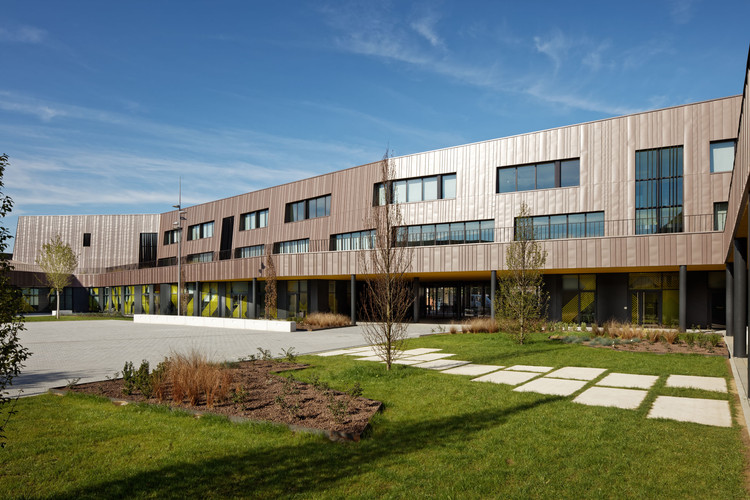 But I was wrong. Shy children became shy regardless of class size. And if the class is too small, then there is not a wide range of opinions among the participants necessary for the discussion to develop. In addition, a very small group is deprived of the energy that arises as a result of friction between people.
But I was wrong. Shy children became shy regardless of class size. And if the class is too small, then there is not a wide range of opinions among the participants necessary for the discussion to develop. In addition, a very small group is deprived of the energy that arises as a result of friction between people.  This will make you feel less isolated and a little more confident.
This will make you feel less isolated and a little more confident.  If there are too few children of this age in the class, it is as if they are put on a muzzle. She didn’t say it out loud, but if someone suddenly decided to build a huge residential area in the field next to the school, she wouldn’t really mind.
If there are too few children of this age in the class, it is as if they are put on a muzzle. She didn’t say it out loud, but if someone suddenly decided to build a huge residential area in the field next to the school, she wouldn’t really mind.  It was one of the best years of her teaching career. The biggest problem for a math teacher for twelve or thirteen year olds is to perceive teaching as a fun activity. And 29 students in one class made this work exciting. “There were still so many peers with whom you can communicate. They were not brewed constantly in the same group. So many opportunities to diversify your experience. And this is a serious task: how to captivate, enrich and encourage a child so that he does not remain passive.
It was one of the best years of her teaching career. The biggest problem for a math teacher for twelve or thirteen year olds is to perceive teaching as a fun activity. And 29 students in one class made this work exciting. “There were still so many peers with whom you can communicate. They were not brewed constantly in the same group. So many opportunities to diversify your experience. And this is a serious task: how to captivate, enrich and encourage a child so that he does not remain passive.  Remembering that year in Meriden, Debrito seemed to be transported back many years. “I liked the noise. I liked listening to them chat. Oh, it was a lot of fun.”
Remembering that year in Meriden, Debrito seemed to be transported back many years. “I liked the noise. I liked listening to them chat. Oh, it was a lot of fun.”  But more likely than not, Hotchkiss has simply fallen into the trap that rich people, rich institutions, and rich countries, the Goliaths, fall too often into. The school assumes that the goods that money can buy always translate into advantages in the real world. Of course, not always. This is the inverted U-curve lesson. It’s good to be bigger and stronger than the enemy. But it is not so pleasant for those who, due to their size and strength, turn into a stationary target for a stone launched at a speed of 25 km / h. Goliath did not win the duel because he was is too big for . The Hollywood man didn’t become the father he wanted to be because he was too rich. Hotchkiss is not the school it wants to be because its classes are too small. We all assume that it is in our interest to become bigger, stronger, and richer. Vivek Ranadive, a shepherd named David, and the principal of Shepog Valley High School can argue with that.
But more likely than not, Hotchkiss has simply fallen into the trap that rich people, rich institutions, and rich countries, the Goliaths, fall too often into. The school assumes that the goods that money can buy always translate into advantages in the real world. Of course, not always. This is the inverted U-curve lesson. It’s good to be bigger and stronger than the enemy. But it is not so pleasant for those who, due to their size and strength, turn into a stationary target for a stone launched at a speed of 25 km / h. Goliath did not win the duel because he was is too big for . The Hollywood man didn’t become the father he wanted to be because he was too rich. Hotchkiss is not the school it wants to be because its classes are too small. We all assume that it is in our interest to become bigger, stronger, and richer. Vivek Ranadive, a shepherd named David, and the principal of Shepog Valley High School can argue with that. 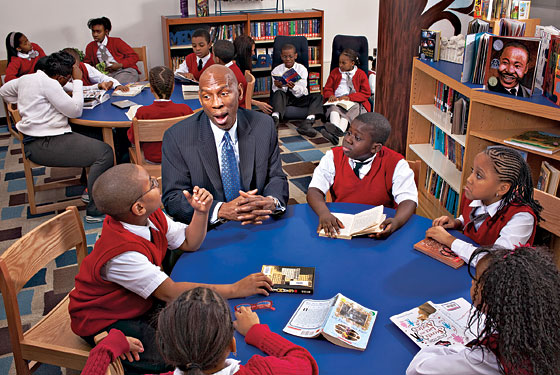

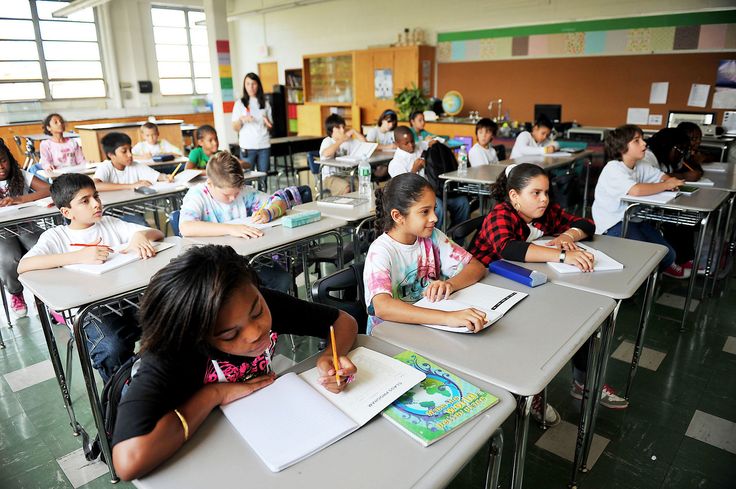 Sociology deals with statistics. Directors and owners of television channels are concerned about viewer ratings. We hide behind our ID
Sociology deals with statistics. Directors and owners of television channels are concerned about viewer ratings. We hide behind our ID  .. And in the beginning there were cockroaches. A lot of cockroaches…
.. And in the beginning there were cockroaches. A lot of cockroaches…
 But in fact, she, as they say, has a place to be. An atheist comes to the rabbi and says:
But in fact, she, as they say, has a place to be. An atheist comes to the rabbi and says: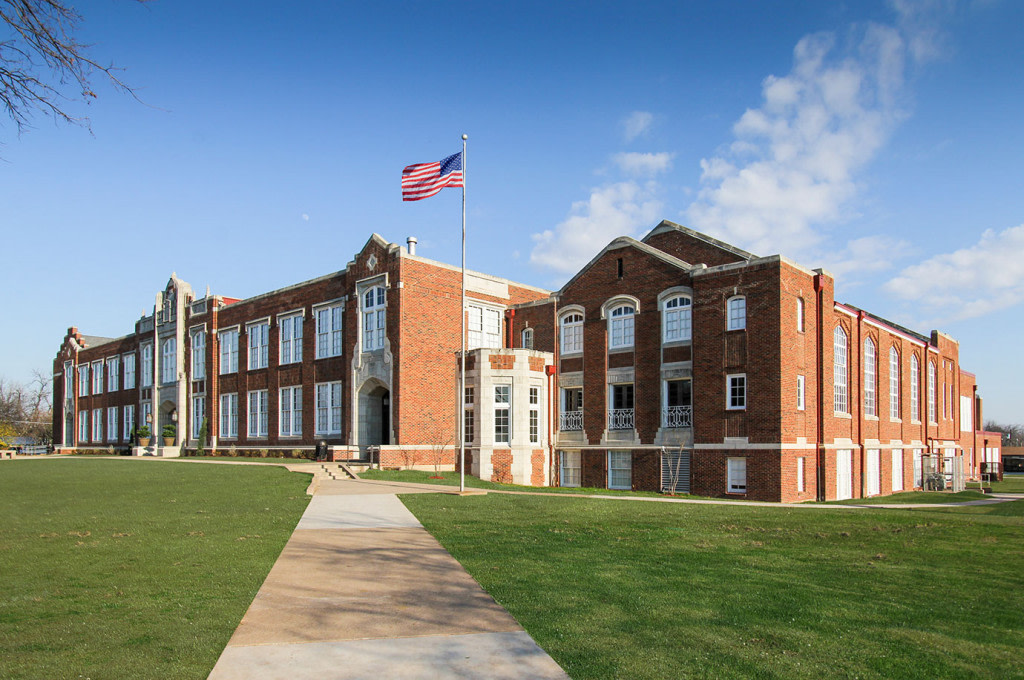 [3] Most of the city lies east of the Mississippi River at the confluence with the Minnesota River. Minneapolis, the states’ largest city, lies across the river to the west. Together they are known as the “Twin Cities”. They form the backbone of the Minneapolis-St. Paul area of the city, home to more than 3.6 million people, and is the third largest in the Midwest. [6]
[3] Most of the city lies east of the Mississippi River at the confluence with the Minnesota River. Minneapolis, the states’ largest city, lies across the river to the west. Together they are known as the “Twin Cities”. They form the backbone of the Minneapolis-St. Paul area of the city, home to more than 3.6 million people, and is the third largest in the Midwest. [6]  [10] St. Paul and Minneapolis are also known for their high literacy rates. [11]
[10] St. Paul and Minneapolis are also known for their high literacy rates. [11] 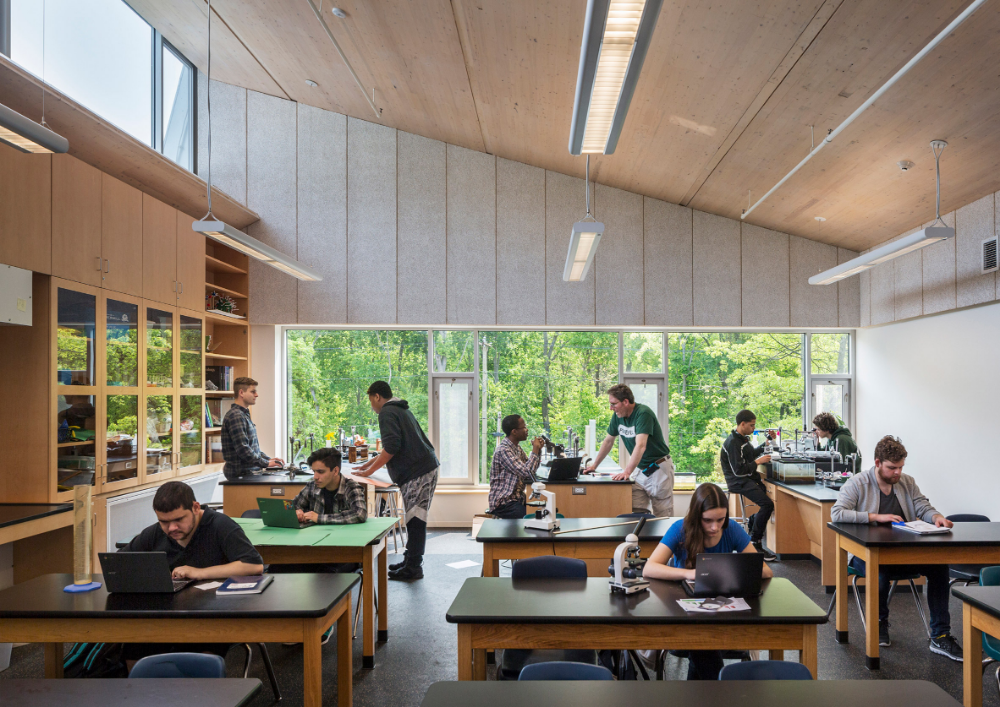 ” [12] Although Pig’s Eye was no longer referred to as a settlement, it came to refer to the wetlands and two islands south of the city centre. The original city was spread over two 240-acre sites. [13] The first application was filed in the territory of Wisconsin, the second – in the territory of Minnesota. The boundaries were Elm Street, 7th Street, Wakuta Street, and the river. Between 1849 and 1887 the borders were expanded 14 times to their current size. As the region grew, the city became the seat of an archdiocese that built St. Paul’s Cathedral, overlooking the city centre.
” [12] Although Pig’s Eye was no longer referred to as a settlement, it came to refer to the wetlands and two islands south of the city centre. The original city was spread over two 240-acre sites. [13] The first application was filed in the territory of Wisconsin, the second – in the territory of Minnesota. The boundaries were Elm Street, 7th Street, Wakuta Street, and the river. Between 1849 and 1887 the borders were expanded 14 times to their current size. As the region grew, the city became the seat of an archdiocese that built St. Paul’s Cathedral, overlooking the city centre.  1 Interstate and highway
1 Interstate and highway  The Menominee language Saint Paul was called Sanepan-Menikan , meaning “village of ribbons, silk or satin”, indicating its role in trade throughout the region after the introduction of European goods. [19]
The Menominee language Saint Paul was called Sanepan-Menikan , meaning “village of ribbons, silk or satin”, indicating its role in trade throughout the region after the introduction of European goods. [19]  [22] [23] Fur traders, explorers and missionaries came here to protect the fort. Many of the settlers were French Canadians who long predated the American pioneers. But when the whiskey trade flourished, the military forbade the settlers from visiting the lands controlled by the fort. Pierre “Pig’s Eye” Parrant, a former fur trader turned bootlegger who particularly annoyed officials, [24] set up his tavern outside the military reservation, upriver from Lambert’s Landing. [18] By the early 1840s, the community had become a trading center and destination for pioneers heading west. Locals named the area Pig’s Eye (French: L’il du Cochon ) or Pig’s Eye Landing after Parrant’s popular tavern. [24] In 1842, a band of Ojibwes attacked the camp of Kaposia, where a stream emptied into wetlands two miles south of Wakan Tipi. [25] The creek was later named Battle Creek and is today a parkland.
[22] [23] Fur traders, explorers and missionaries came here to protect the fort. Many of the settlers were French Canadians who long predated the American pioneers. But when the whiskey trade flourished, the military forbade the settlers from visiting the lands controlled by the fort. Pierre “Pig’s Eye” Parrant, a former fur trader turned bootlegger who particularly annoyed officials, [24] set up his tavern outside the military reservation, upriver from Lambert’s Landing. [18] By the early 1840s, the community had become a trading center and destination for pioneers heading west. Locals named the area Pig’s Eye (French: L’il du Cochon ) or Pig’s Eye Landing after Parrant’s popular tavern. [24] In 1842, a band of Ojibwes attacked the camp of Kaposia, where a stream emptied into wetlands two miles south of Wakan Tipi. [25] The creek was later named Battle Creek and is today a parkland. In the 1840s-70s. The Métis brought their bulls and Red River carts down Kellogg Street before boarding Lambert on a buffalo ship hiding in the market from the Red River north. Saint Paul was the southernmost stop on the Red River Trails. In 1840, Pierre Bottineau became a resident of St. Paul with a claim to the center of the settlement. [26]
In the 1840s-70s. The Métis brought their bulls and Red River carts down Kellogg Street before boarding Lambert on a buffalo ship hiding in the market from the Red River north. Saint Paul was the southernmost stop on the Red River Trails. In 1840, Pierre Bottineau became a resident of St. Paul with a claim to the center of the settlement. [26]  Paul as its capital. The US Army built the first improved road in the territory in 1849 from Point Douglas, Cottage Grove, Red Rock, St. Paul, St. Anthony to Fort Ripley. [30] In 1857, the territorial legislature voted to move the capital to St. Peter’s, but Joe Rolette, the territorial legislator, stole the physical text of the approved bill and went into hiding, preventing its progress. [31] On May 11, 1858, Minnesota was admitted to the union as the 32nd state, with Saint Paul still the capital. Shortly thereafter, the country was torn apart by civil war. When the state learned that Governor Ramsey had volunteered the regiment to fight the south, communities across the state raised companies of volunteers for the regiment. St. Paul contributed to the creation of Companies A and C. 1st Minnesota Infantry Regiment.
Paul as its capital. The US Army built the first improved road in the territory in 1849 from Point Douglas, Cottage Grove, Red Rock, St. Paul, St. Anthony to Fort Ripley. [30] In 1857, the territorial legislature voted to move the capital to St. Peter’s, but Joe Rolette, the territorial legislator, stole the physical text of the approved bill and went into hiding, preventing its progress. [31] On May 11, 1858, Minnesota was admitted to the union as the 32nd state, with Saint Paul still the capital. Shortly thereafter, the country was torn apart by civil war. When the state learned that Governor Ramsey had volunteered the regiment to fight the south, communities across the state raised companies of volunteers for the regiment. St. Paul contributed to the creation of Companies A and C. 1st Minnesota Infantry Regiment.  The natural geography was the main reason why the city became a landing. The area was the last available unloading point for boats heading upriver from the rocky bluffs of the Mississippi River valley. During this period St. Paul was called “The Last City of the East”. [32] Industrialist James J. Hill built his railroad empire into the Great Northern Railroad and Northern Pacific Railroad, both headquartered in St. Paul before merging with Burlington Northern. Today they are part of the BNSF railway. [32]
The natural geography was the main reason why the city became a landing. The area was the last available unloading point for boats heading upriver from the rocky bluffs of the Mississippi River valley. During this period St. Paul was called “The Last City of the East”. [32] Industrialist James J. Hill built his railroad empire into the Great Northern Railroad and Northern Pacific Railroad, both headquartered in St. Paul before merging with Burlington Northern. Today they are part of the BNSF railway. [32]  Of these, only the 13th was deployed to the Philippines. Companies C, D, E and H were from Saint Paul and saw heavy fighting in Manila. [33]
Of these, only the 13th was deployed to the Philippines. Companies C, D, E and H were from Saint Paul and saw heavy fighting in Manila. [33]  In 1930, the local mob even agreed that Tom Brown would be the new police chief of St. Paul. The “agreement” lasted until 1935. [34] At that time the Apostle Paul was greeting Al Capone, [35] John Dillinger, Billy Frechette, Ma Barker, Baby Face Nelson, Alvin Karpis, Machine Gun Kelly, Kid Kann and many of their Irish associates. Karpis said, “Probably never before in the United States has there been such a complete gathering of criminals in one room as there was at the Green Lantern on New Year’s Eve in 1931. U.S. Penitentiary. I was blinded.” [36] Bonnie and Clyde are also known to have entered the city, according to crime historian Paul Maccabee, the only criminal to visit St. Paul during this period is not recorded.0004 [37] The events of 1935 changed the St. Paul Police Department and closed the open doors of St. Paul. [34]
In 1930, the local mob even agreed that Tom Brown would be the new police chief of St. Paul. The “agreement” lasted until 1935. [34] At that time the Apostle Paul was greeting Al Capone, [35] John Dillinger, Billy Frechette, Ma Barker, Baby Face Nelson, Alvin Karpis, Machine Gun Kelly, Kid Kann and many of their Irish associates. Karpis said, “Probably never before in the United States has there been such a complete gathering of criminals in one room as there was at the Green Lantern on New Year’s Eve in 1931. U.S. Penitentiary. I was blinded.” [36] Bonnie and Clyde are also known to have entered the city, according to crime historian Paul Maccabee, the only criminal to visit St. Paul during this period is not recorded.0004 [37] The events of 1935 changed the St. Paul Police Department and closed the open doors of St. Paul. [34]  78 million ($50.65 million today) in damage and blowing off the High Bridge. [38]
78 million ($50.65 million today) in damage and blowing off the High Bridge. [38]  The loss of this African American enclave drew attention to racial segregation and unequal housing in Northern cities. [41] The annual Days of Rondo holiday commemorates the African American community. [42]
The loss of this African American enclave drew attention to racial segregation and unequal housing in Northern cities. [41] The annual Days of Rondo holiday commemorates the African American community. [42]  [45]
[45] .jpg) The city’s largest lakes are Piggy’s Eye Lake, which is part of the Mississippi, Lake Phalene, and Lake Como. According to the US Census Bureau, the city has a total area of 56.18 square miles (145.51 km2). 2 ), of which 51.98 square miles (134.63 km 2 ) is land and 4.20 square miles (10.88 km 2 ) is water. [47]
The city’s largest lakes are Piggy’s Eye Lake, which is part of the Mississippi, Lake Phalene, and Lake Como. According to the US Census Bureau, the city has a total area of 56.18 square miles (145.51 km2). 2 ), of which 51.98 square miles (134.63 km 2 ) is land and 4.20 square miles (10.88 km 2 ) is water. [47] 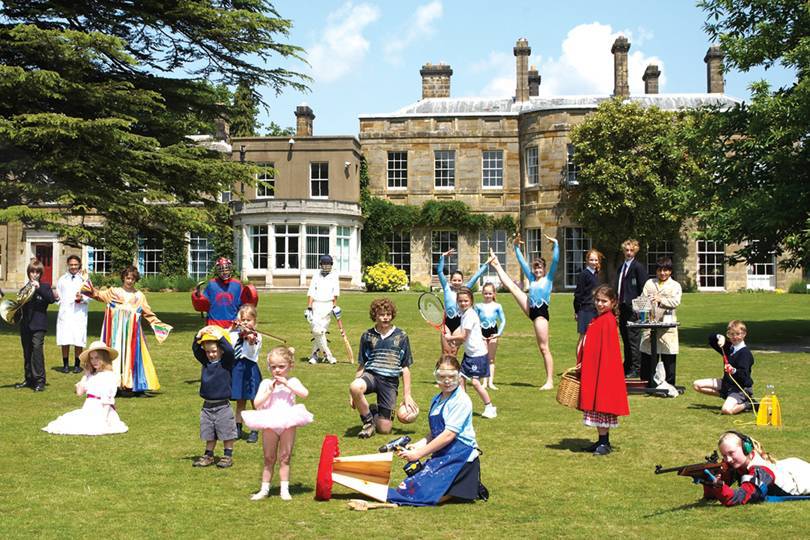 [50] Councils have significant control over land use, have a say in development management, and organize residents. [51] Boundaries are adjusted according to population changes; as such, they sometimes overlap pre-existing neighborhoods. [52] Although these areas have changed over time, the guards have retained many of their historically significant buildings.
[50] Councils have significant control over land use, have a say in development management, and organize residents. [51] Boundaries are adjusted according to population changes; as such, they sometimes overlap pre-existing neighborhoods. [52] Although these areas have changed over time, the guards have retained many of their historically significant buildings.  05 °F (8.36 °C), giving the Minneapolis and Saint Paul metropolitan area the coldest average annual temperature of any major metropolitan area in the region. continental US
05 °F (8.36 °C), giving the Minneapolis and Saint Paul metropolitan area the coldest average annual temperature of any major metropolitan area in the region. continental US  A large group settled in the Swedish Hollow, which later became home to Poles, Italians and Mexicans. The last Swedes moved down St. Paul’s East Side along Payne Avenue at 1950s [62]
A large group settled in the Swedish Hollow, which later became home to Poles, Italians and Mexicans. The last Swedes moved down St. Paul’s East Side along Payne Avenue at 1950s [62]  [66] [67]
[66] [67]  Pacific Islander Americans accounted for less than 0.1%. People of other races made up 3.4%, of which 0.2% were non-Hispanic. Individuals from two or more races made up 3.1%, of which 2.6% were non-Hispanic. In addition, Hispanics and Latinos accounted for 8.7%.
Pacific Islander Americans accounted for less than 0.1%. People of other races made up 3.4%, of which 0.2% were non-Hispanic. Individuals from two or more races made up 3.1%, of which 2.6% were non-Hispanic. In addition, Hispanics and Latinos accounted for 8.7%.  The racial makeup of the city was 60.1% White, 15.7% African American, 1.1% Native American, 15.0% Asian, 0.1%. Pacific Islander, 3.9% from other races and 4.2% from two or more races. Hispanics or Latinos of any race were 9.6% of the population.
The racial makeup of the city was 60.1% White, 15.7% African American, 1.1% Native American, 15.0% Asian, 0.1%. Pacific Islander, 3.9% from other races and 4.2% from two or more races. Hispanics or Latinos of any race were 9.6% of the population. 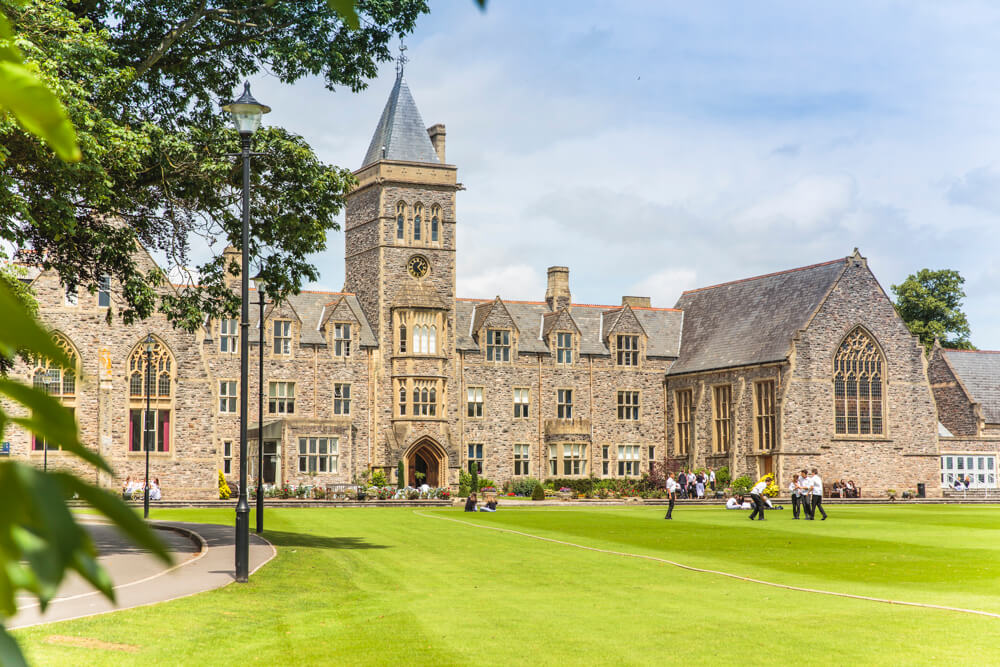 1% female.
1% female. 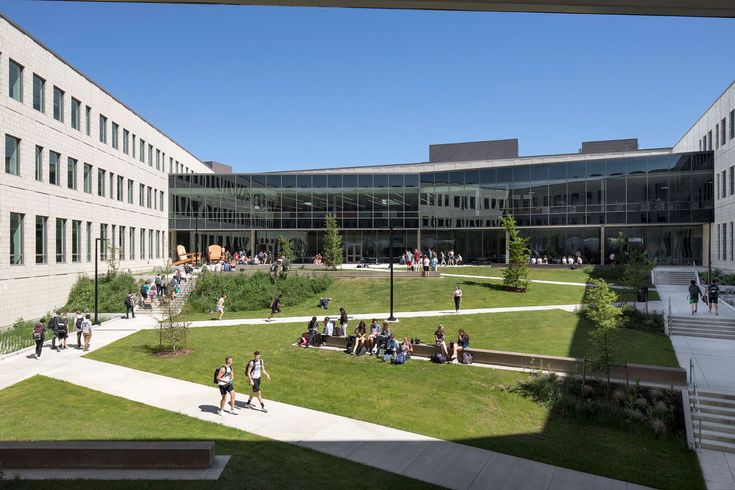 1, the Mississippi River, generating hydroelectric power. [75] The area is currently being cleared of buildings and checked for contamination in preparation for redevelopment. [76] The lead developer, Ryan, has released a proposed set of zoning changes that will determine how the land will be used. [77]
1, the Mississippi River, generating hydroelectric power. [75] The area is currently being cleared of buildings and checked for contamination in preparation for redevelopment. [76] The lead developer, Ryan, has released a proposed set of zoning changes that will determine how the land will be used. [77]  C. Hutchinson designed the ice castle in Montreal and was hired to design the first St. Paul’s Cathedral. [79] The event has already been held 135 times with an attendance of 350,000 people. It includes an ice sculpting contest, a snow sculpture contest, a medallion treasure hunt, food, entertainment and an ice palace whenever possible. [80] The Como Zoo and Conservatory and the adjoining Japanese Garden are popular all year round. The historic Landmark Center in downtown St. Paul hosts cultural and arts organizations. Recreational sites in the city include: Indian Mounds Park, Battle Creek Regional Park, Harriet Island Regional Park, Highland Park, the Wabasha Street Caves, Lake Como, Lake Phalene, and Rice Park, as well as several sites adjacent to the Mississippi River . The Minnesota Irish Fair is held annually at the Pavilion in Harriet Island Square. The country’s largest American Hmong sports festival, the Freedom Festival, is held the first weekend of July at McMurray Stadium next to Como Park.
C. Hutchinson designed the ice castle in Montreal and was hired to design the first St. Paul’s Cathedral. [79] The event has already been held 135 times with an attendance of 350,000 people. It includes an ice sculpting contest, a snow sculpture contest, a medallion treasure hunt, food, entertainment and an ice palace whenever possible. [80] The Como Zoo and Conservatory and the adjoining Japanese Garden are popular all year round. The historic Landmark Center in downtown St. Paul hosts cultural and arts organizations. Recreational sites in the city include: Indian Mounds Park, Battle Creek Regional Park, Harriet Island Regional Park, Highland Park, the Wabasha Street Caves, Lake Como, Lake Phalene, and Rice Park, as well as several sites adjacent to the Mississippi River . The Minnesota Irish Fair is held annually at the Pavilion in Harriet Island Square. The country’s largest American Hmong sports festival, the Freedom Festival, is held the first weekend of July at McMurray Stadium next to Como Park.
 [82] Other notable residents include writer F. Scott Fitzgerald and playwright August Wilson, who directed many of the ten plays in his Pittsburgh Cycle at the local Penumbra Theatre. [83]
[82] Other notable residents include writer F. Scott Fitzgerald and playwright August Wilson, who directed many of the ten plays in his Pittsburgh Cycle at the local Penumbra Theatre. [83]  Bands and performers such as the Fantastic Merlins, Dean Magraw/Davu Seru, Merciless Ghosts and Willie Murphy are regulars. The Lawn Club at Midway has been a landmark in the music scene since 1940s. [86] St. Paul is also home to the world famous Rose Ensemble. [87] As an Irish stronghold, the city boasts popular Irish live music pubs such as the Shamrocks, The Dubliner and O’Gara’s. The world-famous St. Paul Chamber Orchestra is the country’s only full-time professional chamber orchestra. [88] The Minnesota Centennial Showboat on the Mississippi River began in 1958 with a celebration of Minnesota’s first centenary. [89]
Bands and performers such as the Fantastic Merlins, Dean Magraw/Davu Seru, Merciless Ghosts and Willie Murphy are regulars. The Lawn Club at Midway has been a landmark in the music scene since 1940s. [86] St. Paul is also home to the world famous Rose Ensemble. [87] As an Irish stronghold, the city boasts popular Irish live music pubs such as the Shamrocks, The Dubliner and O’Gara’s. The world-famous St. Paul Chamber Orchestra is the country’s only full-time professional chamber orchestra. [88] The Minnesota Centennial Showboat on the Mississippi River began in 1958 with a celebration of Minnesota’s first centenary. [89]  Hill House, then the Minnesota Transportation Museum, the Minnesota Science Museum, and the Twin City Railroad Museum.
Hill House, then the Minnesota Transportation Museum, the Minnesota Science Museum, and the Twin City Railroad Museum.  Paul the new Hockeytown USA . in 2007. [98]
Paul the new Hockeytown USA . in 2007. [98]  [100] Four famous Major League Baseball players are Saint Paul natives: Hall of Fame outfielder Dave Winfield, Hall of Fame infielder Paul Molitor, Hall of Fame pitcher Jack Morris, and first baseman Joe Mauer. All Black St. Paul Colored Gophers have played four seasons at St. Paul since 1907 to 1911. [101]
[100] Four famous Major League Baseball players are Saint Paul natives: Hall of Fame outfielder Dave Winfield, Hall of Fame infielder Paul Molitor, Hall of Fame pitcher Jack Morris, and first baseman Joe Mauer. All Black St. Paul Colored Gophers have played four seasons at St. Paul since 1907 to 1911. [101]  Bill McGuire and his ownership group, which includes Jim Chill of the Minnesota Twins, Glen Taylor of the Minnesota Timberwolves, former Minnesota Wild investor Glen Nelson and his daughter Wendy Carlson Nelson of the Carlson Hotel Company, intended to build a privately funded football stadium in Downtown Minneapolis near the Minneapolis Farmers Market. But their plan met with serious resistance from the former mayor of Minneapolis. Betsy Hodges, who said her city was “stay tired” after building three stadiums, for the Minnesota Twins, Minnesota Vikings and Minnesota Golden Gophers, over the course of six years. [106] On July 1, 2015, after failing to reach an agreement with the city of Minneapolis, McGuire and his partners turned their attention to Saint Paul. [107]
Bill McGuire and his ownership group, which includes Jim Chill of the Minnesota Twins, Glen Taylor of the Minnesota Timberwolves, former Minnesota Wild investor Glen Nelson and his daughter Wendy Carlson Nelson of the Carlson Hotel Company, intended to build a privately funded football stadium in Downtown Minneapolis near the Minneapolis Farmers Market. But their plan met with serious resistance from the former mayor of Minneapolis. Betsy Hodges, who said her city was “stay tired” after building three stadiums, for the Minnesota Twins, Minnesota Vikings and Minnesota Golden Gophers, over the course of six years. [106] On July 1, 2015, after failing to reach an agreement with the city of Minneapolis, McGuire and his partners turned their attention to Saint Paul. [107]  Paul’s Midway neighborhood, near the intersection of Snelling Avenue and University Avenue. It is midway between downtown St. Paul and downtown Minneapolis. Stadium, Allianz Field, opened in April 2019year and accommodates 19,400 people. [108] The team entered the MLS in 2017. [109]
Paul’s Midway neighborhood, near the intersection of Snelling Avenue and University Avenue. It is midway between downtown St. Paul and downtown Minneapolis. Stadium, Allianz Field, opened in April 2019year and accommodates 19,400 people. [108] The team entered the MLS in 2017. [109] 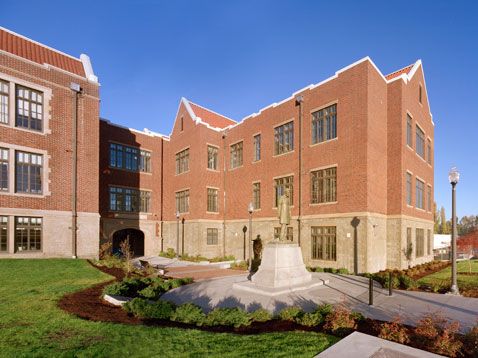 [143] Some of the city’s road design is the result of the curve of the Mississippi River, hilly topography, conflicts between developers of different neighborhoods in the early city, and grand plans only half-realized. Outside of downtown, the roads are less confusing, but most roads are named, rather than numbered, increasing the difficulty for non-natives to navigate. [144]
[143] Some of the city’s road design is the result of the curve of the Mississippi River, hilly topography, conflicts between developers of different neighborhoods in the early city, and grand plans only half-realized. Outside of downtown, the roads are less confusing, but most roads are named, rather than numbered, increasing the difficulty for non-natives to navigate. [144]  [146]
[146]  [151] As of 2003, the yard handled over 1,000 freight cars per day. [151] Both Union Pacific and Burlington North Santa Fe run trains through the yard, though they are not classified at Pig’s Eye. [151] Burlington Northern Santa Fe operates the large Northtown Yard in Minneapolis, which handles about 600 cars per day. [152] There are several other small yards located around the city.
[151] As of 2003, the yard handled over 1,000 freight cars per day. [151] Both Union Pacific and Burlington North Santa Fe run trains through the yard, though they are not classified at Pig’s Eye. [151] Burlington Northern Santa Fe operates the large Northtown Yard in Minneapolis, which handles about 600 cars per day. [152] There are several other small yards located around the city.  Today Holman is a satellite airport operated by the Metropolitan Airports Commission. It is home to Minnesota’s Air National Guard and a flight training school and is tailored to local corporate aviation. There are three runways, with the Holman Field Administration Building and Riverside Hangar on the National Register of Historic Places. [153] The historical importance of the original Northwest Airlines building was realized only after demolition commenced.
Today Holman is a satellite airport operated by the Metropolitan Airports Commission. It is home to Minnesota’s Air National Guard and a flight training school and is tailored to local corporate aviation. There are three runways, with the Holman Field Administration Building and Riverside Hangar on the National Register of Historic Places. [153] The historical importance of the original Northwest Airlines building was realized only after demolition commenced.  Paul
Paul  Perlman (1902–1983), president of New York Central Railroad and successor, Penn Central
Perlman (1902–1983), president of New York Central Railroad and successor, Penn Central  Colonel John Page, US Army, Battle of Chosin Reservoir
Colonel John Page, US Army, Battle of Chosin Reservoir 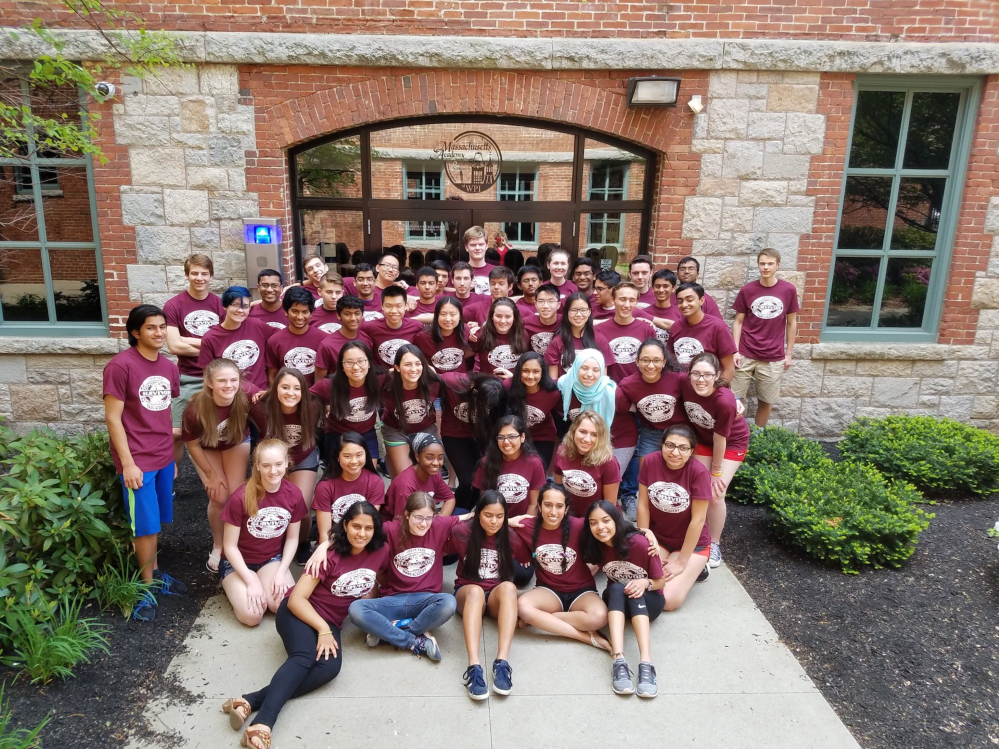 “Minneapolis-Saint Paul Area Daily Climatological History of Temperature, Precipitation, and Snowfall, A Year-by-Year Graphical Portrayal (1820–present)”. Archived from the original on May 18, 2007. Retrieved March 25, 2007. 9 “Saint Paul adds a new sister city, Mogadishu. About a dozen others have this name.” twincities.com . Pioneer of the Twin Cities Press. May 10, 2019. Retrieved October 13, 2020.
“Minneapolis-Saint Paul Area Daily Climatological History of Temperature, Precipitation, and Snowfall, A Year-by-Year Graphical Portrayal (1820–present)”. Archived from the original on May 18, 2007. Retrieved March 25, 2007. 9 “Saint Paul adds a new sister city, Mogadishu. About a dozen others have this name.” twincities.com . Pioneer of the Twin Cities Press. May 10, 2019. Retrieved October 13, 2020.
 1 Government
1 Government 
 8 km 2 . Of these, 78.4 km 2 (land and 5.4 km 2 , or 6.46%, water.
8 km 2 . Of these, 78.4 km 2 (land and 5.4 km 2 , or 6.46%, water.
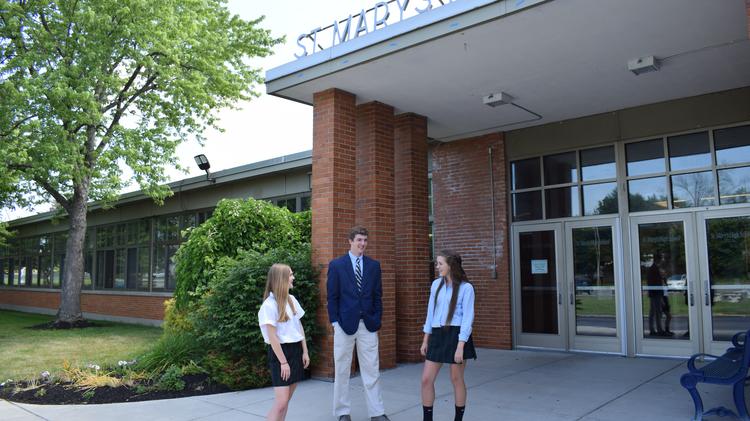 Most recently, a petition was submitted to the municipal council with 3,126 signatures. , so the request will be put to the vote . Since the petition was not filed on time, it is officially considered “dead” until at least the fall of 2006.
Most recently, a petition was submitted to the municipal council with 3,126 signatures. , so the request will be put to the vote . Since the petition was not filed on time, it is officially considered “dead” until at least the fall of 2006.


 The 1970 disaster film Airport was filmed in Minneapolis St. Paul.
The 1970 disaster film Airport was filmed in Minneapolis St. Paul.  Such a “curfew” was introduced due to numerous complaints from residents about the noise of jet engines.
Such a “curfew” was introduced due to numerous complaints from residents about the noise of jet engines. 